 |
||||||
|
HOME
|
US Navy -
ships
|
US Navy - air
units
|
USMC - air
units
|
International
Navies
|
Weapon Systems
|
Special Reports |
||||||
|
US Marine Corps - Marine Fighter Attack
Squadron 312 VMFA-312 'Checkerboards' |
||||||
|
||||||
| 09/24 | ||||||
|
||||||
| images | ||||||
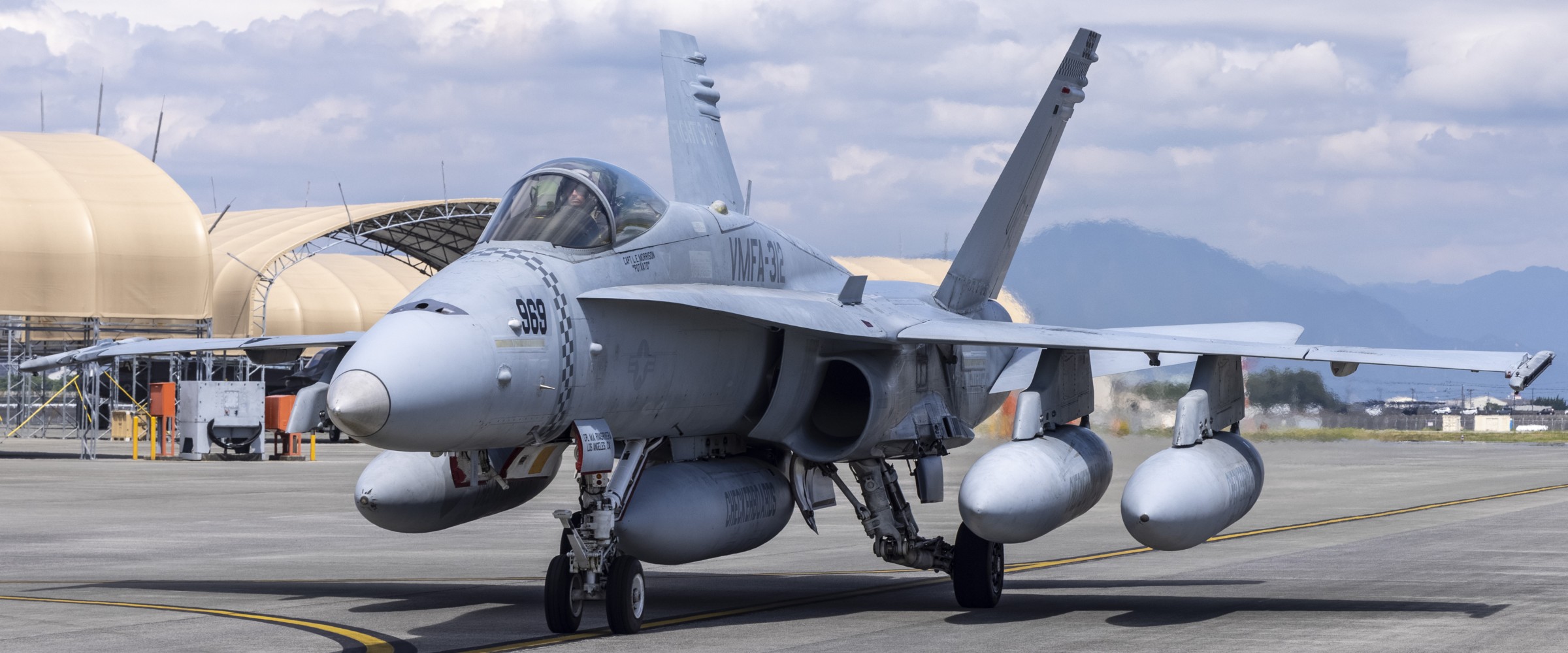 F/A-18D Hornet (VMFA-312) at MCAS Iwakuni, Japan - September 2024 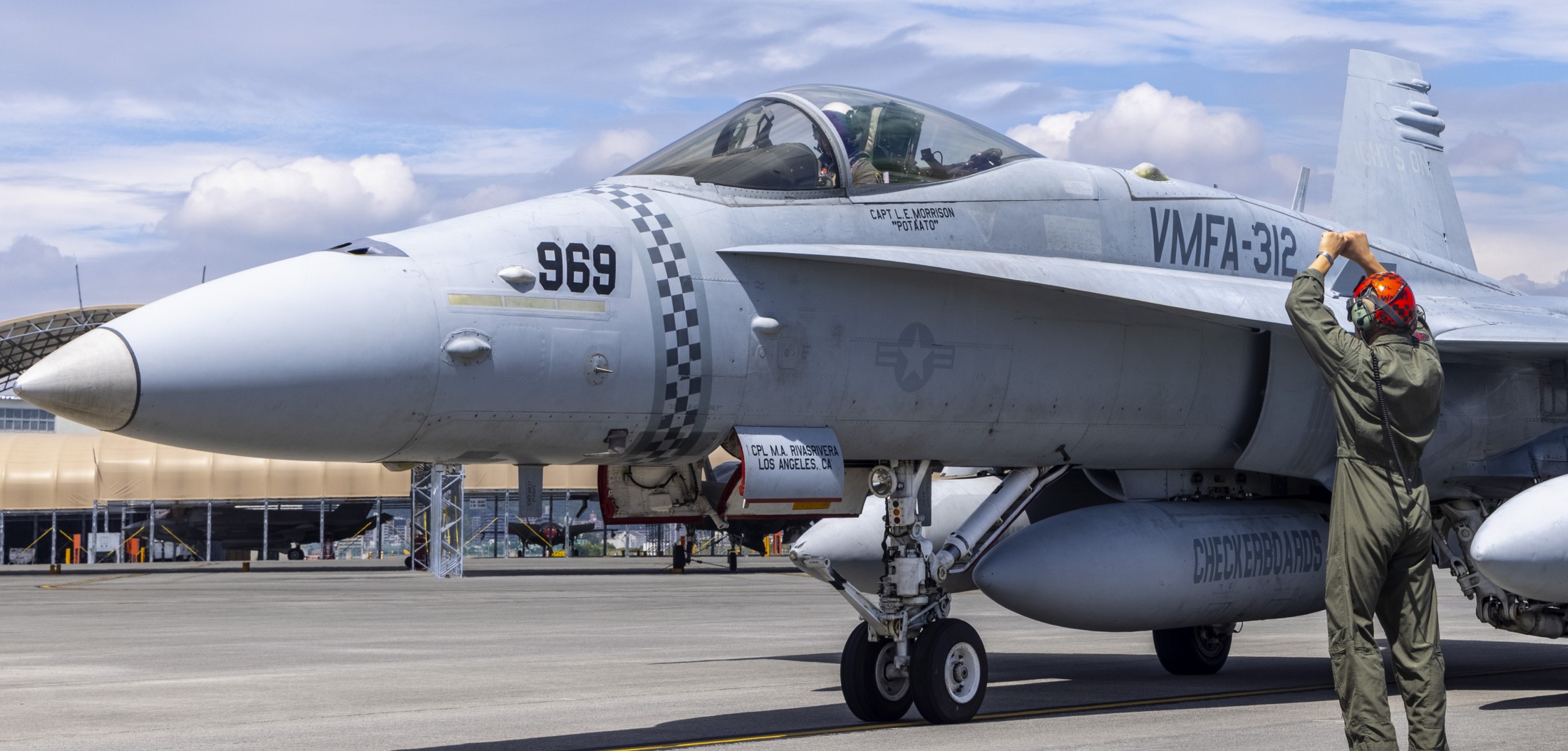 F/A-18C Hornet (VMFA-312) at MCAS Iwakuni, Japan - September 2024  F/A-18D Hornet (VMFA-312) arriving at MCAS Iwakuni, Japan - September 2024  F/A-18D Hornet (VMFA-312) arriving at MCAS Iwakuni, Japan - September 2024 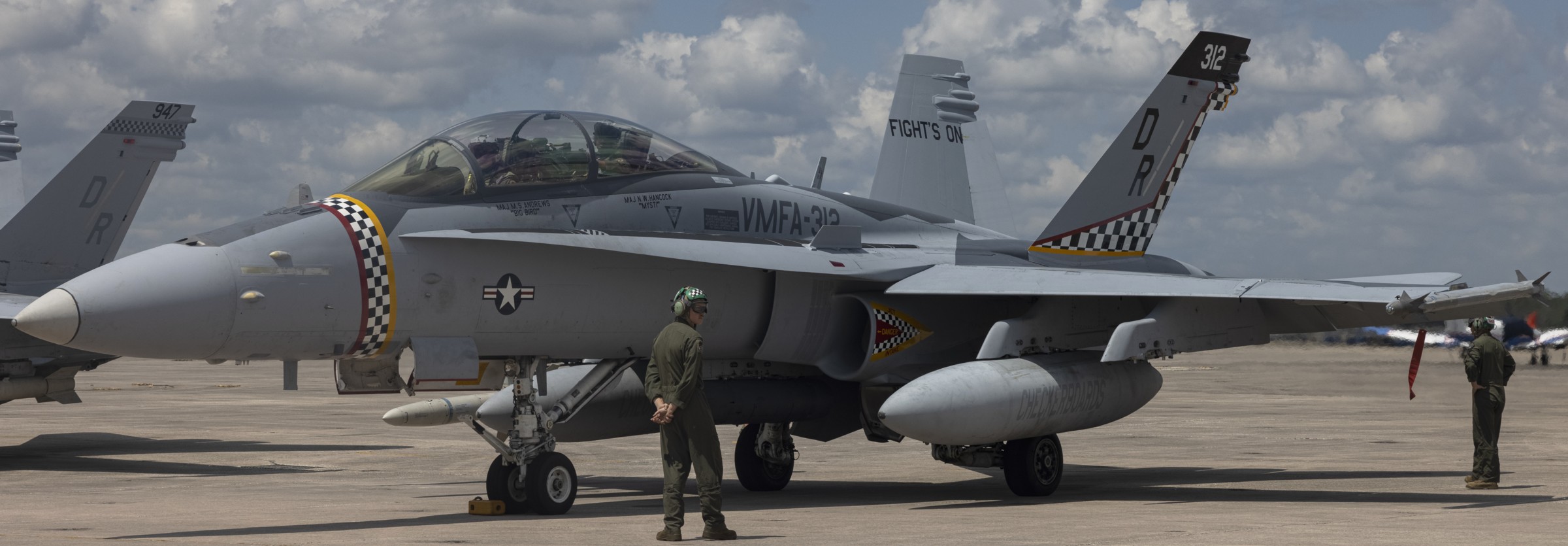 F/A-18D Hornet (VMFA-312) at Cecil Airport, Florida - June 2024 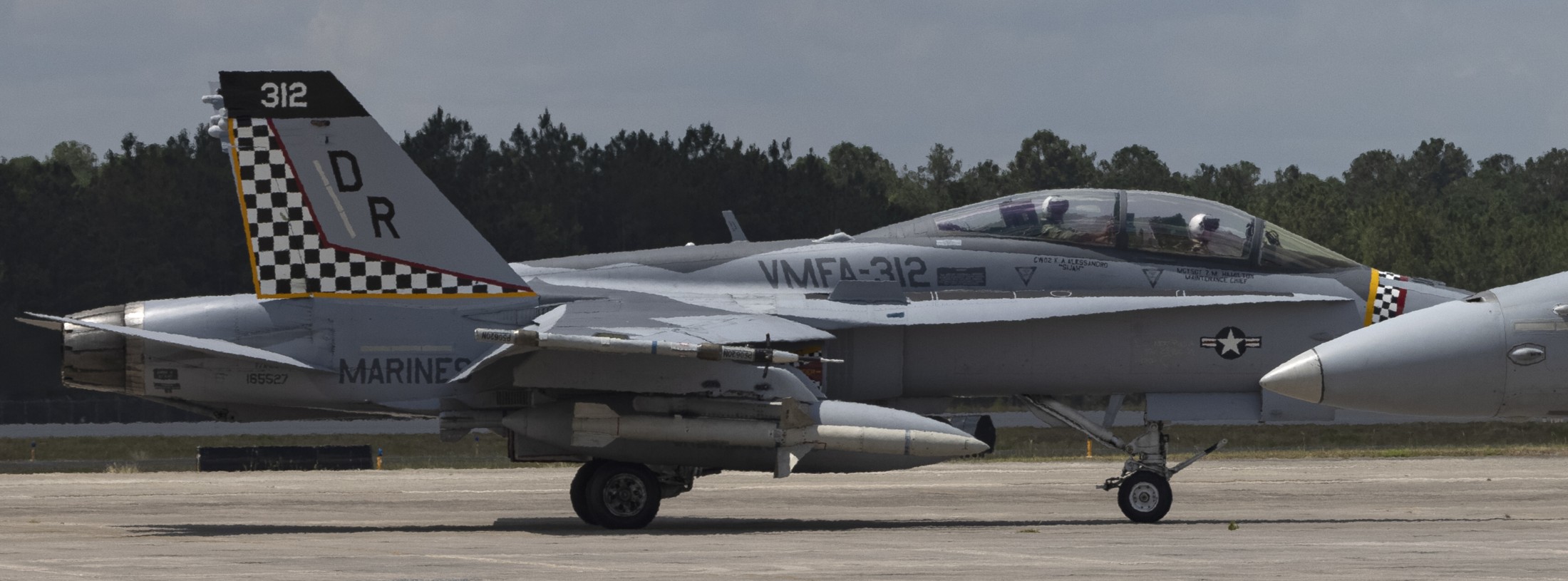 F/A-18D Hornet (VMFA-312) at Cecil Airport, Florida - June 2024  F/A-18C Hornet (VMFA-312) at Cecil Airport, Florida - June 2024 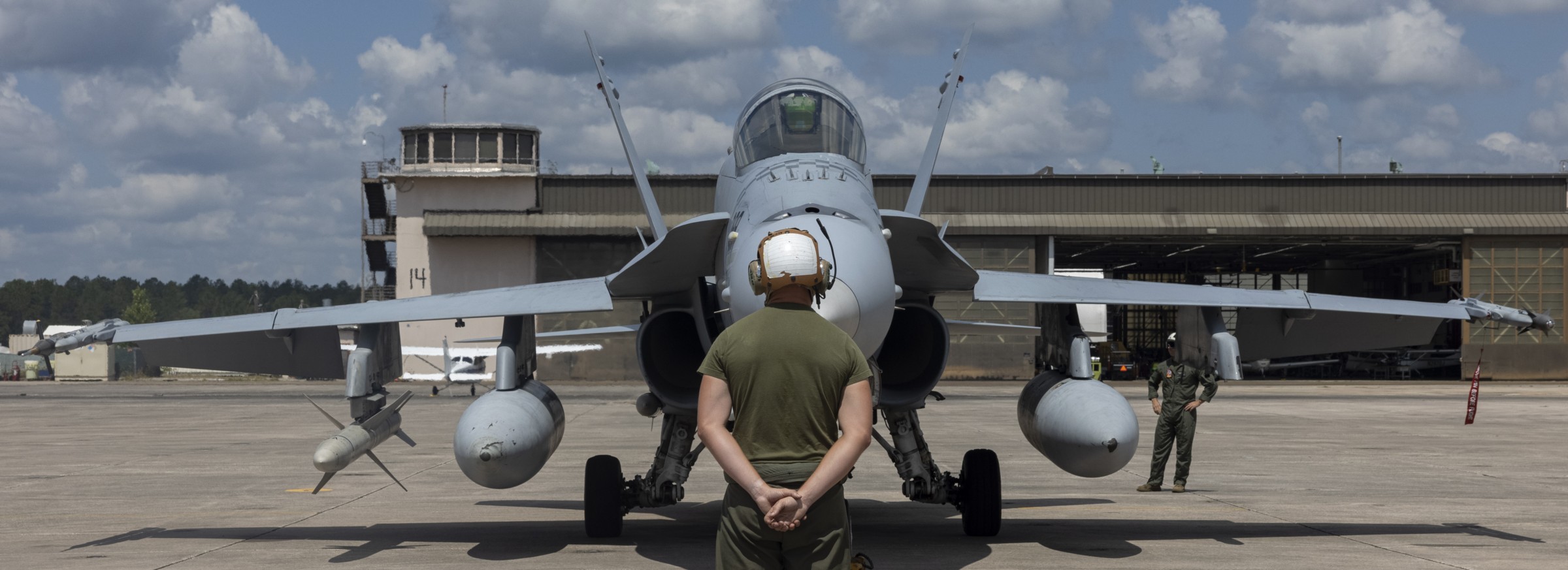 F/A-18C Hornet (VMFA-312) at Cecil Airport, Florida - June 2024 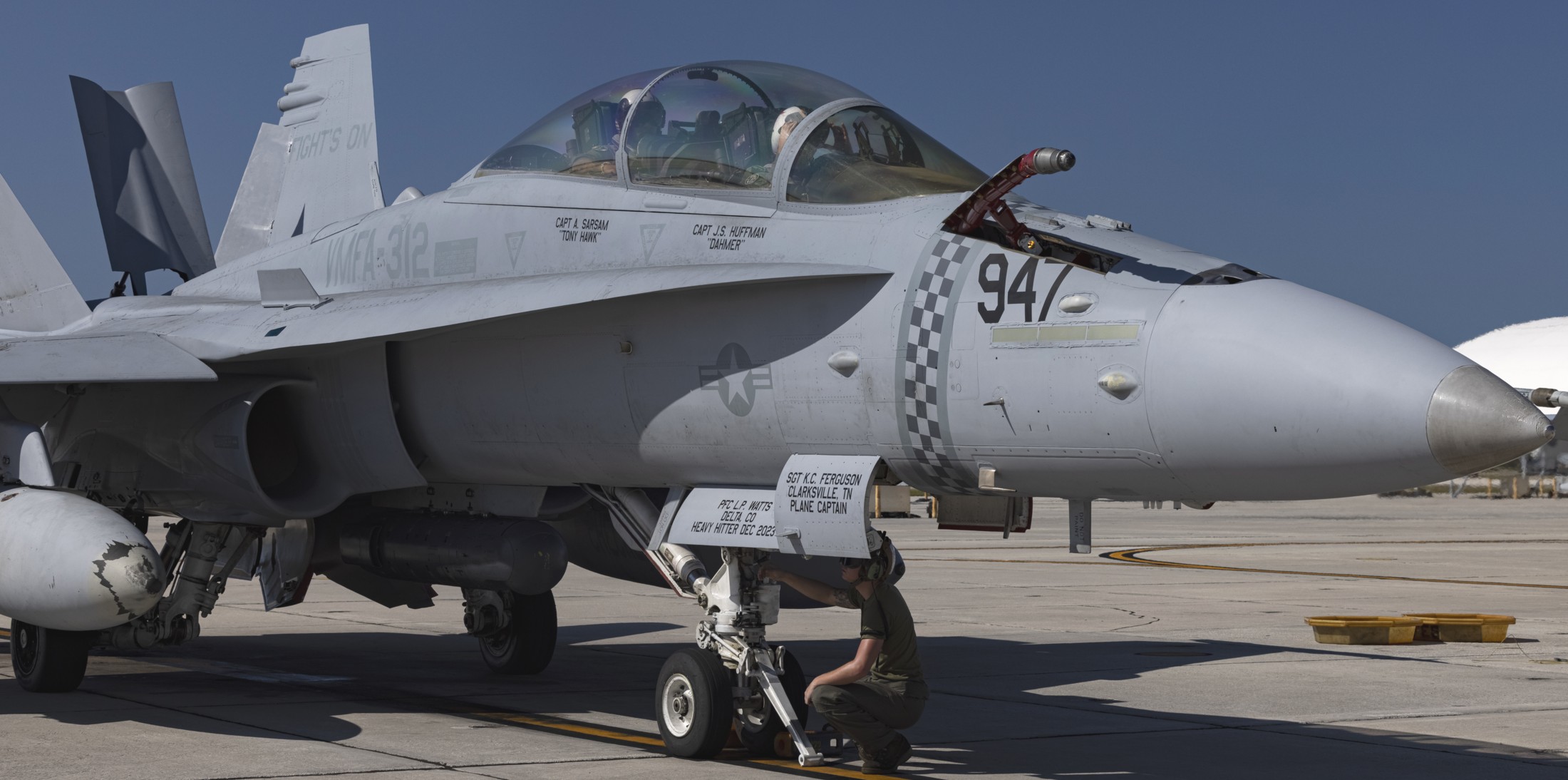 F/A-18D Hornet (VMFA-312) at NAS Key West, Florida - June 2024 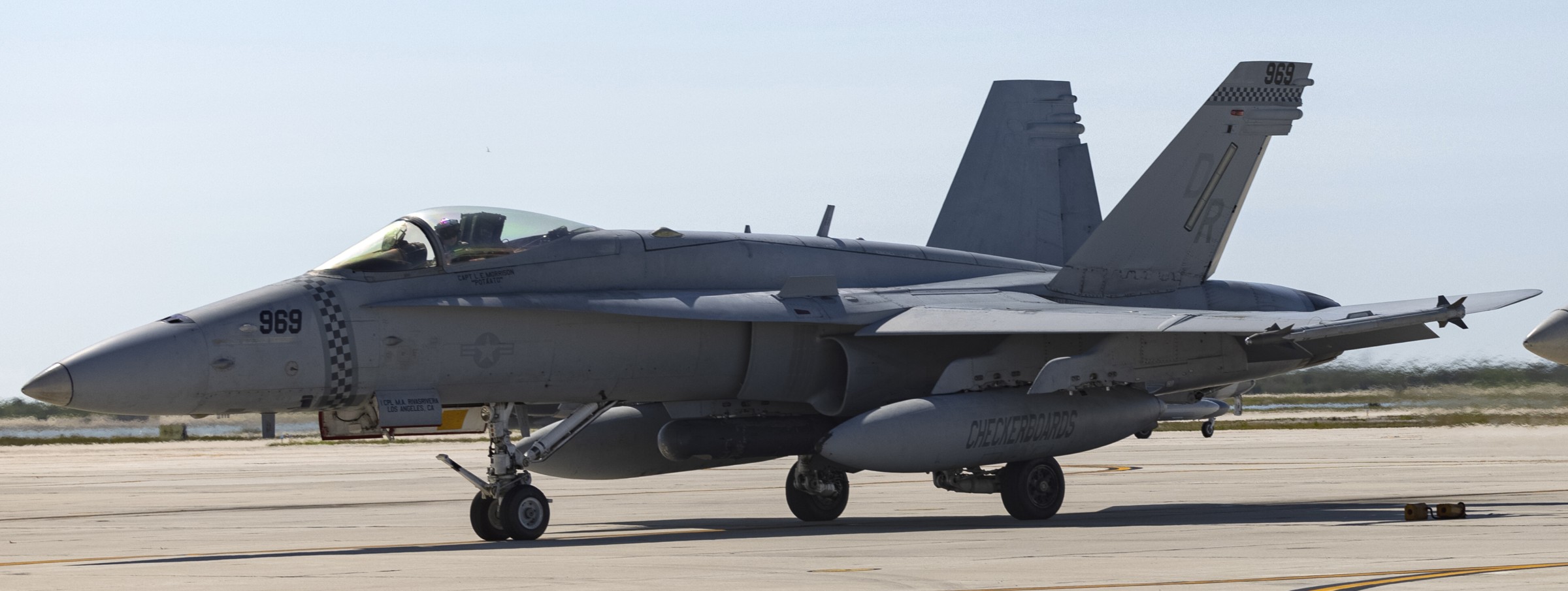 F/A-18C Hornet (VMFA-312) at NAS Key West, Florida - June 2024  F/A-18D Hornet (VMFA-312) at NAS Key West, Florida - June 2024 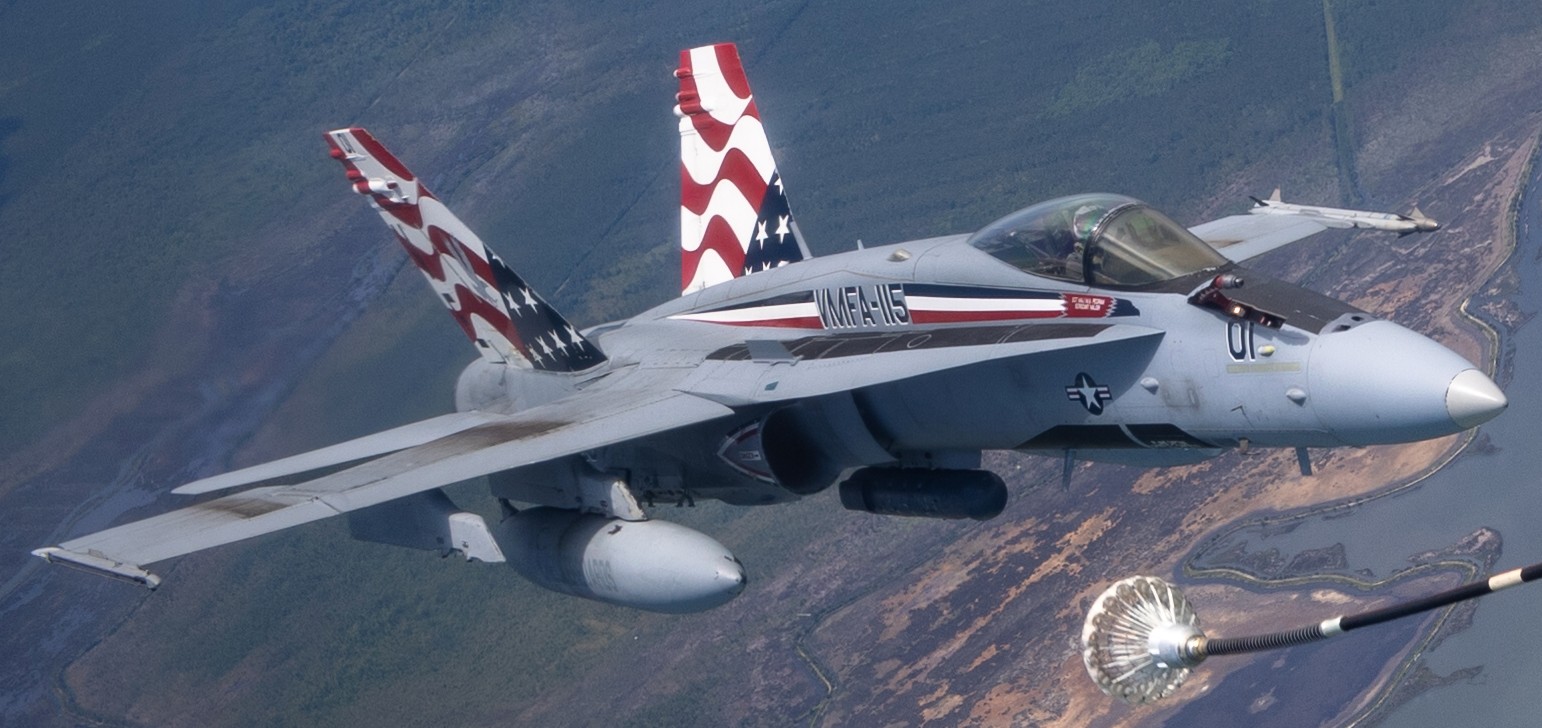 F/A-18C Hornet (VMFA-312) during MCAS Cherry Point Air Show - May 2024 NOTE: this aircraft was transferred from VMFA-115 (deactivated in November 2023) and is still wearing their markings  F/A-18C Hornet (VMFA-312) during MCAS Cherry Point Air Show - May 2024 NOTE: this aircraft was transferred from VMFA-115 (deactivated in November 2023) and is still wearing their markings 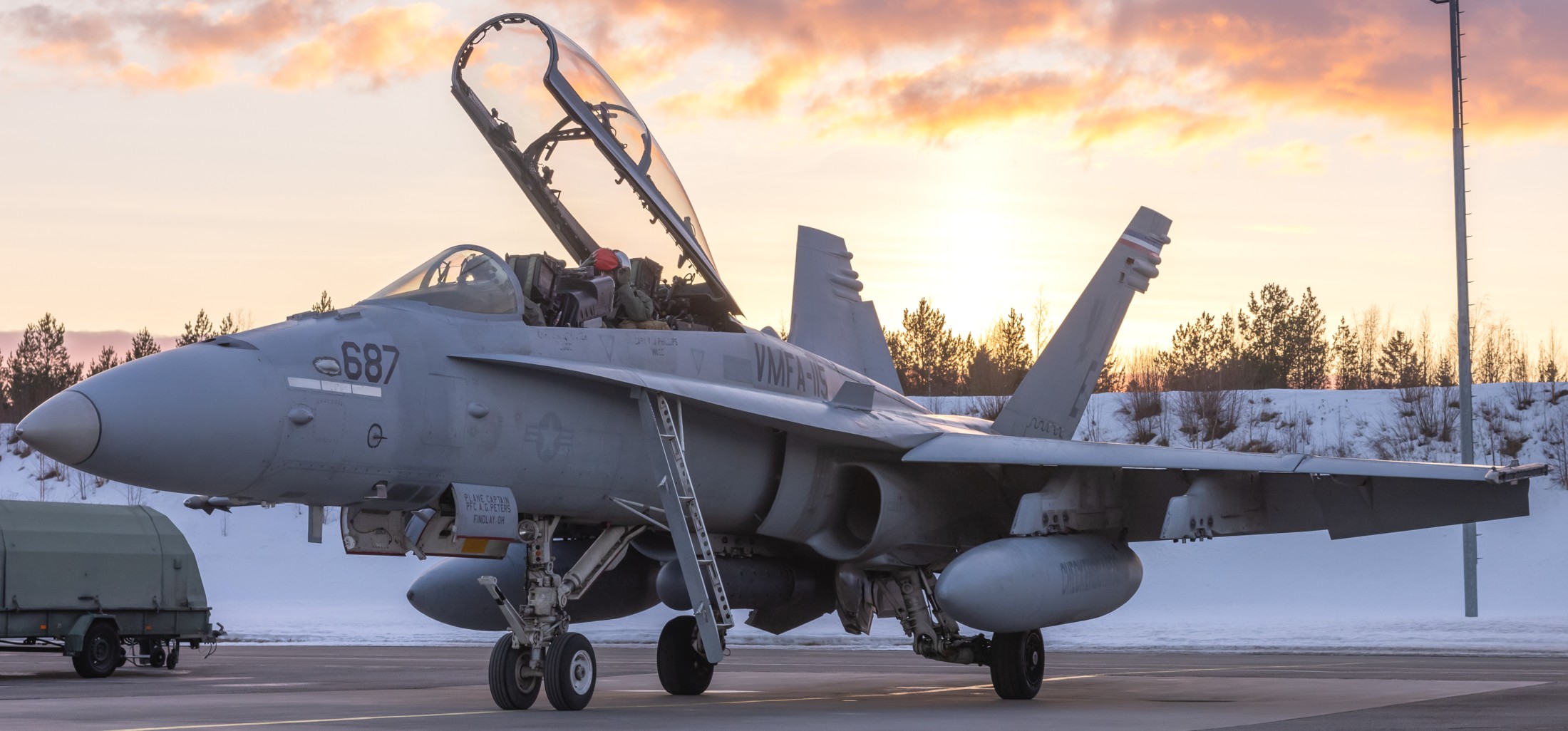 F/A-18D Hornet (VMFA-312) during NATO Exercise Nordic Response at Oulu Airport, Finland - March 2024 NOTE: this aircraft was transferred from VMFA-115 (deactivated in November 2023) and is still wearing their markings 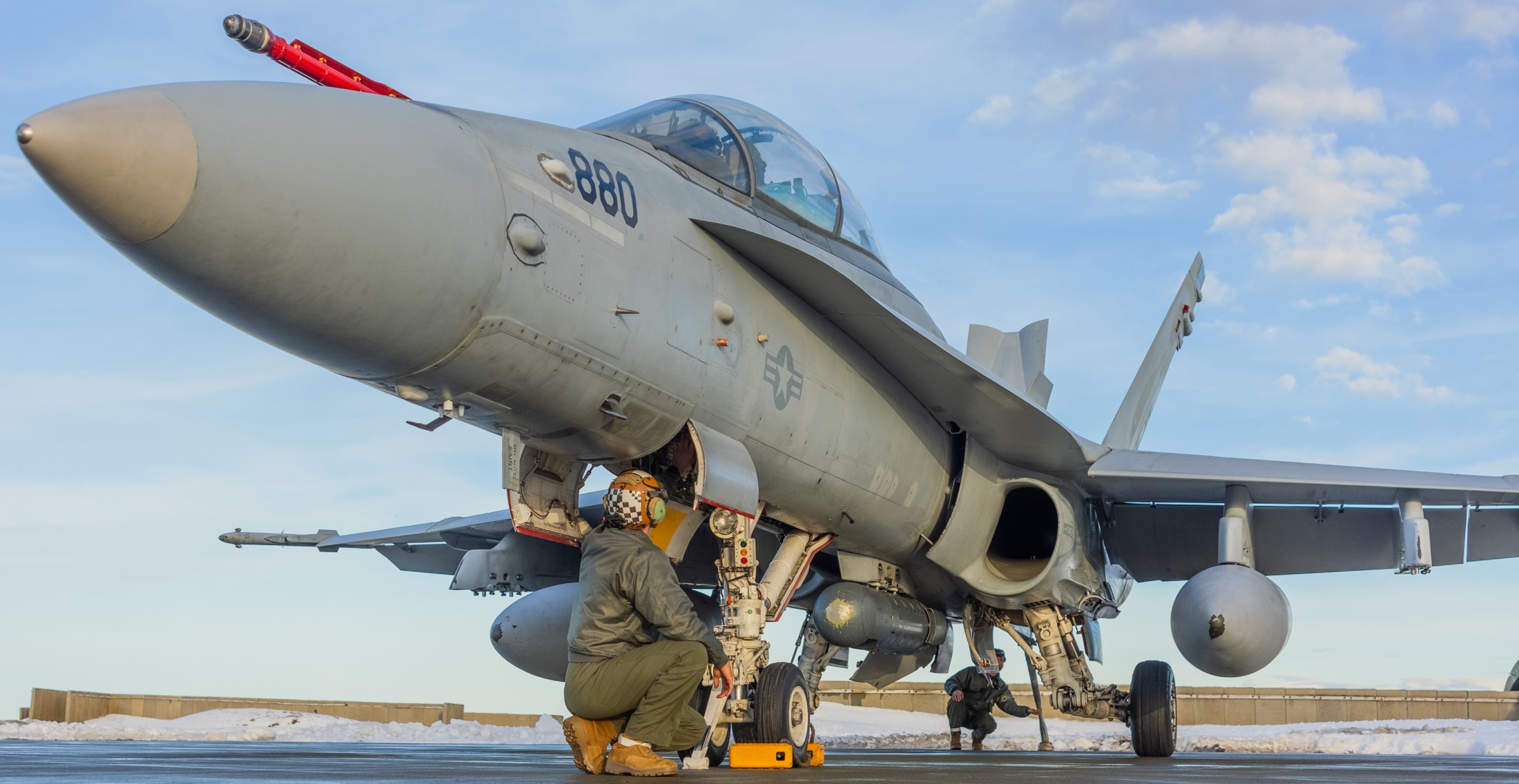 F/A-18D Hornet (VMFA-312) during NATO Exercise Nordic Response at Andoya Air Station, Andenes, Norway - February 2024 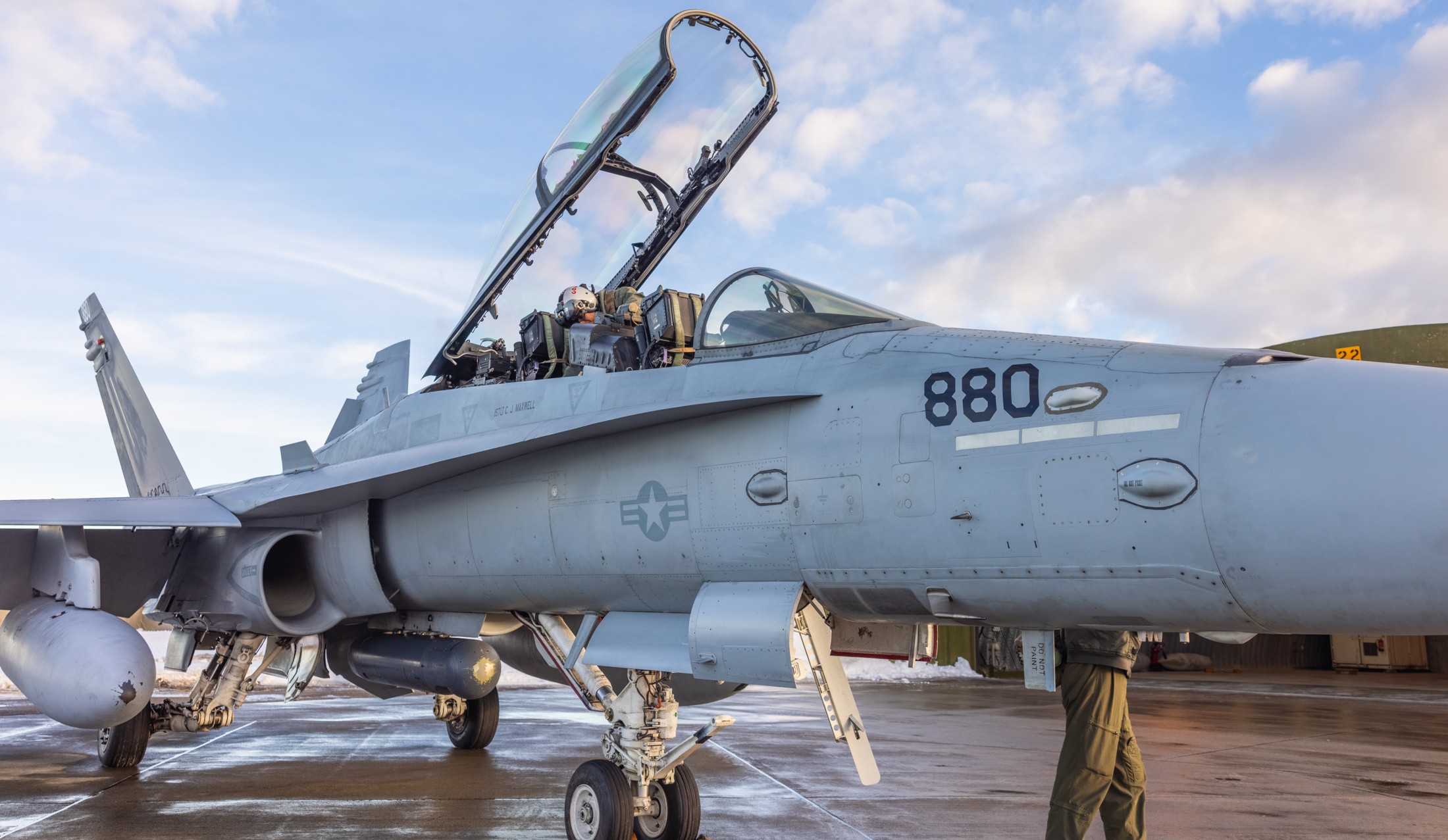 F/A-18D Hornet (VMFA-312) during NATO Exercise Nordic Response at Andoya Air Station, Andenes, Norway - February 2024  F/A-18D Hornet (VMFA-312) during NATO Exercise Nordic Response at Andoya Air Station, Andenes, Norway - February 2024 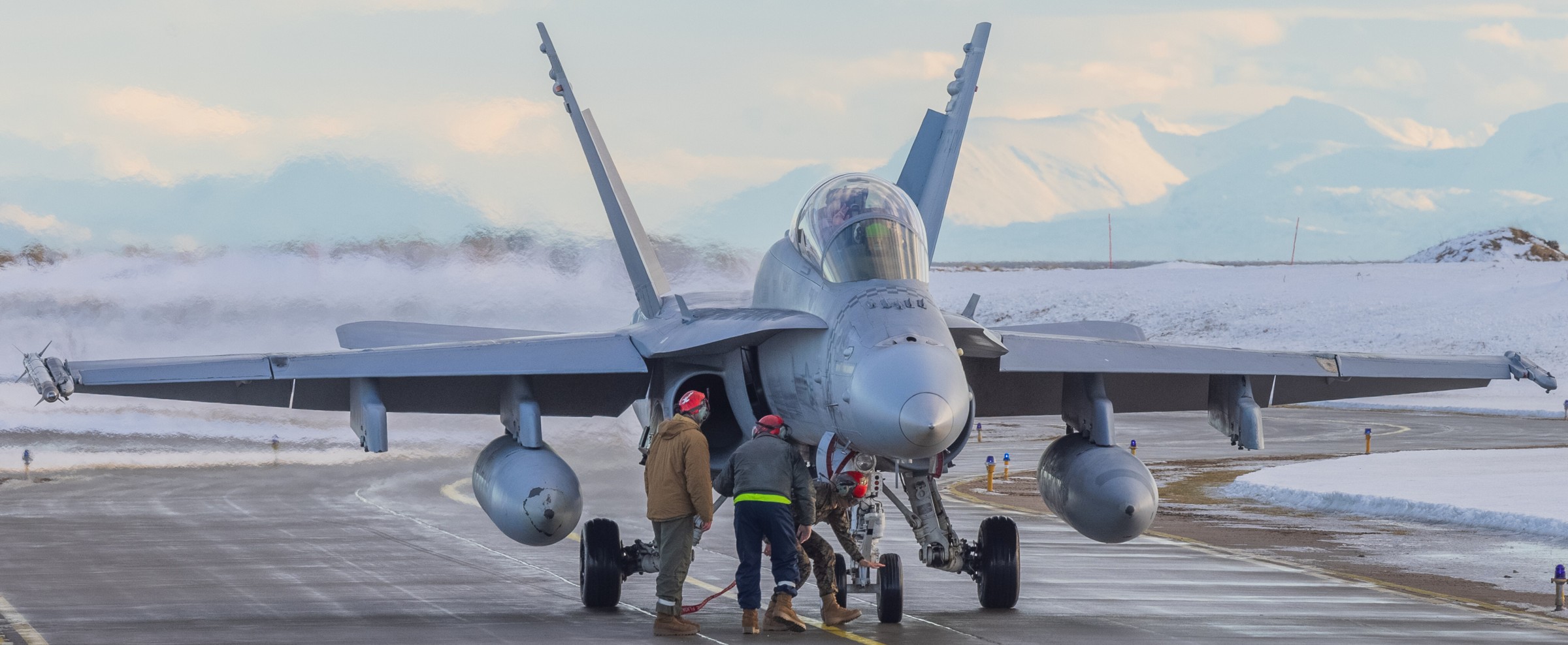 F/A-18D Hornet (VMFA-312) during NATO Exercise Nordic Response at Andoya Air Station, Andenes, Norway - February 2024  F/A-18D Hornet (VMFA-312) during NATO Exercise Nordic Response at Andoya Air Station, Andenes, Norway - February 2024 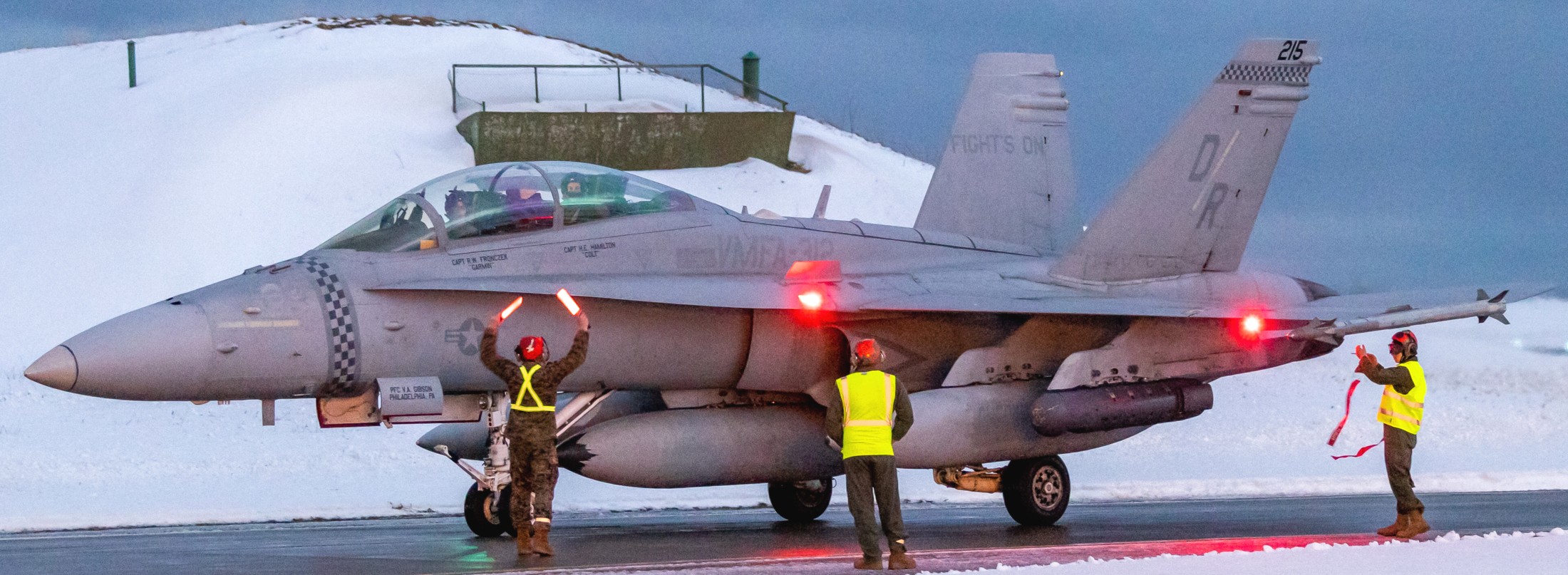 F/A-18D Hornet (VMFA-312) during NATO Exercise Nordic Response at Andoya Air Station, Andenes, Norway - February 2024 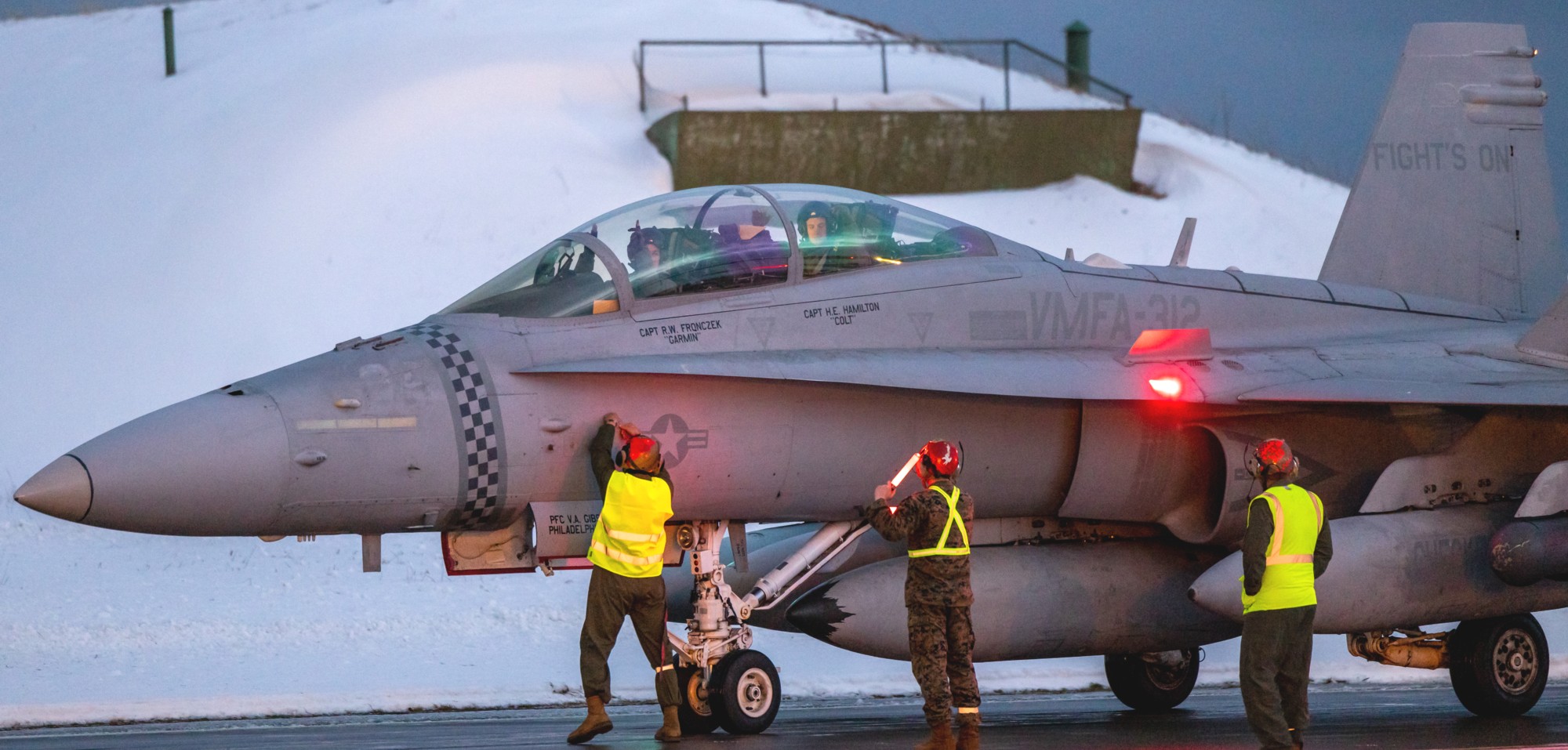 F/A-18D Hornet (VMFA-312) during NATO Exercise Nordic Response at Andoya Air Station, Andenes, Norway - February 2024 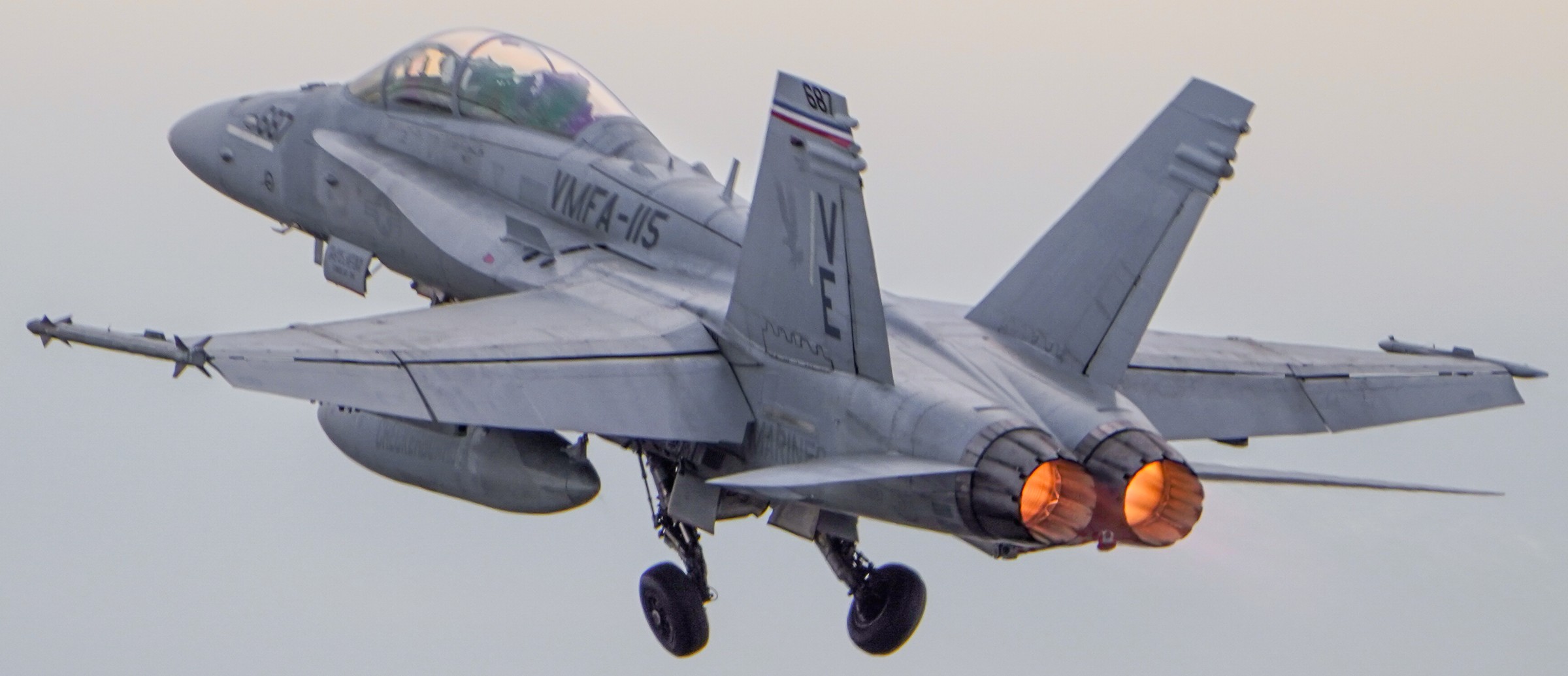 F/A-18D Hornet (VMFA-312) during NATO Exercise Nordic Response at Andoya Air Station, Andenes, Norway - February 2024 NOTE: this aircraft was transferred from VMFA-115 (deactivated in November 2023) and is still wearing their markings  F/A-18C Hornet (VMFA-312) during NATO Exercise Nordic Response at Andoya Air Station, Andenes, Norway - February 2024 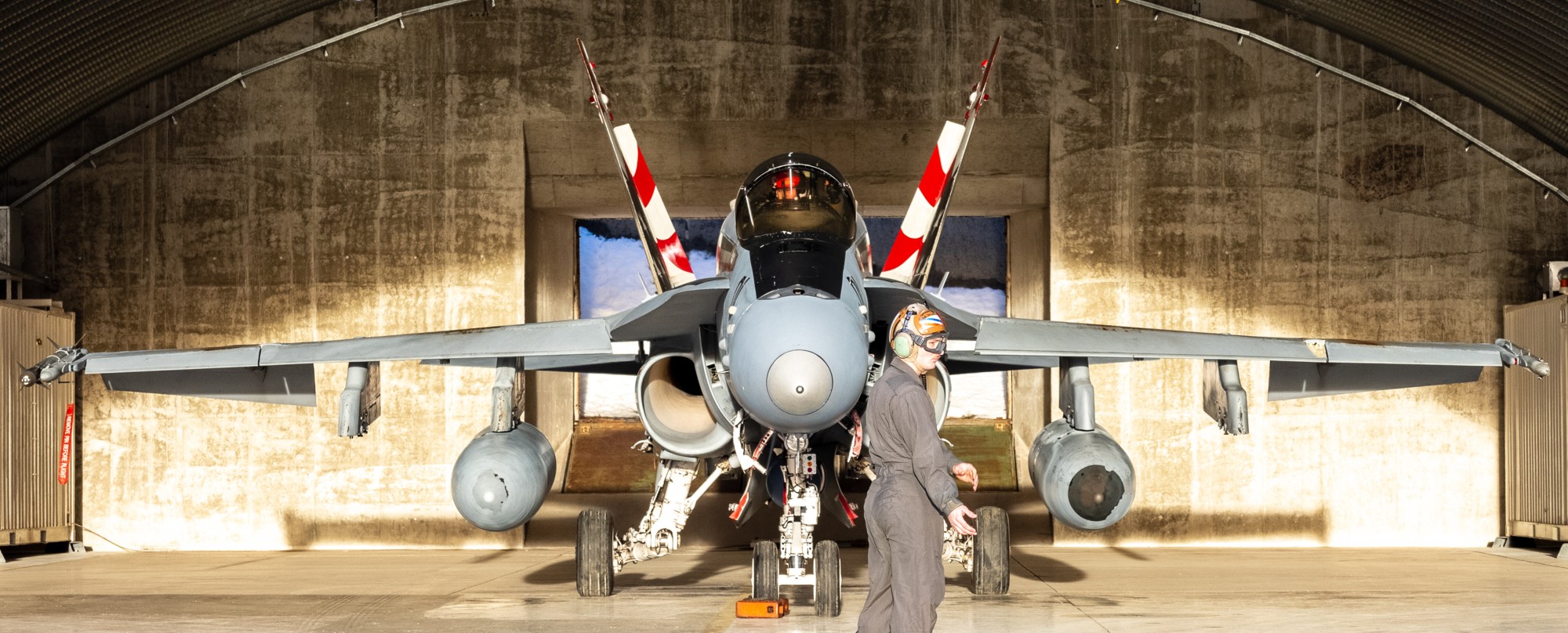 F/A-18C Hornet (VMFA-312) during NATO Exercise Nordic Response at Andoya Air Station, Andenes, Norway - February 2024 NOTE: this aircraft was transferred from VMFA-115 (deactivated in November 2023) and is still wearing their markings 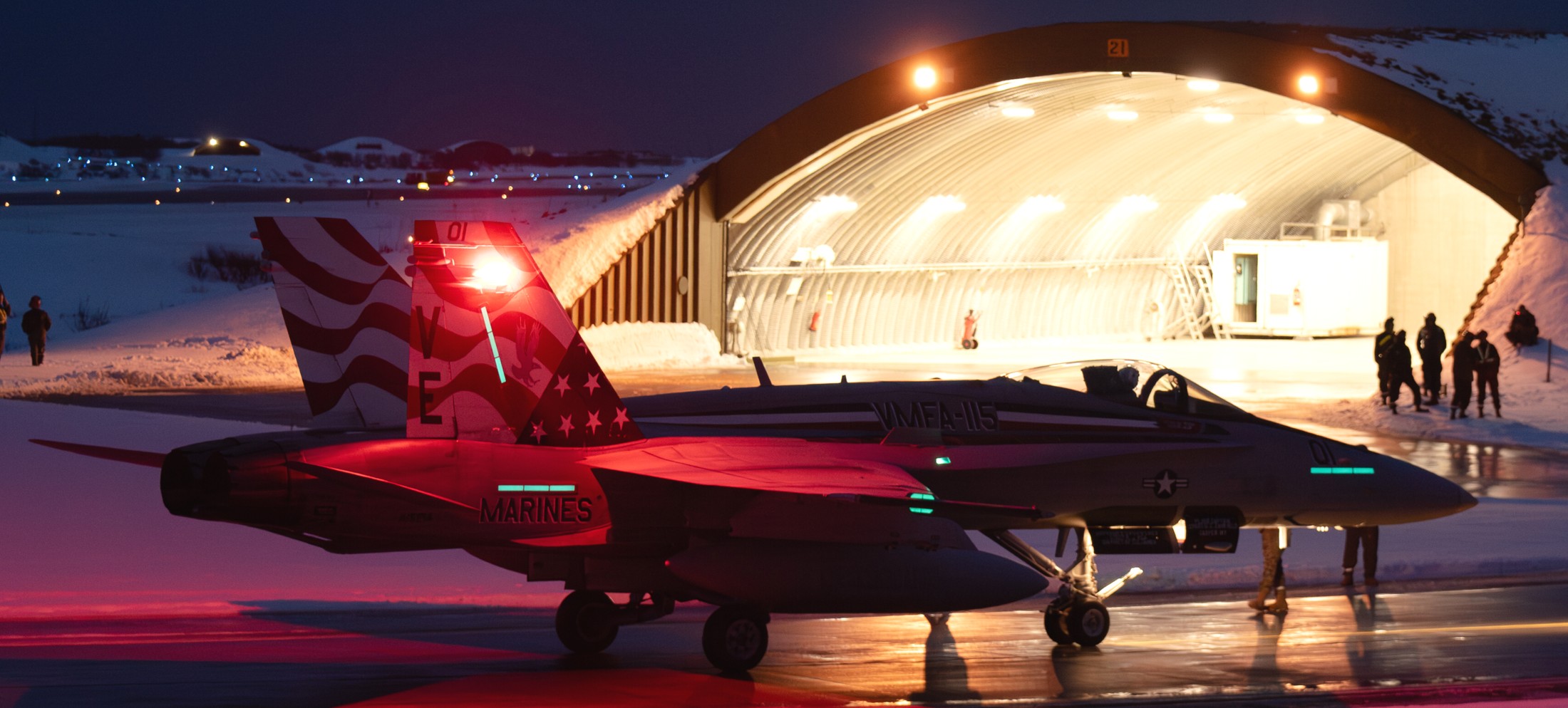 F/A-18C Hornet (VMFA-312) during NATO Exercise Nordic Response at Andoya Air Station, Andenes, Norway - February 2024 NOTE: this aircraft was transferred from VMFA-115 (deactivated in November 2023) and is still wearing their markings 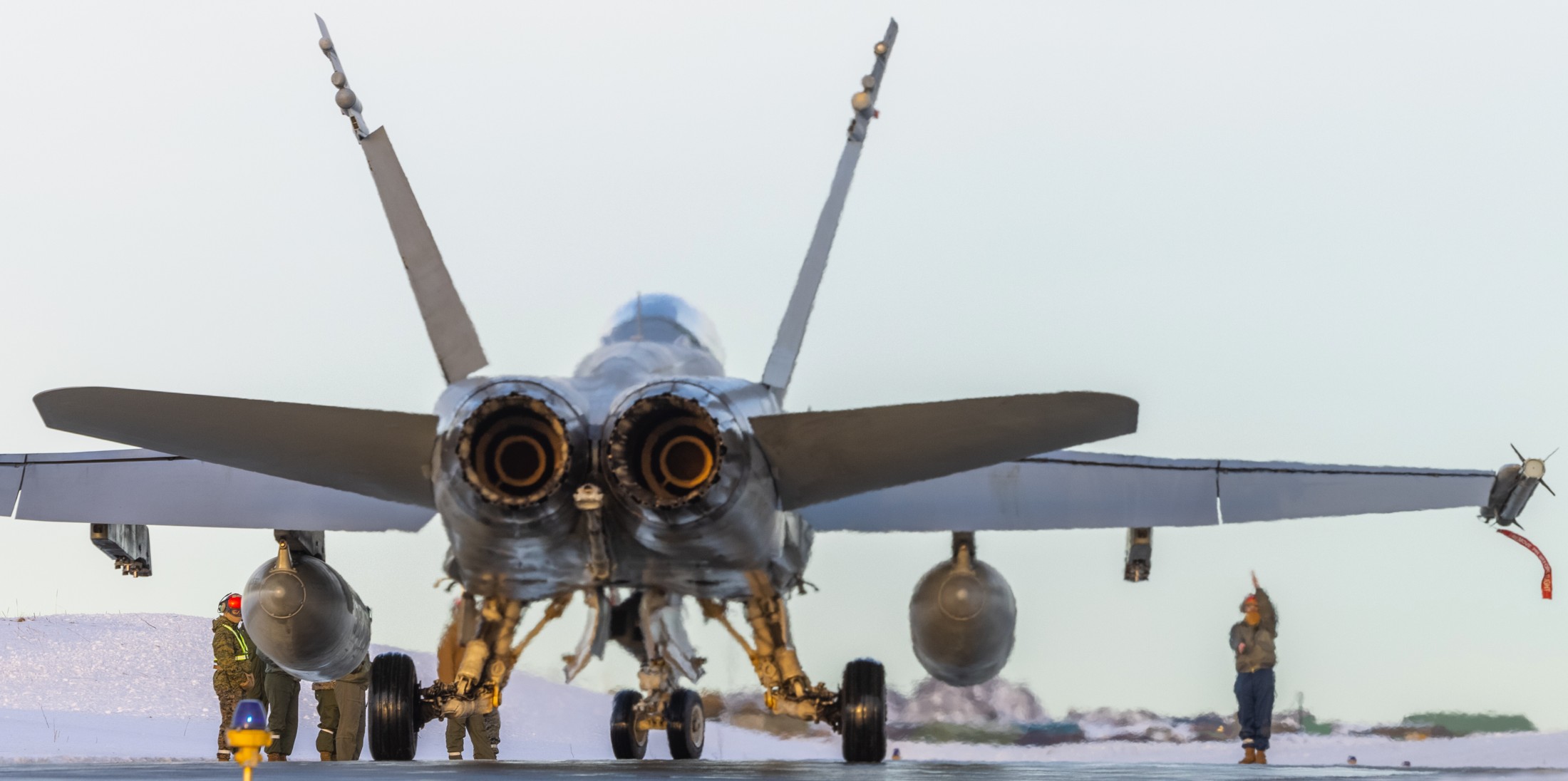 F/A-18D Hornet (VMFA-312) during NATO Exercise Nordic Response at Andoya Air Station, Andenes, Norway - February 2024  F/A-18C Hornet (VMFA-312) at MCAS Yuma, Arizona - October 2023  F/A-18C Hornet (VMFA-312) at MCAS Yuma, Arizona - October 2023 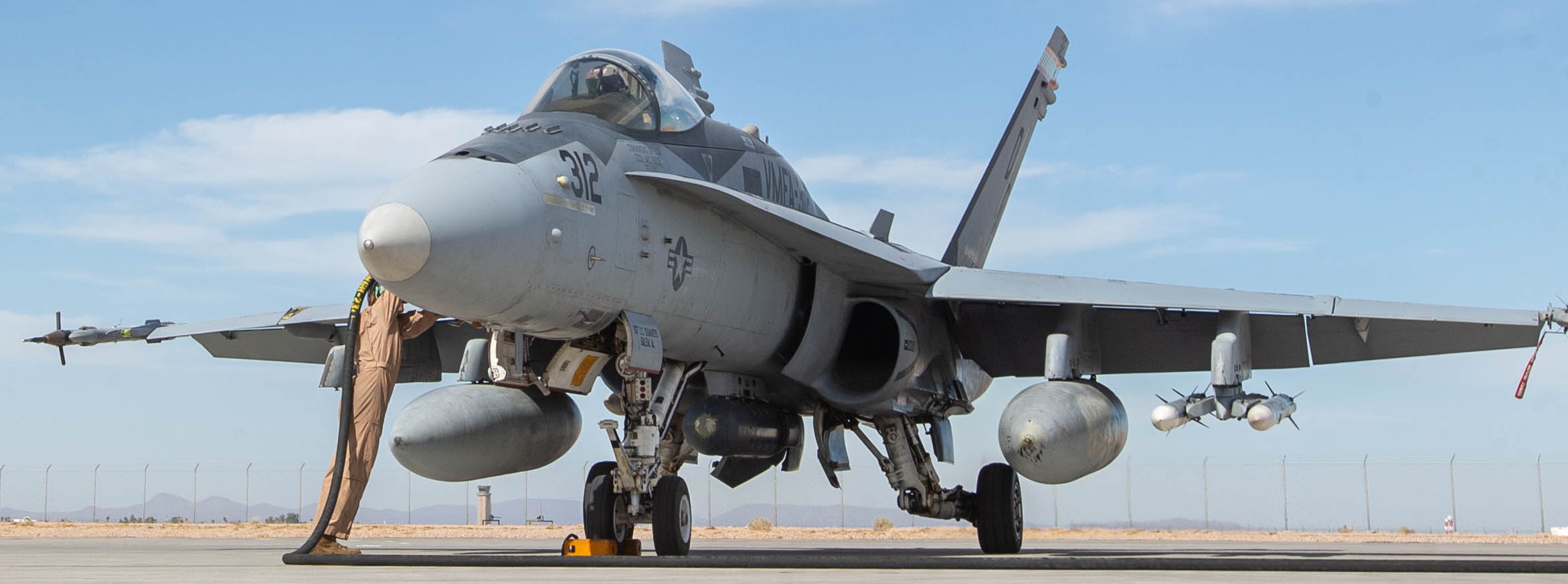 F/A-18C Hornet (VMFA-312) at MCAS Yuma, Arizona - October 2023 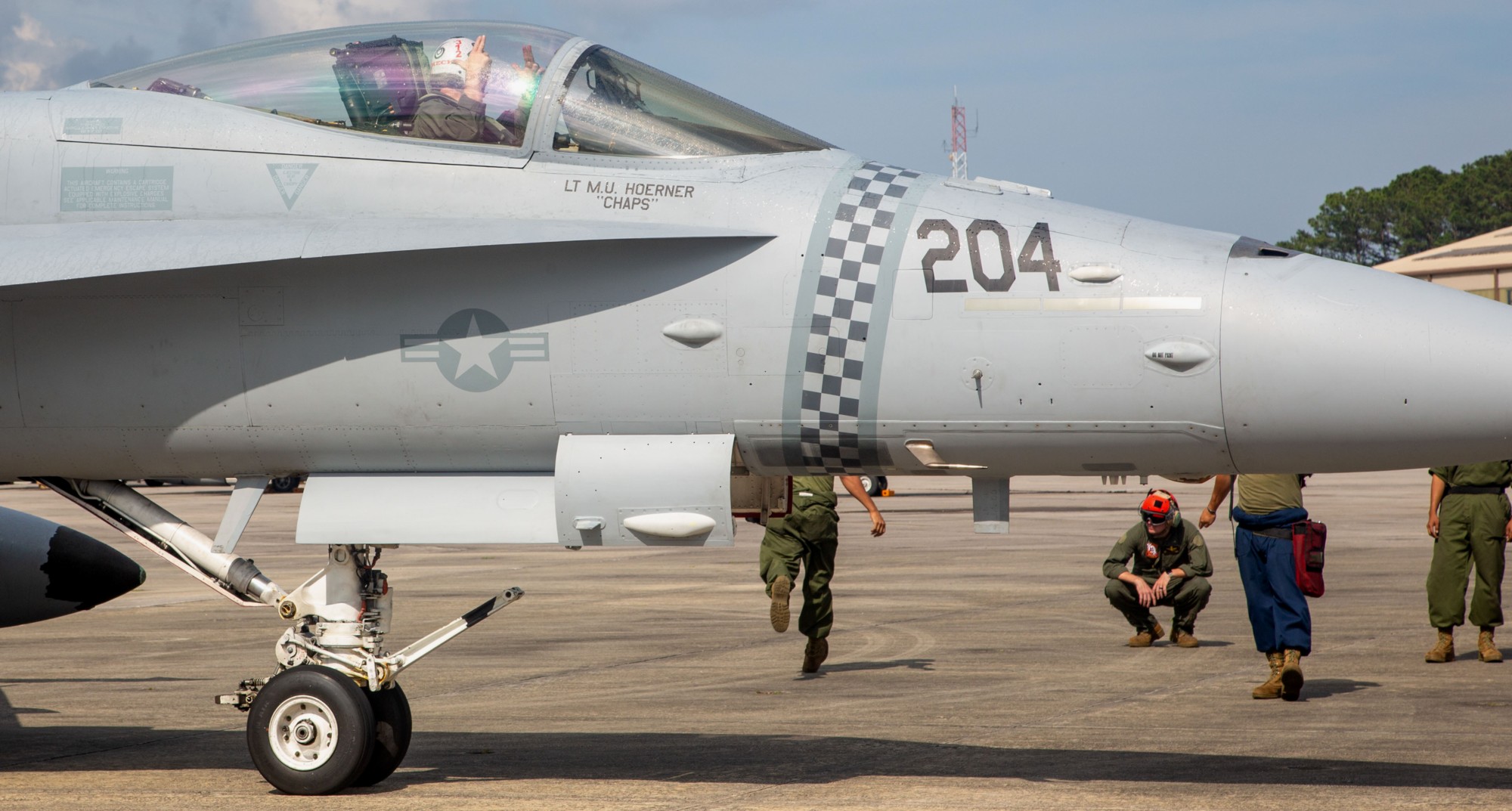 F/A-18C Hornet (VMFA-312) at MCAS Beaufort, South Carolina - May 2023 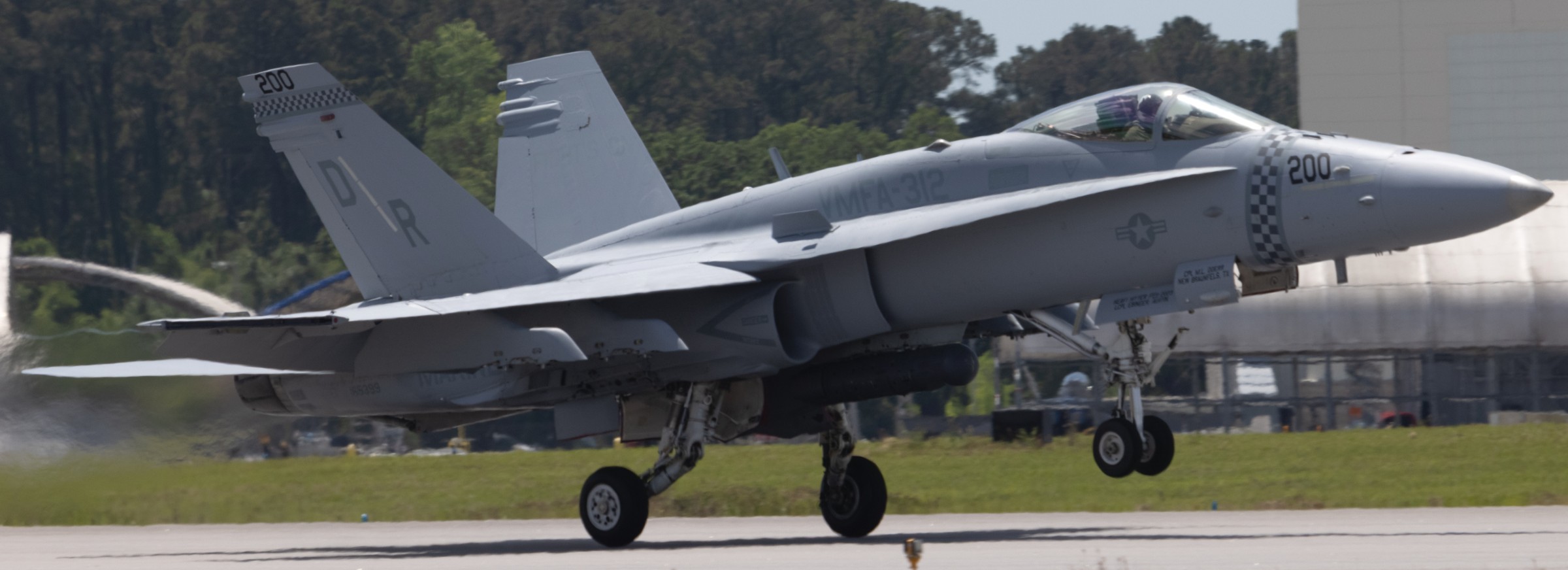 F/A-18C Hornet (VMFA-312) at MCAS Beaufort, South Carolina - April 2023 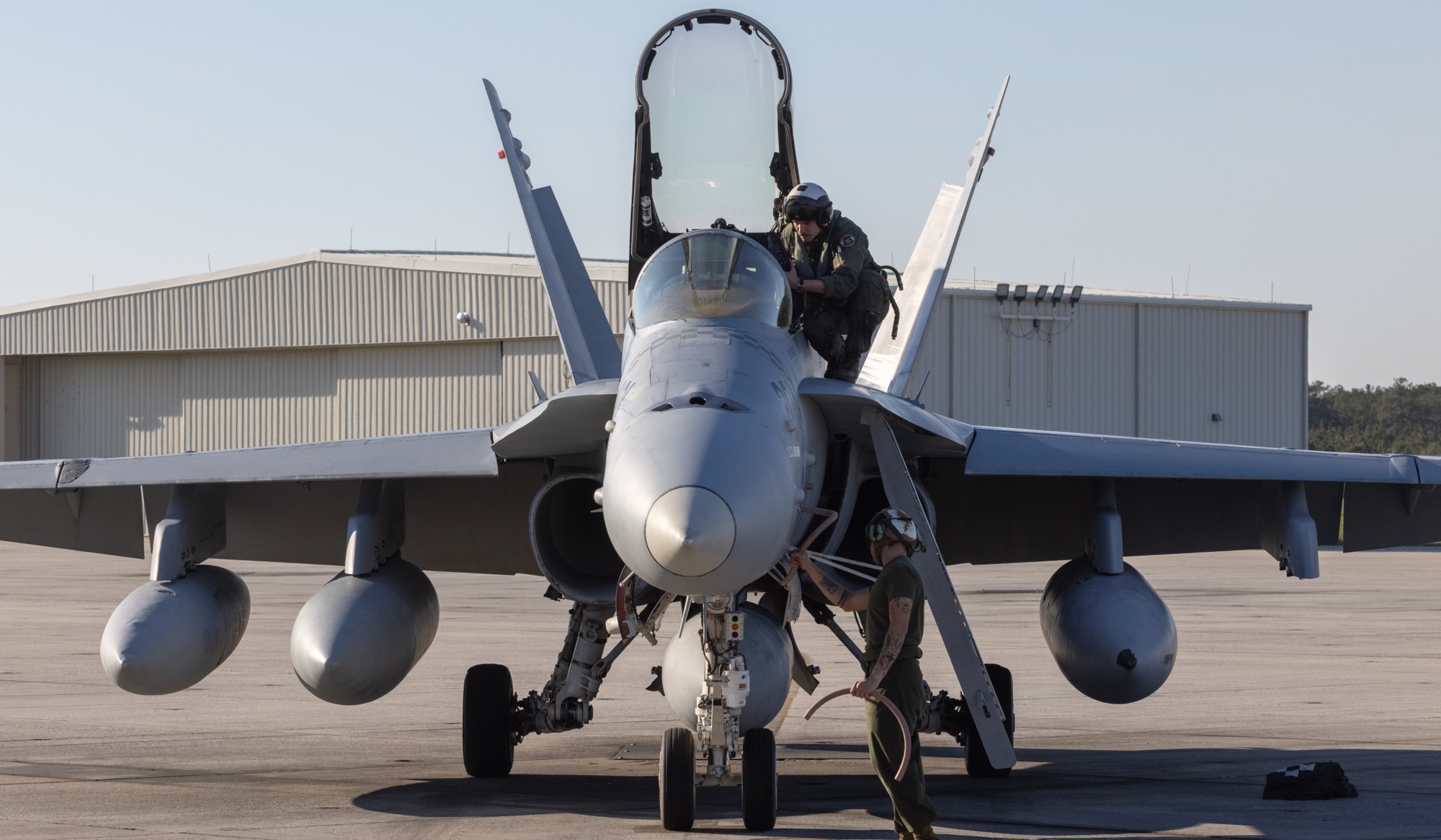 returning to MCAS Beaufort, South Carolina after a 5-month Unit Deployment Program (UDP) deployment at MCAS Iwakuni, Japan - March 14, 2023  returning to MCAS Beaufort, South Carolina after a 5-month Unit Deployment Program (UDP) deployment at MCAS Iwakuni, Japan - March 14, 2023  returning to MCAS Beaufort, South Carolina after a 5-month Unit Deployment Program (UDP) deployment at MCAS Iwakuni, Japan - March 14, 2023 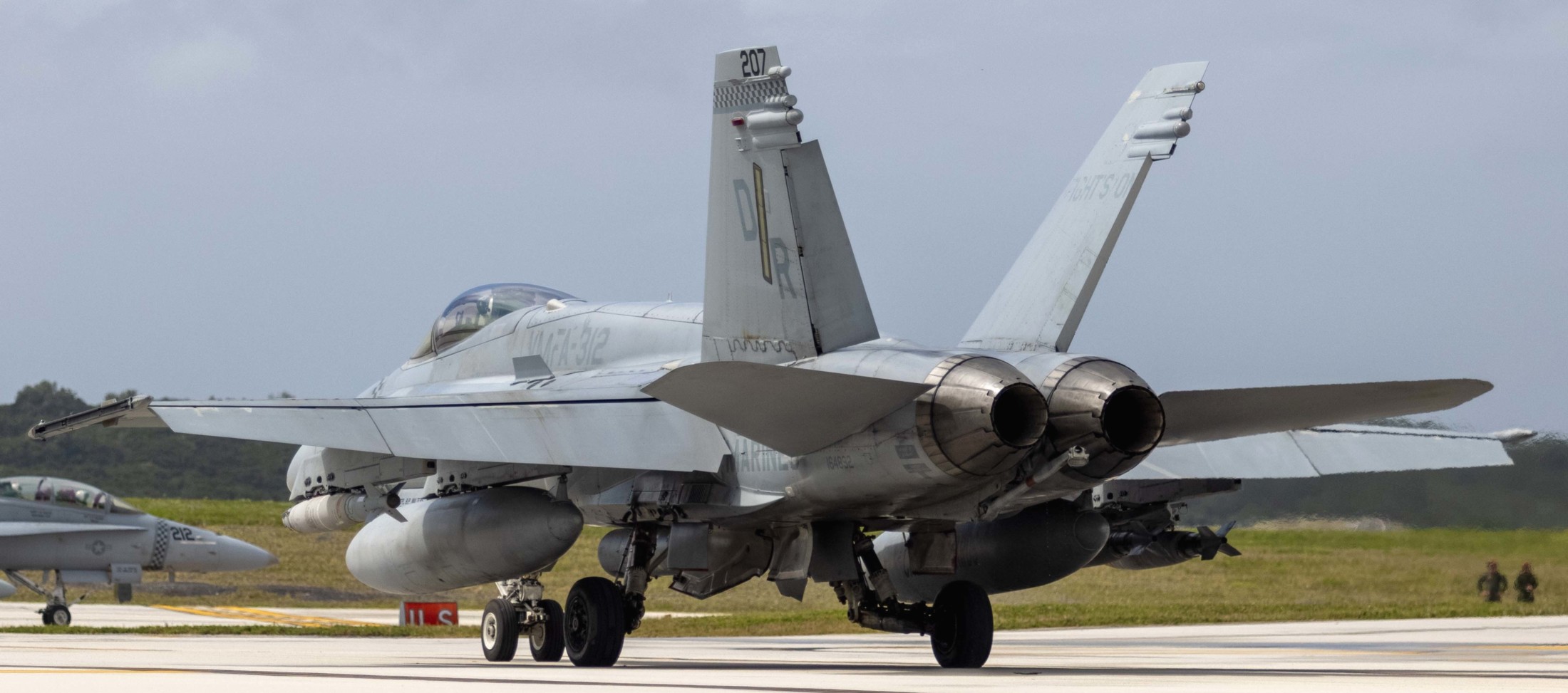 F/A-18C Hornet (VMFA-312) at Andersen AFB, Guam - February 2023  F/A-18C Hornet (VMFA-312) at Andersen AFB, Guam - February 2023  F/A-18C Hornet (VMFA-312) at Andersen AFB, Guam - February 2023 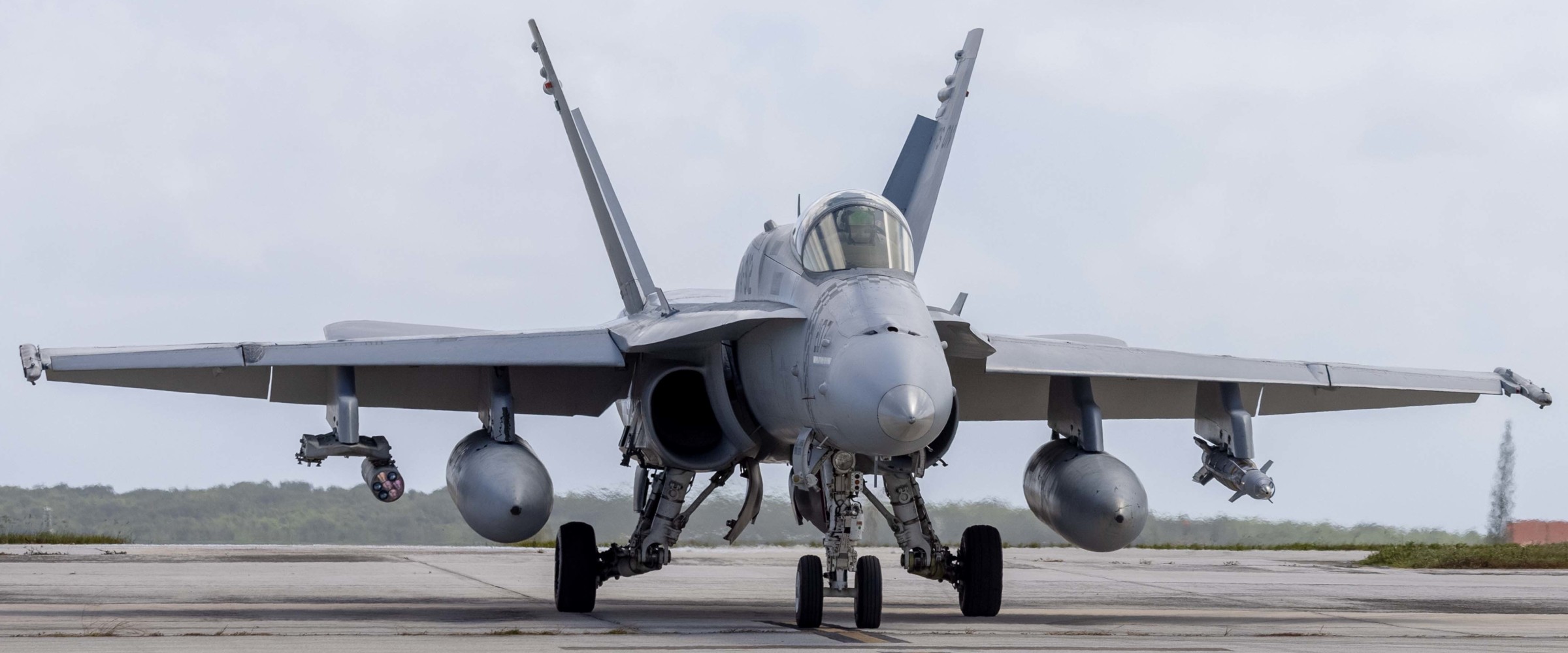 F/A-18C Hornet (VMFA-312) at Andersen AFB, Guam - February 2023 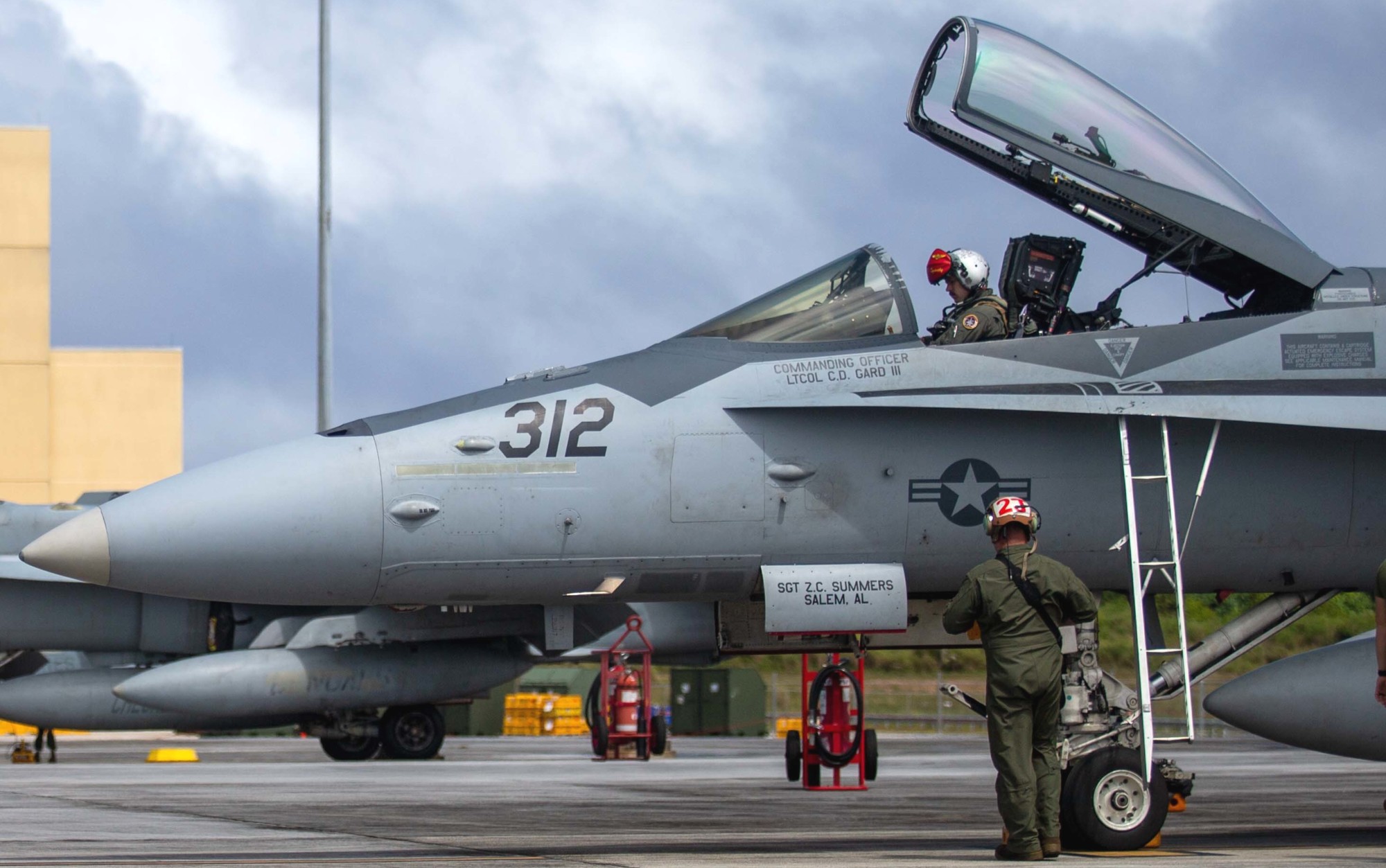 F/A-18C Hornet (VMFA-312) at Andersen AFB, Guam - February 2023 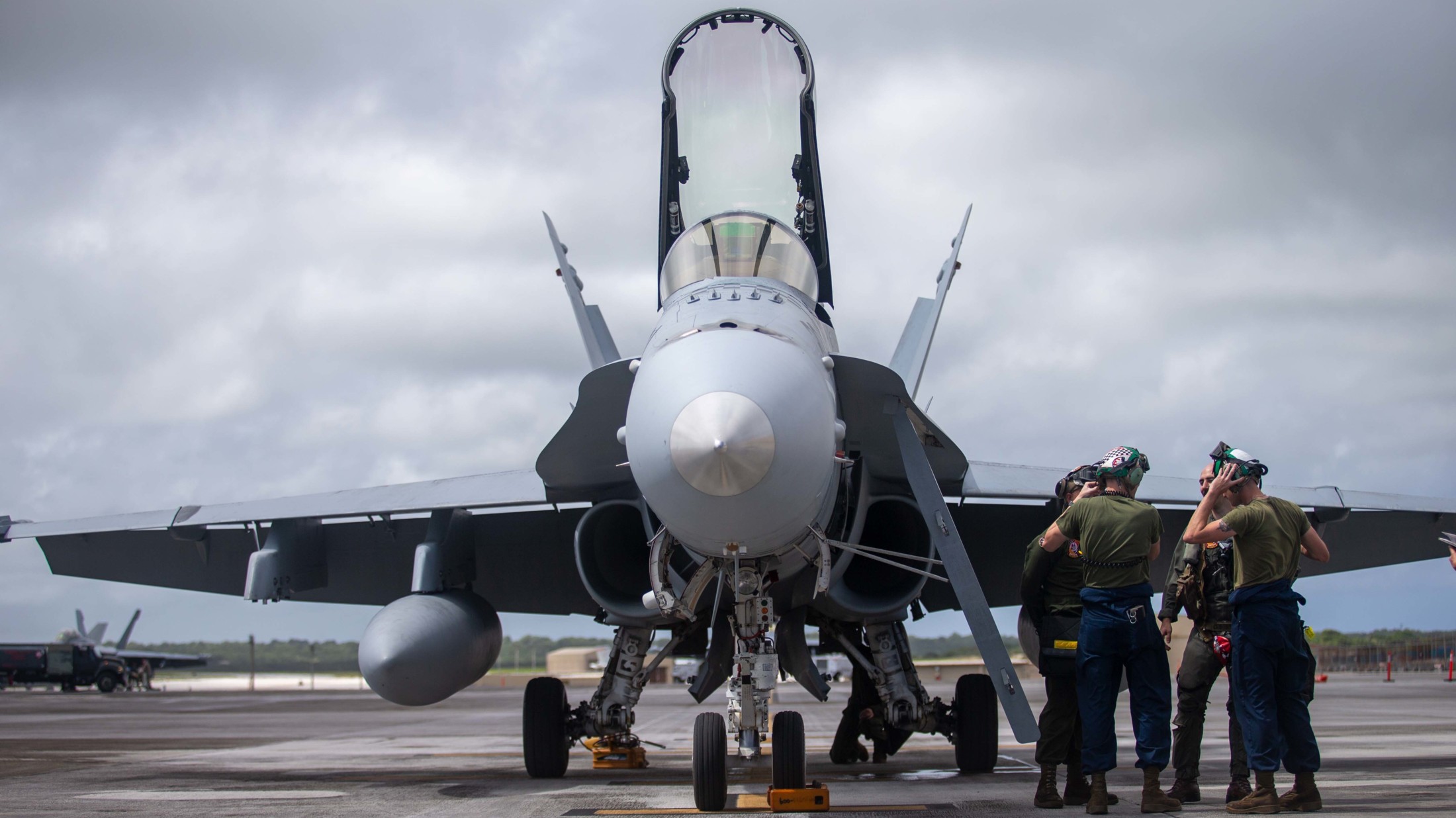 F/A-18C Hornet (VMFA-312) at Andersen AFB, Guam - February 2023 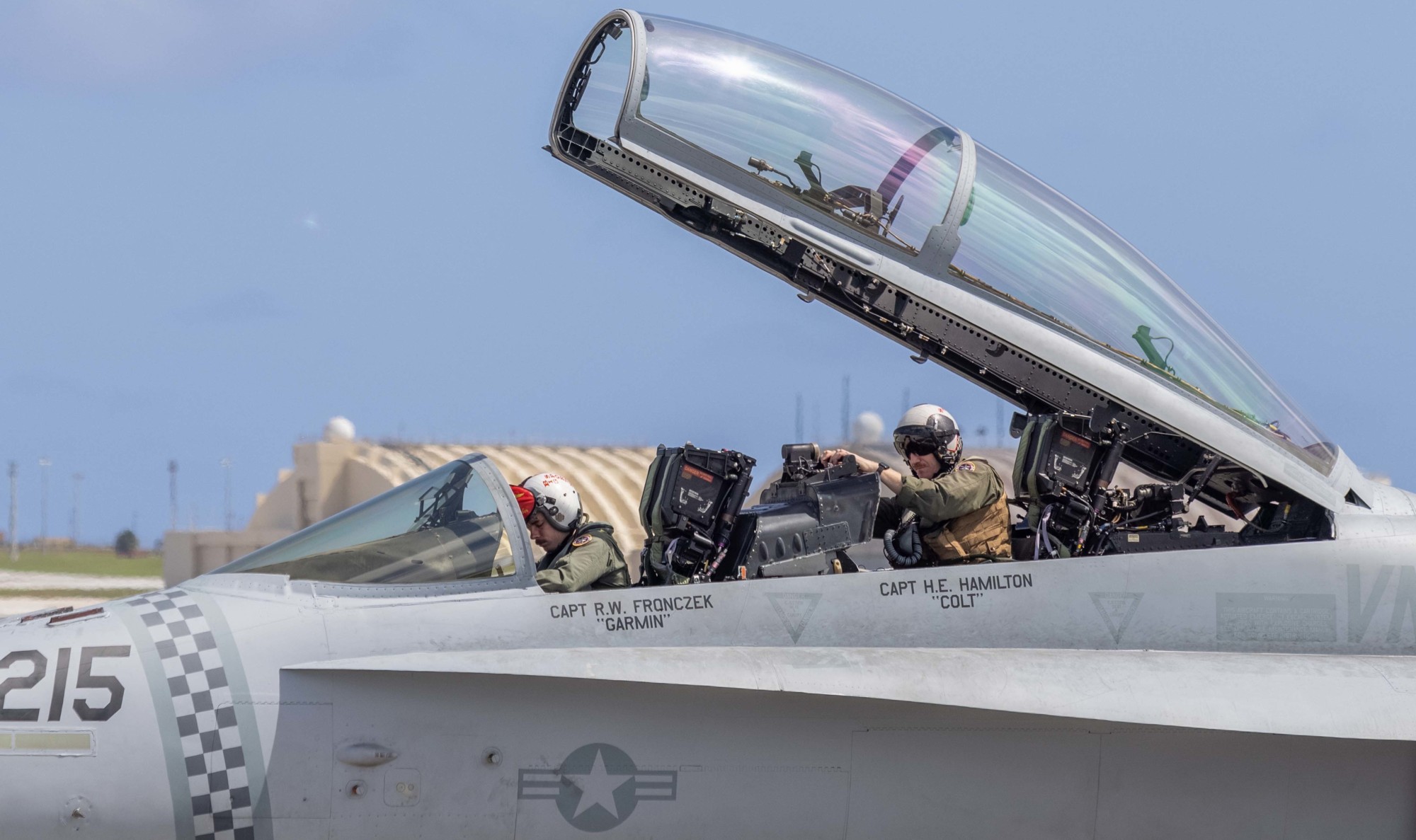 F/A-18D Hornet (VMFA-312) at Andersen AFB, Guam - February 2023 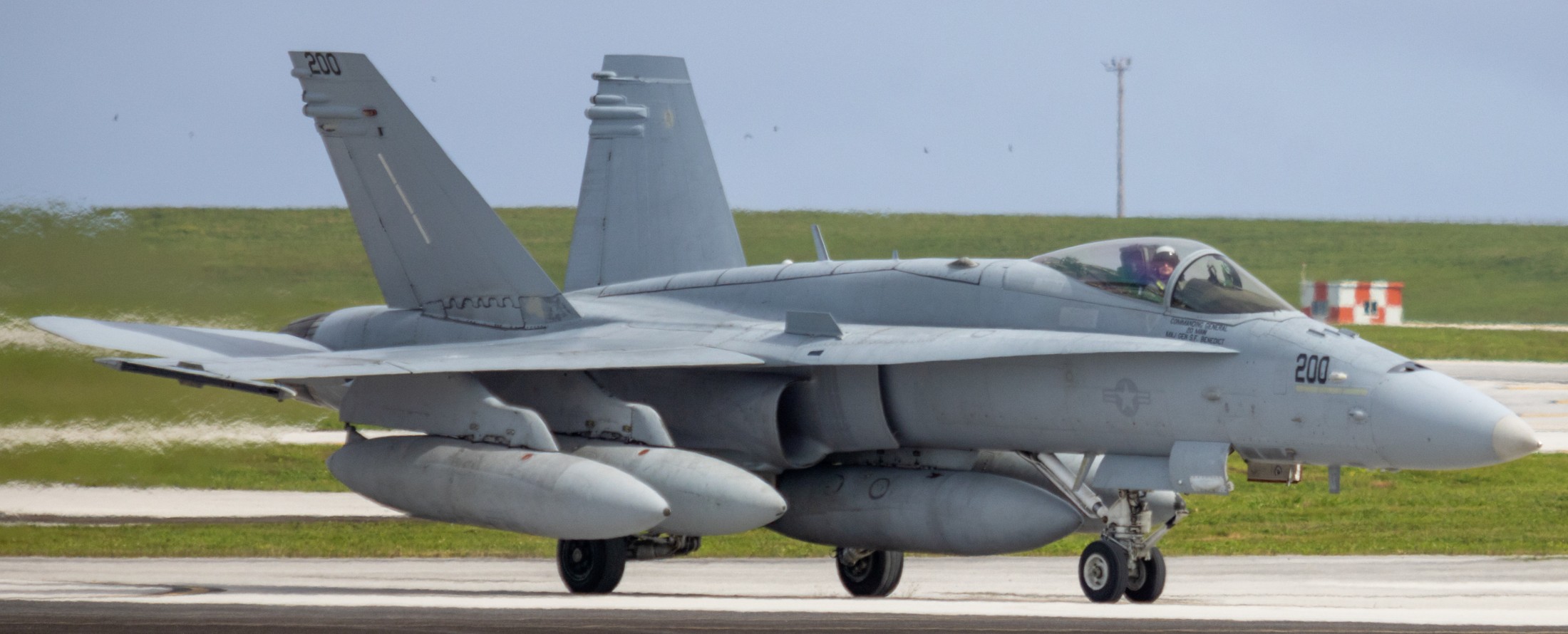 F/A-18C Hornet (VMFA-312) at Andersen AFB, Guam - January 2023  F/A-18C Hornet (VMFA-312) at Andersen AFB, Guam - January 2023 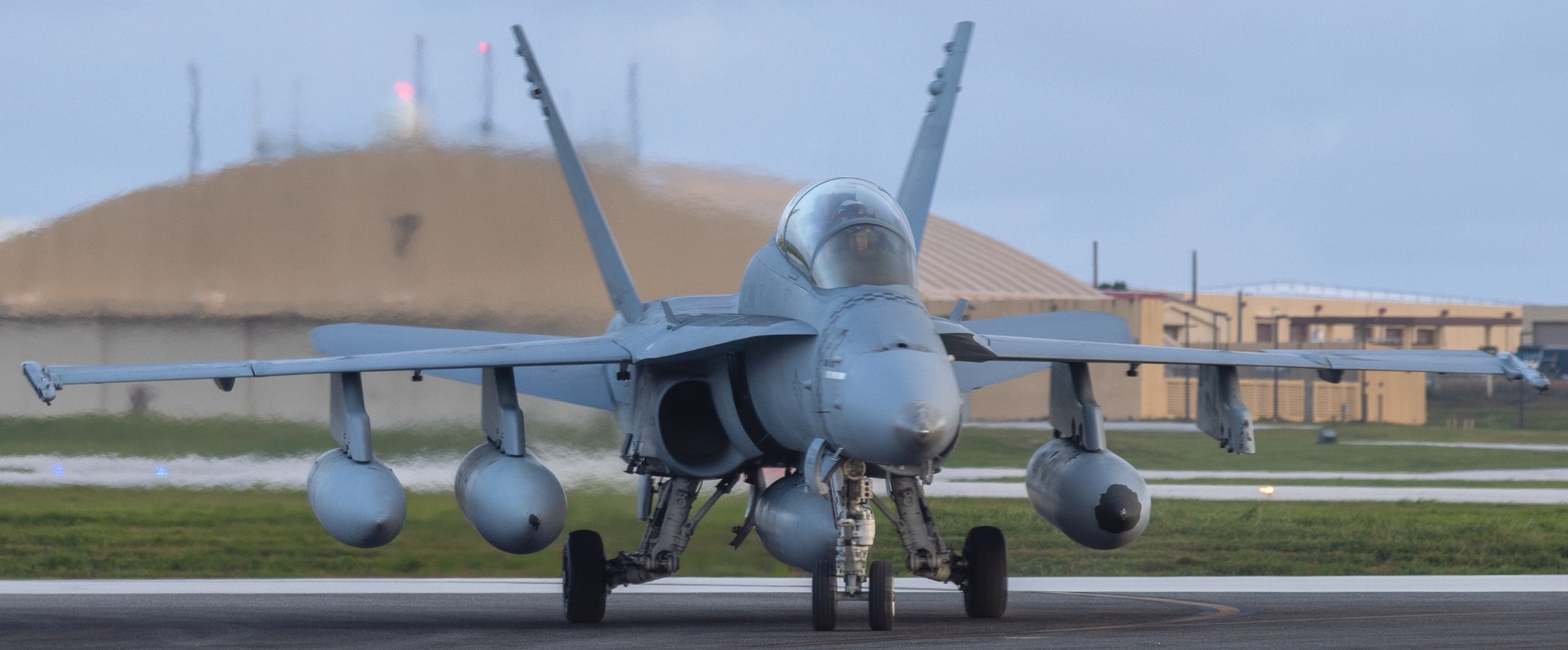 F/A-18D Hornet (VMFA-312) at Andersen AFB, Guam - January 2023 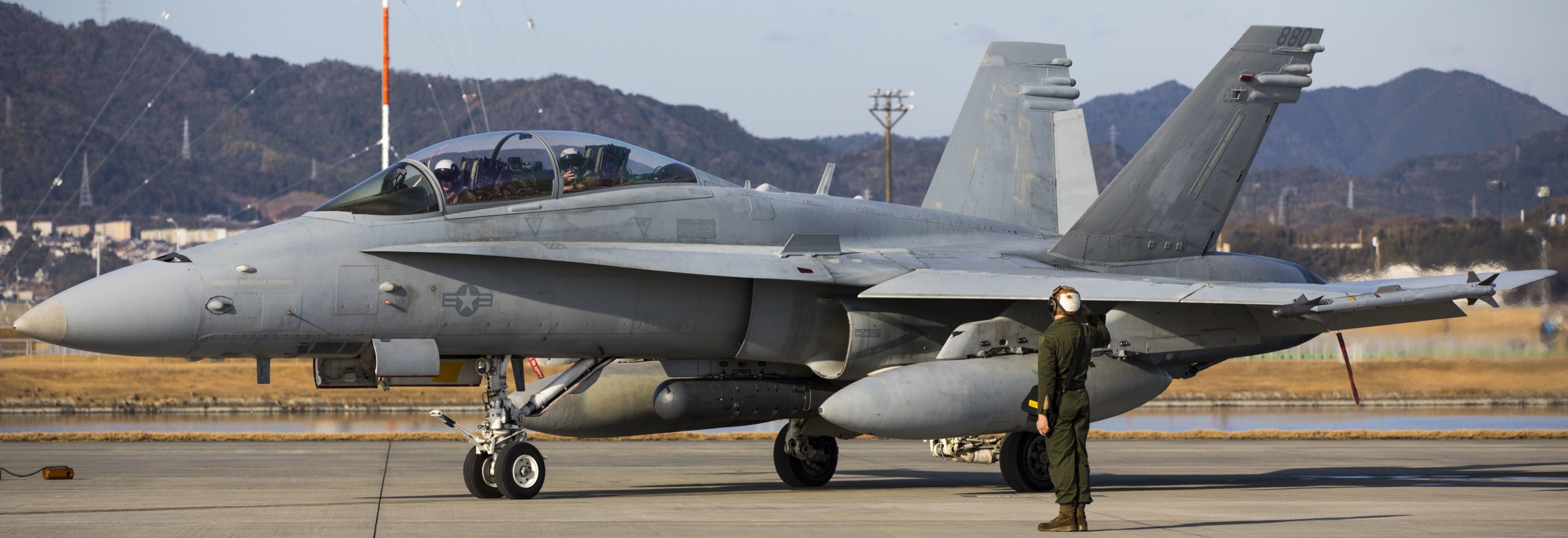 F/A-18D Hornet (VMFA-312) at MCAS Iwakuni, Japan - January 2023 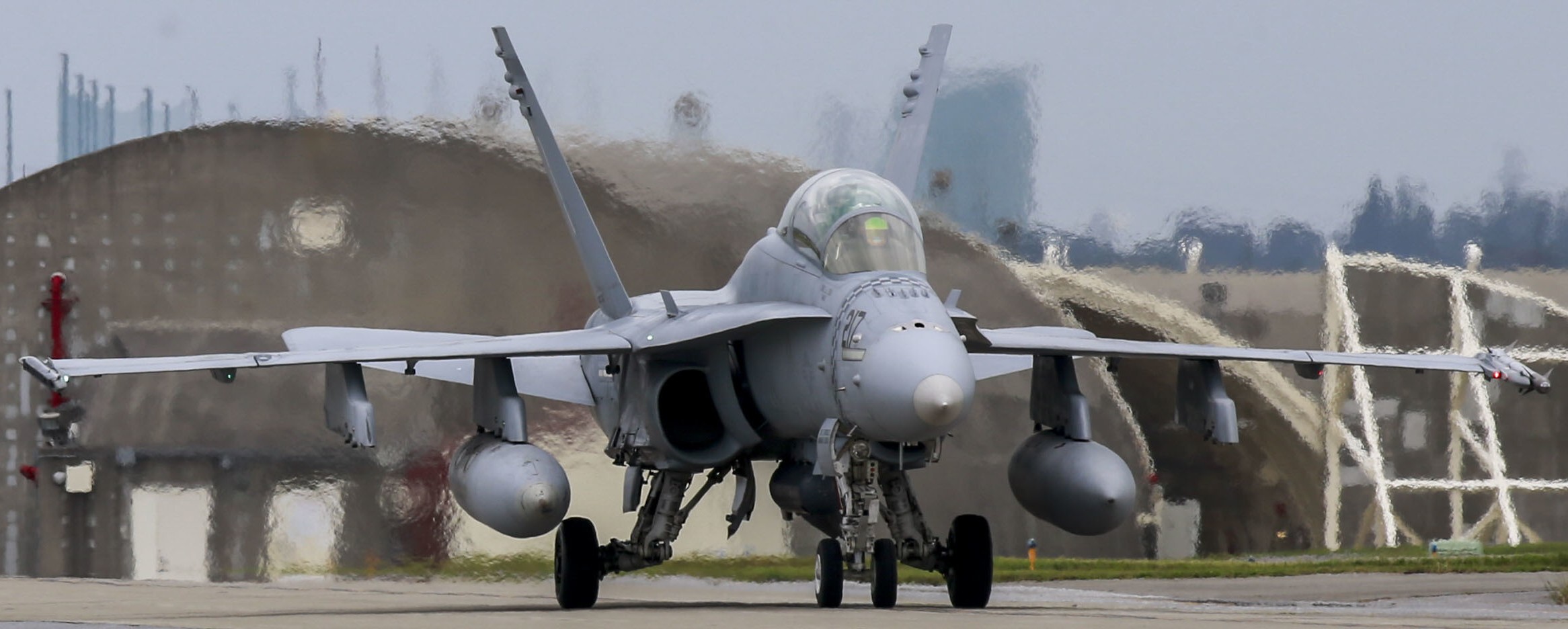 F/A-18D Hornet (VMFA-312) at Kadena Air Base, Japan - December 2022 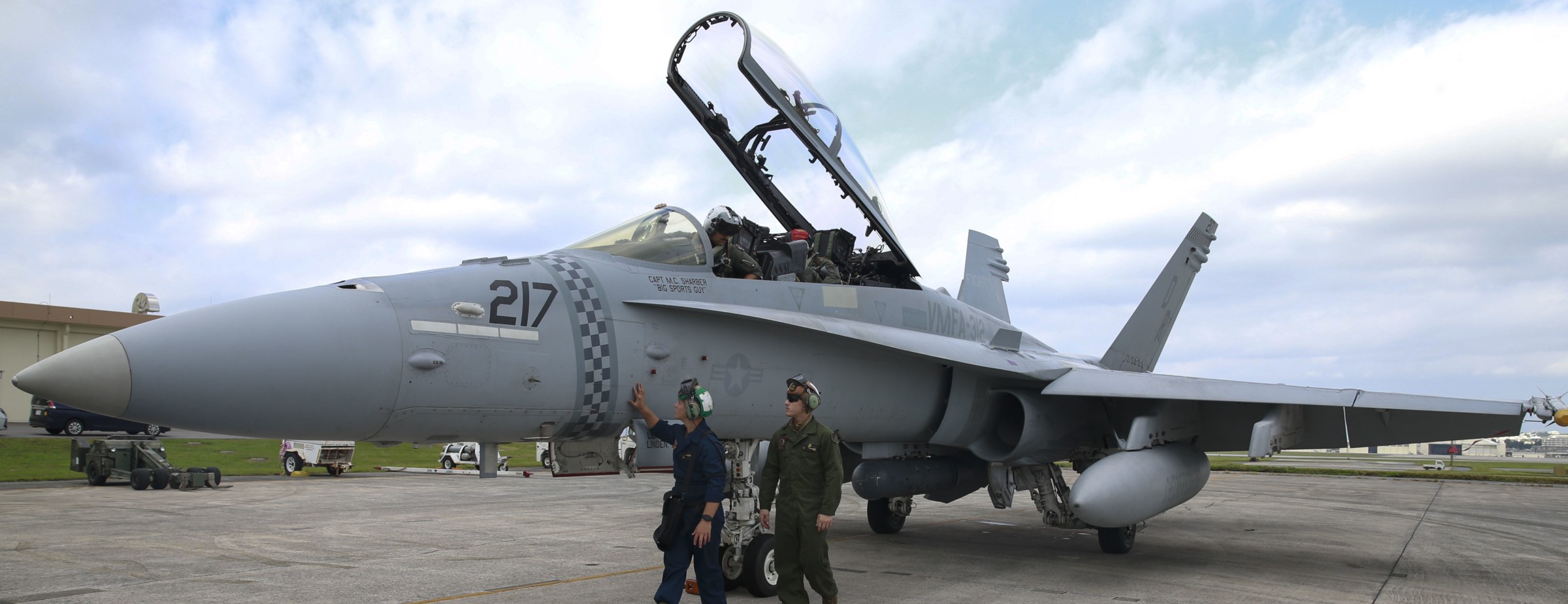 F/A-18D Hornet (VMFA-312) at Kadena Air Base, Japan - December 2022 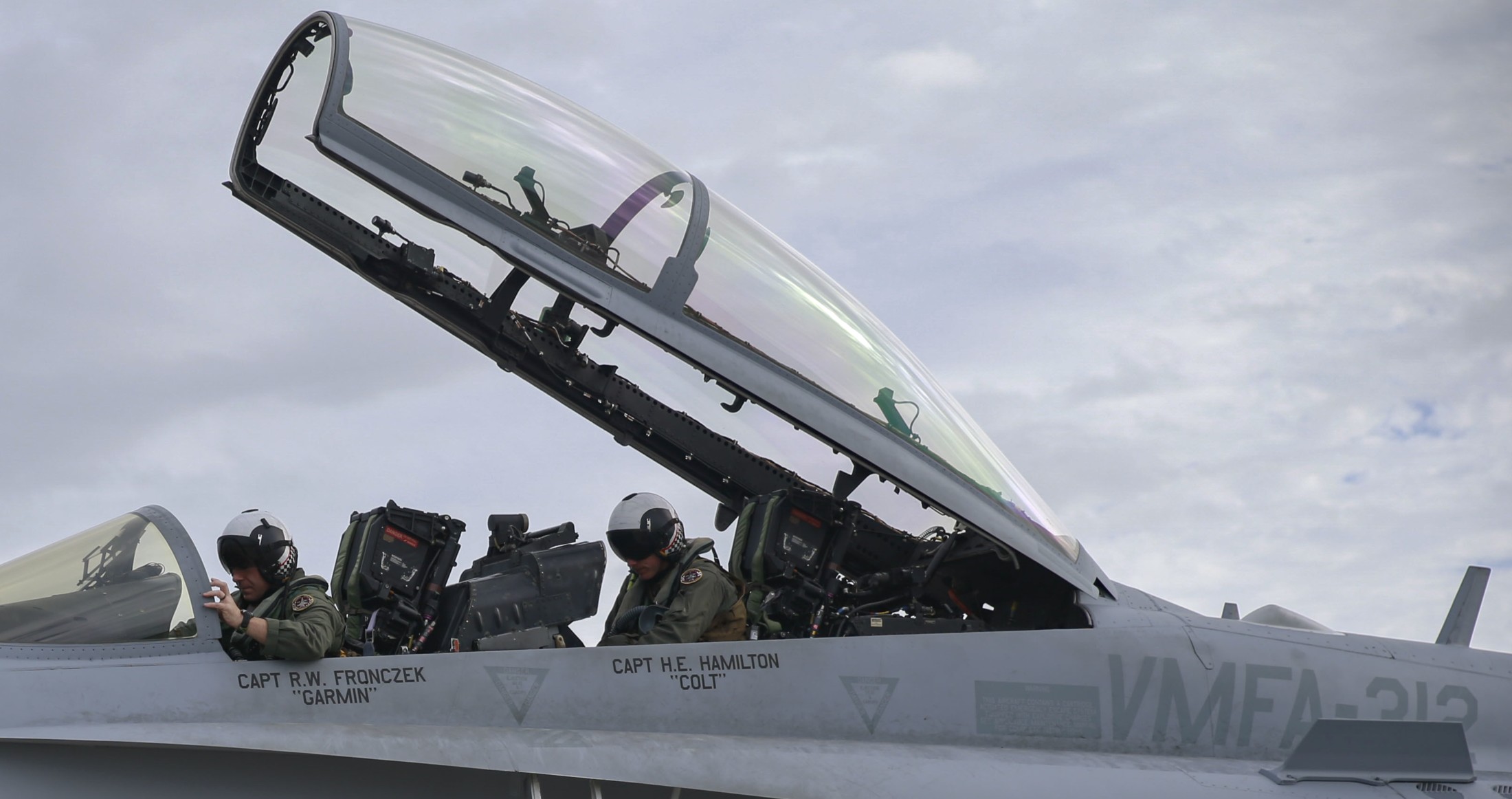 F/A-18D Hornet (VMFA-312) at Kadena Air Base, Japan - December 2022  F/A-18C Hornet (VMFA-312) during Exercise Keen Sword 23 at Nyutabaru Air Base, Japan - November 2022  F/A-18C Hornet (VMFA-312) during Exercise Keen Sword 23 at Nyutabaru Air Base, Japan - November 2022  F/A-18C Hornet (VMFA-312) during Exercise Keen Sword 23 at Nyutabaru Air Base, Japan - November 2022 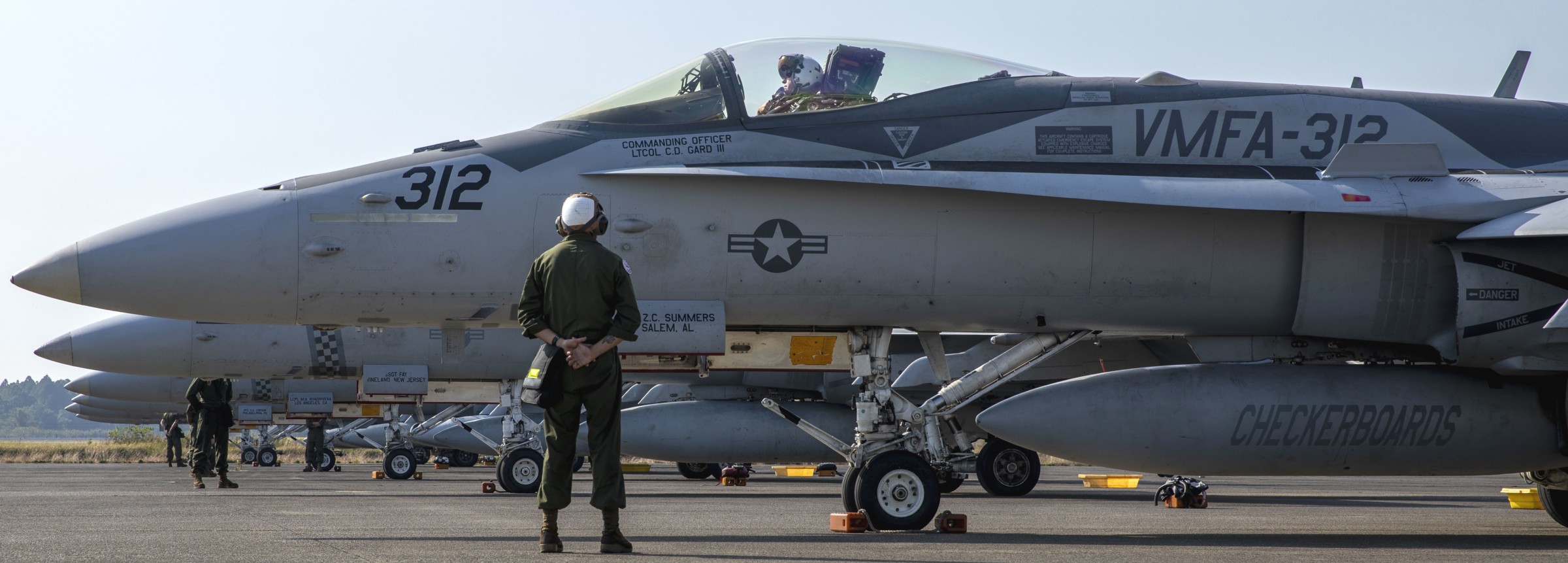 F/A-18C Hornet (VMFA-312) during Exercise Keen Sword 23 at Nyutabaru Air Base, Japan - November 2022 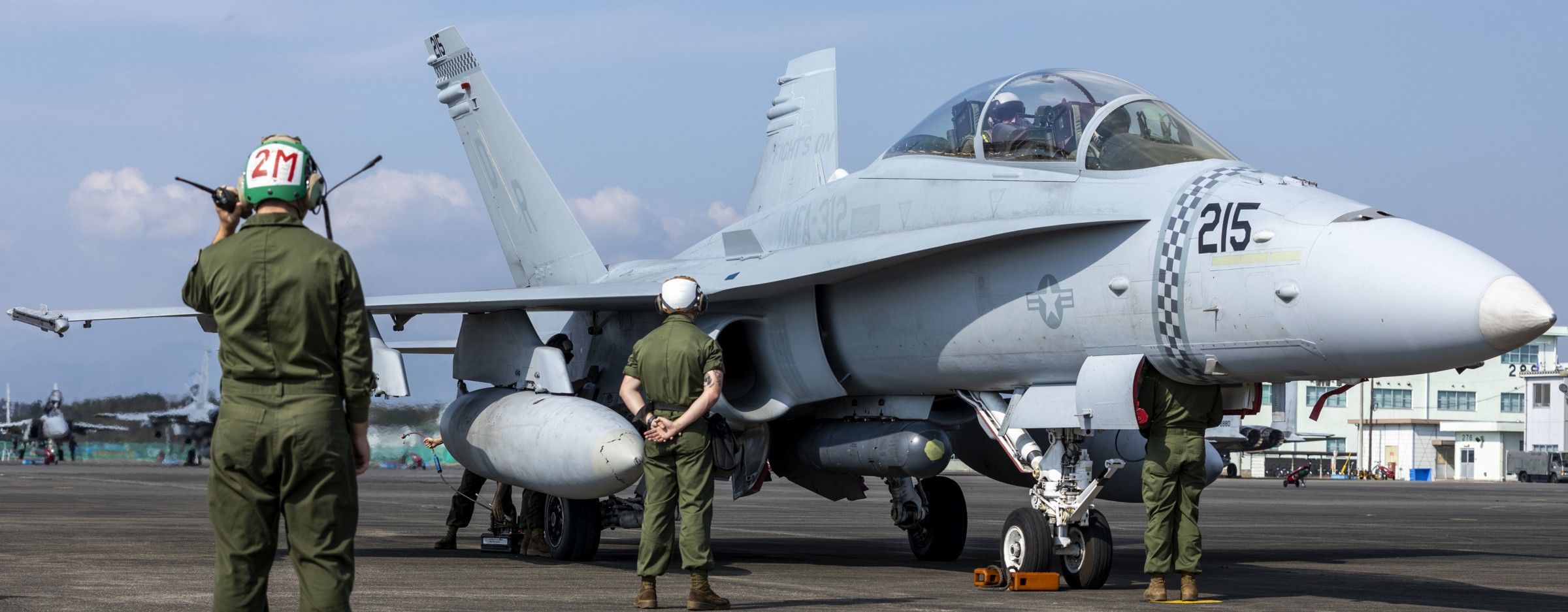 F/A-18D Hornet (VMFA-312) during Exercise Keen Sword 23 at Nyutabaru Air Base, Japan - November 2022 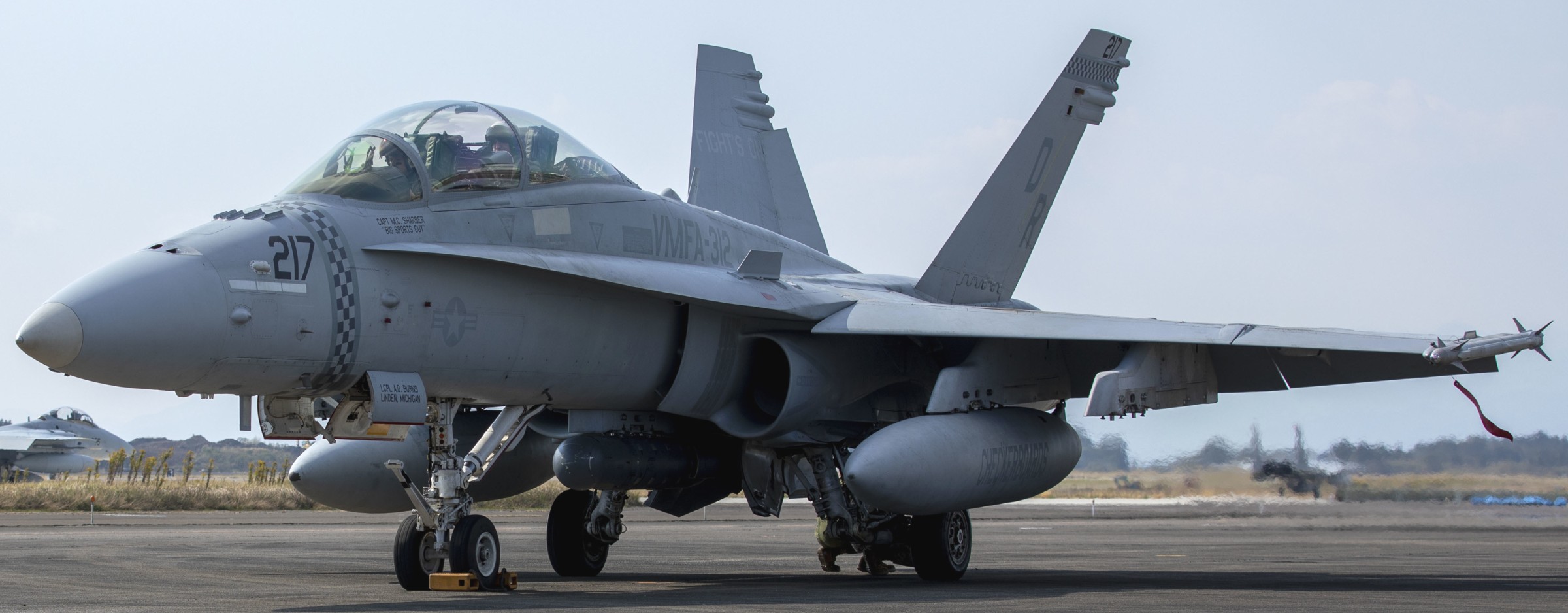 F/A-18D Hornet (VMFA-312) during Exercise Keen Sword 23 at Nyutabaru Air Base, Japan - November 2022  F/A-18D Hornet (VMFA-312) during Exercise Keen Sword 23 at Nyutabaru Air Base, Japan - November 2022 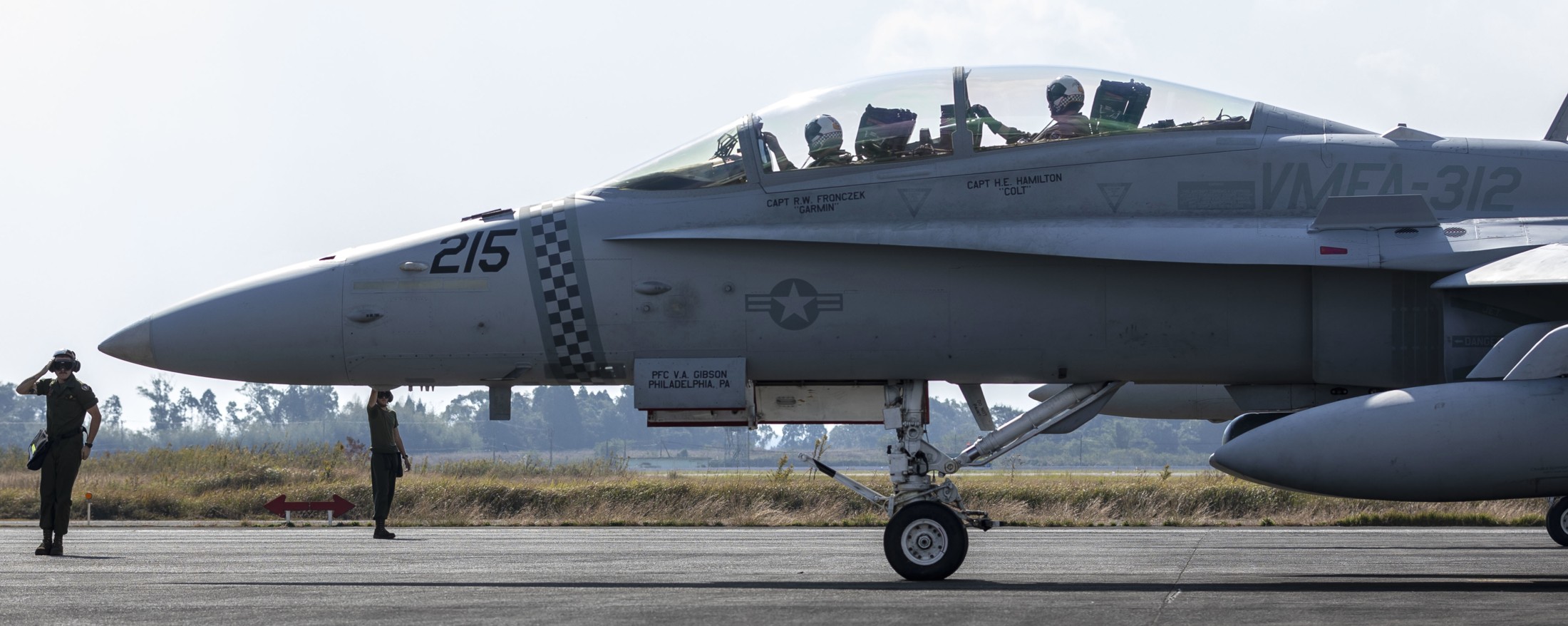 F/A-18D Hornet (VMFA-312) during Exercise Keen Sword 23 at Nyutabaru Air Base, Japan - November 2022 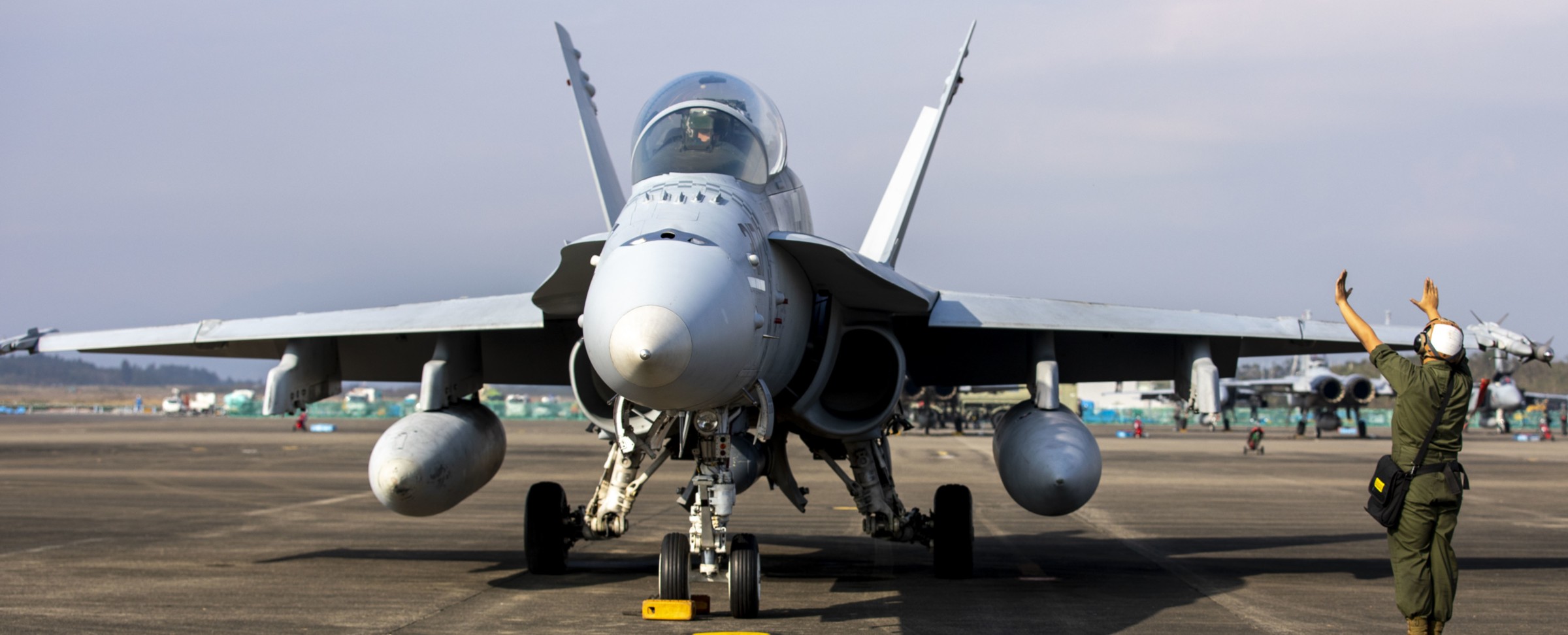 F/A-18D Hornet (VMFA-312) during Exercise Keen Sword 23 at Nyutabaru Air Base, Japan - November 2022 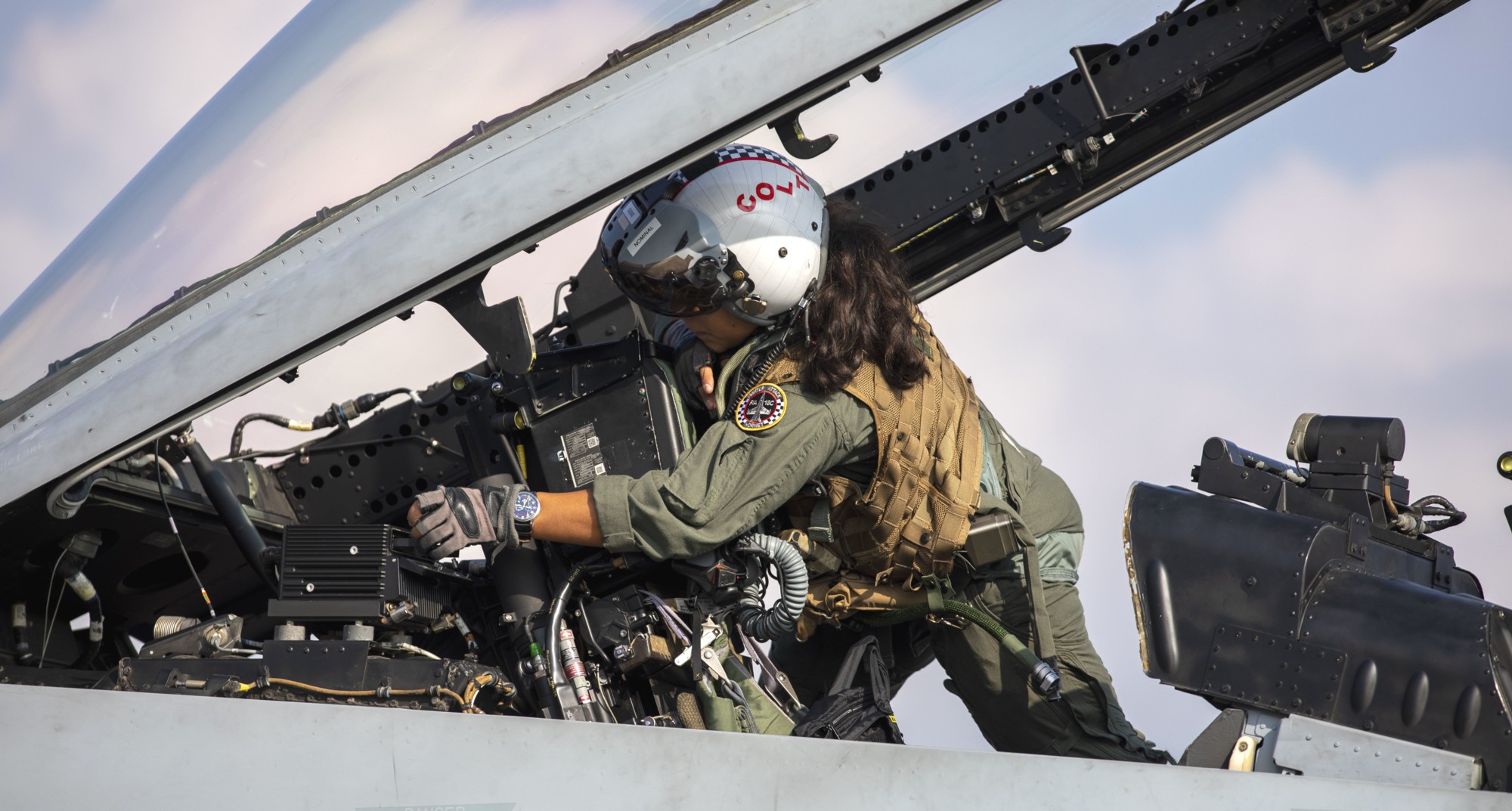 F/A-18D Hornet (VMFA-312) during Exercise Keen Sword 23 at Nyutabaru Air Base, Japan - November 2022 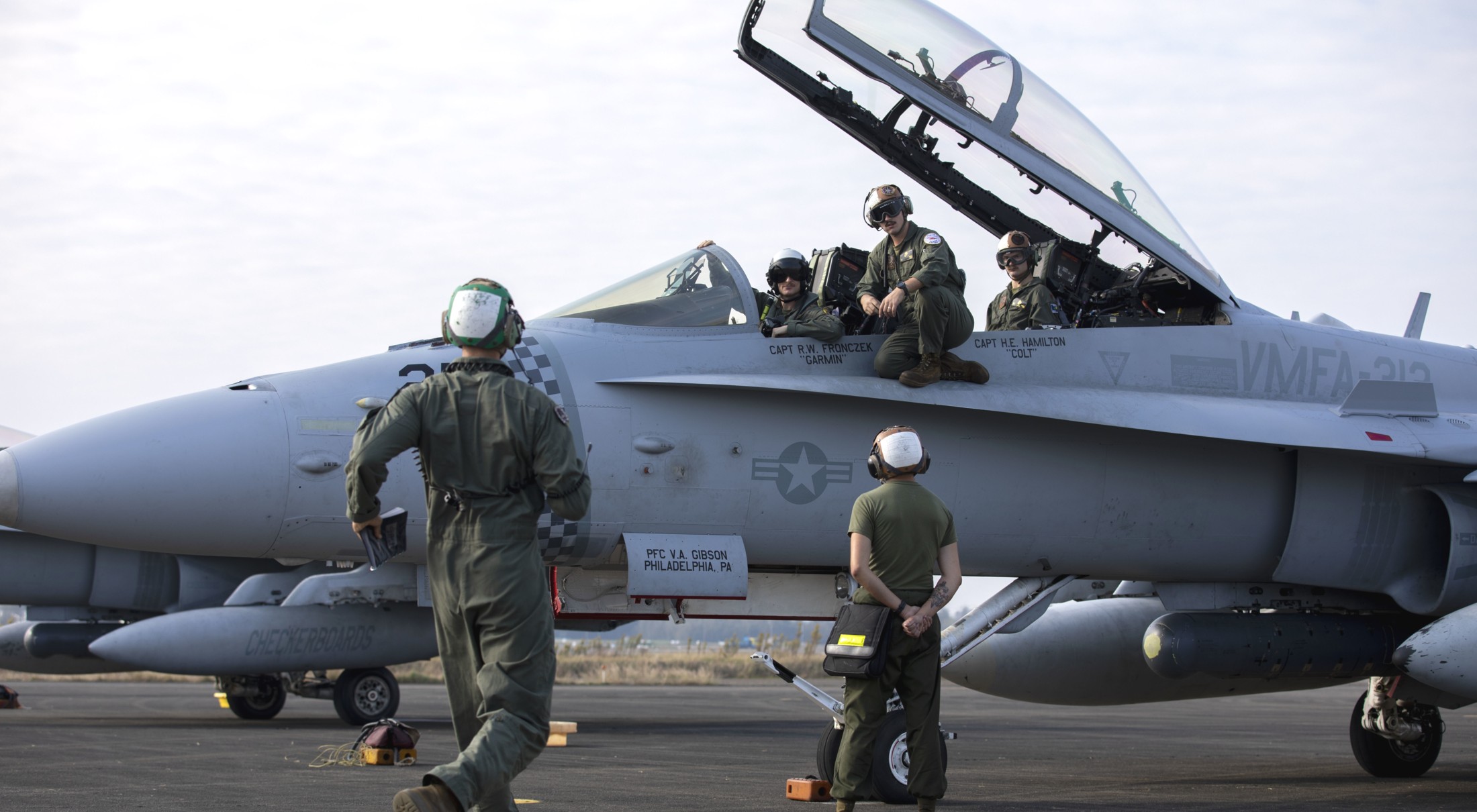 F/A-18D Hornet (VMFA-312) during Exercise Keen Sword 23 at Nyutabaru Air Base, Japan - November 2022 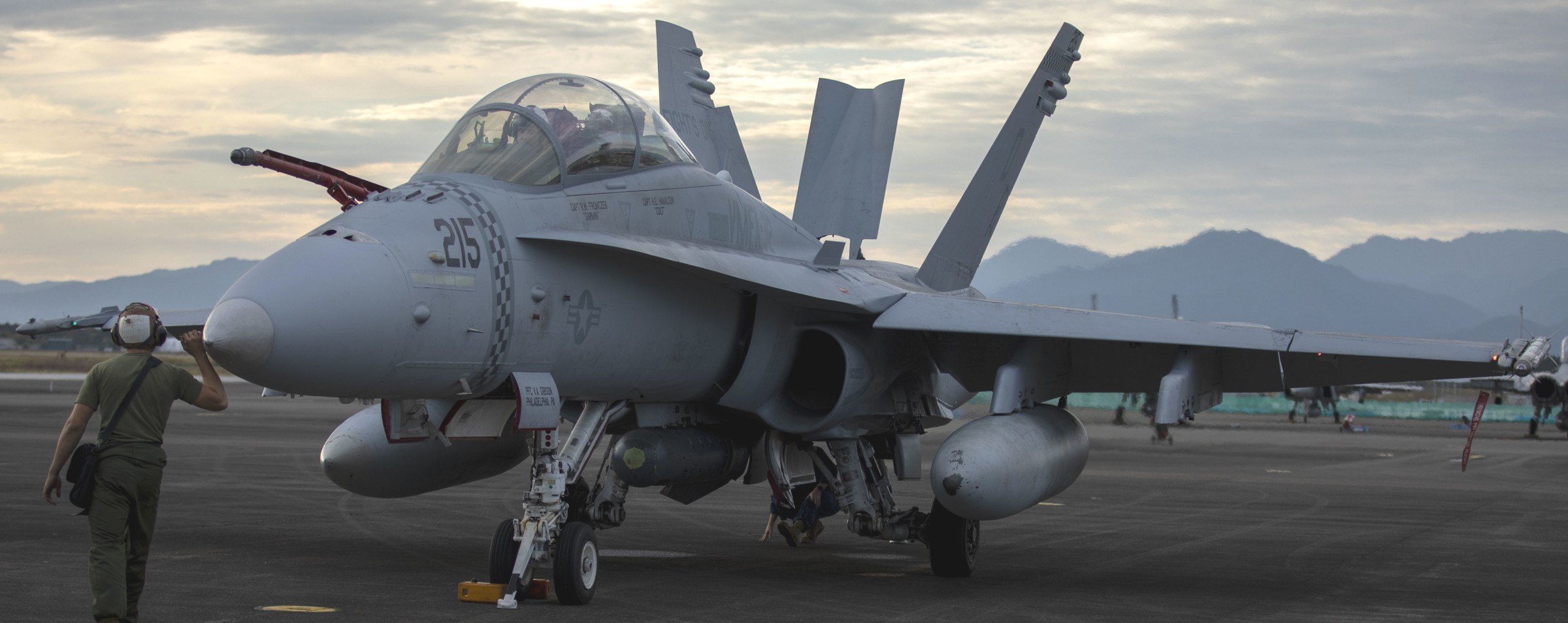 F/A-18D Hornet (VMFA-312) during Exercise Keen Sword 23 at Nyutabaru Air Base, Japan - November 2022 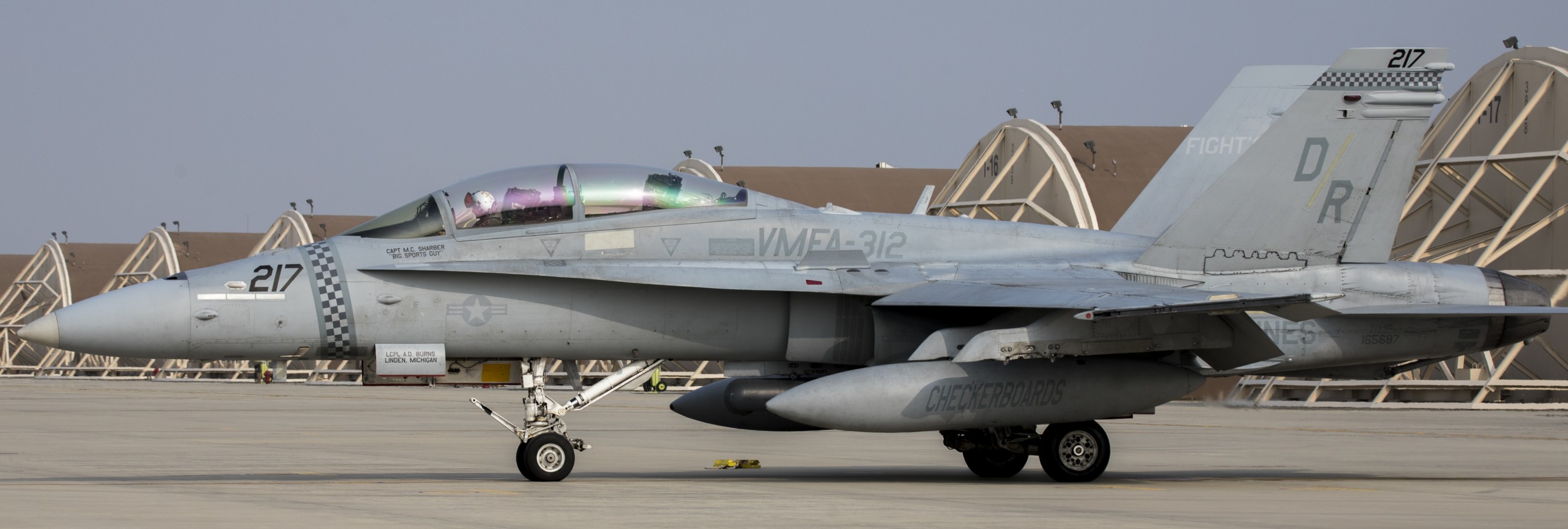 F/A-18D Hornet (VMFA-312) during Exercise Vigilant Storm 23 at Kunsan Air Base, Republic of Korea - November 2022  F/A-18D Hornet (VMFA-312) during Exercise Vigilant Storm 23 at Kunsan Air Base, Republic of Korea - November 2022 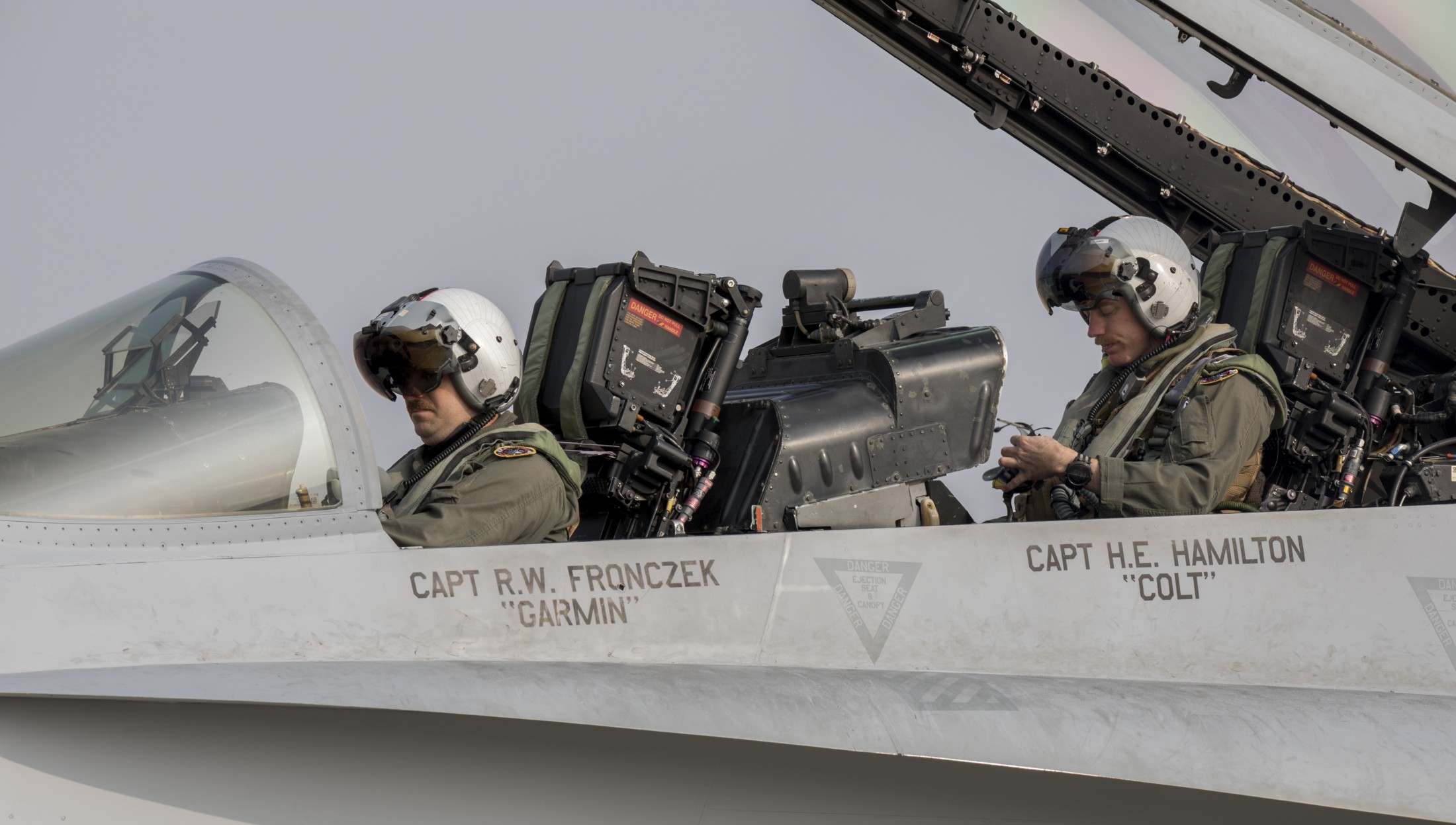 F/A-18D Hornet (VMFA-312) during Exercise Vigilant Storm 23 at Kunsan Air Base, Republic of Korea - November 2022 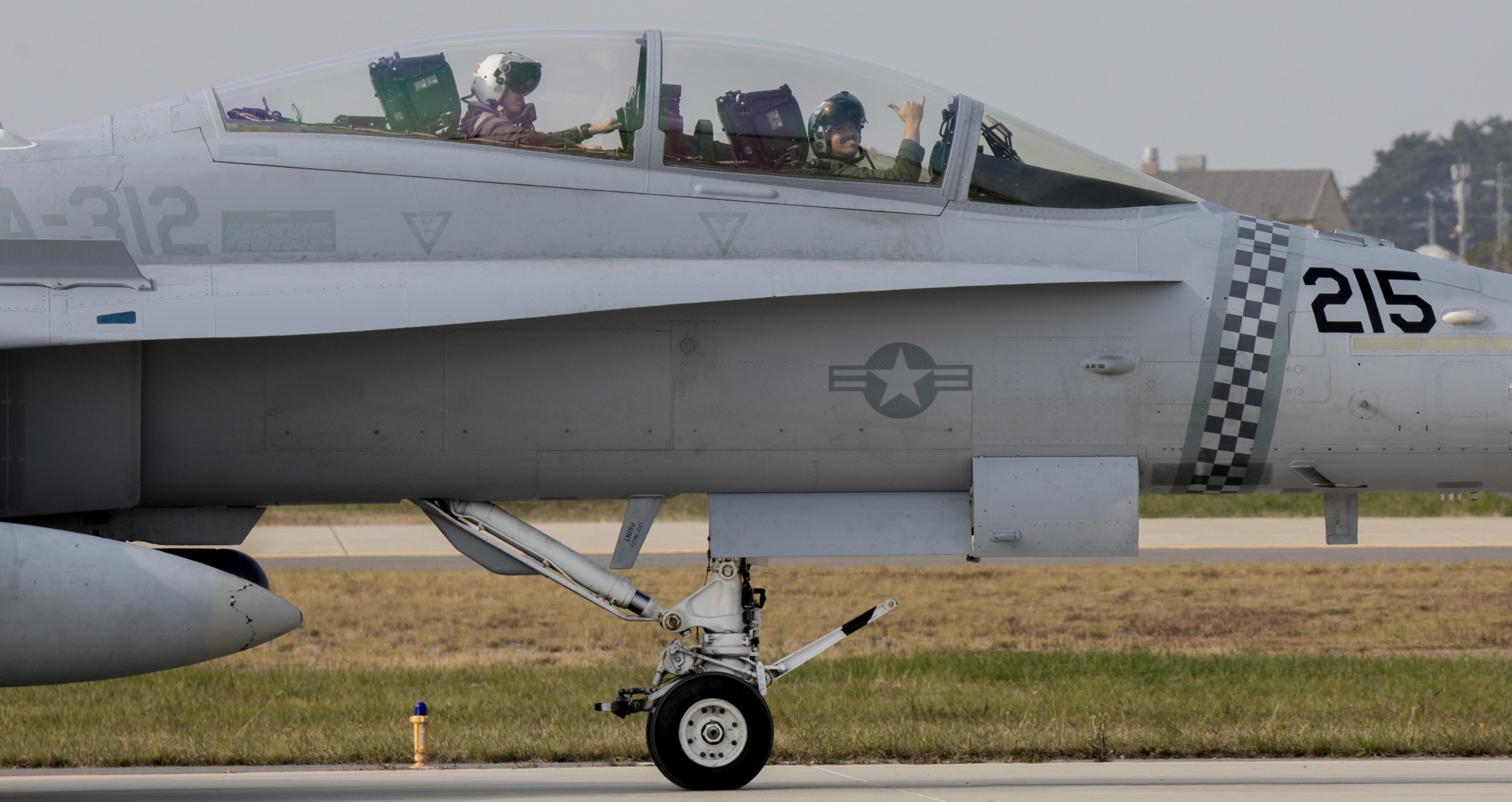 F/A-18D Hornet (VMFA-312) during Exercise Vigilant Storm 23 at Kunsan Air Base, Republic of Korea - November 2022  F/A-18C Hornet (VMFA-312) - Pacific Ocean - October 2022 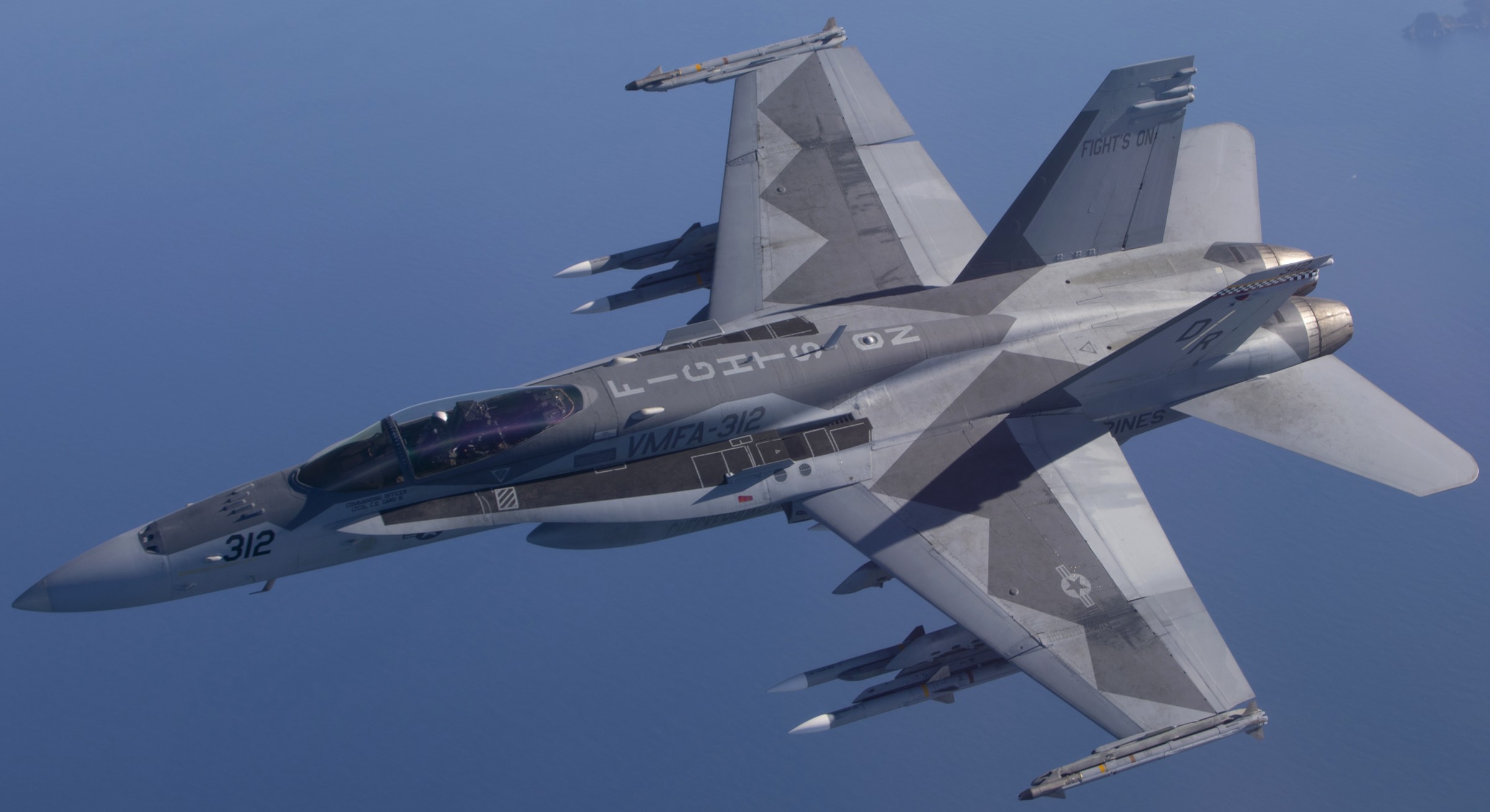 F/A-18C Hornet (VMFA-312) - Pacific Ocean - October 2022 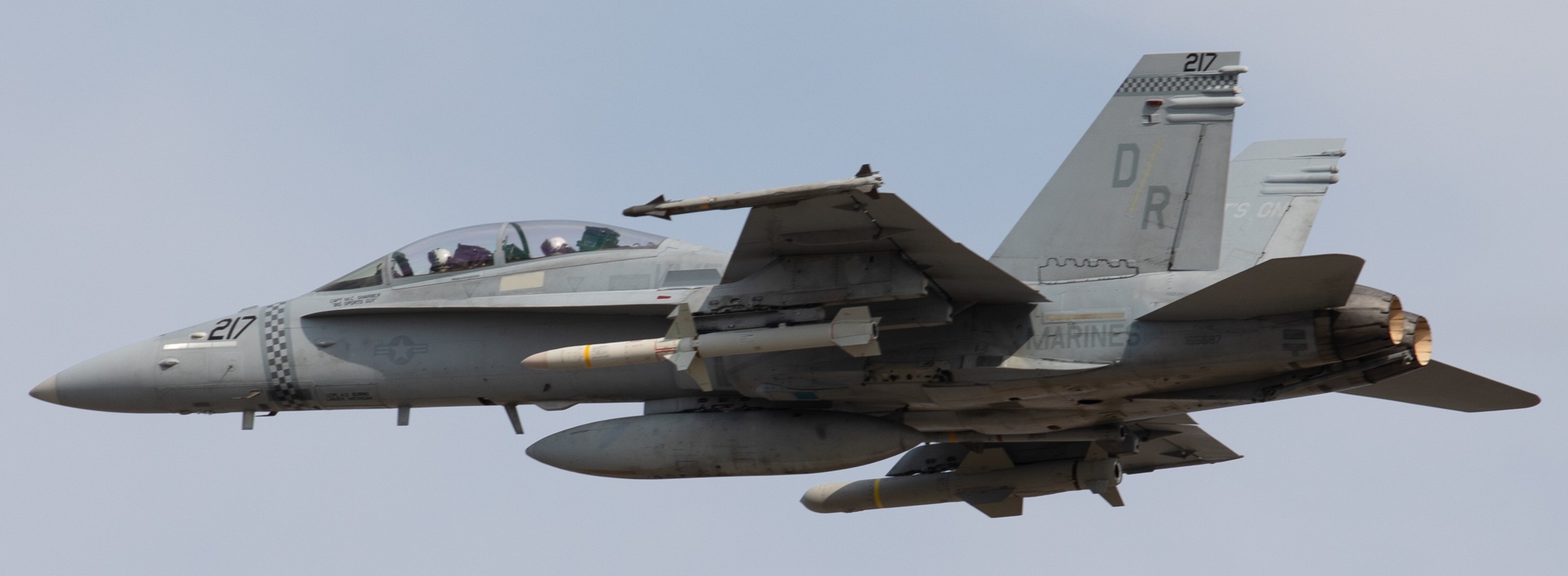 F/A-18D Hornet (VMFA-312), forward deployed to MCAS Iwakuni, Japan armed with (one each) AGM-84D Harpoon, AIM-120D AMRAAM, AIM-9X Sidewinder and AGM-88E HARM Advanced Antiradiation Guided Missile (AARGM) 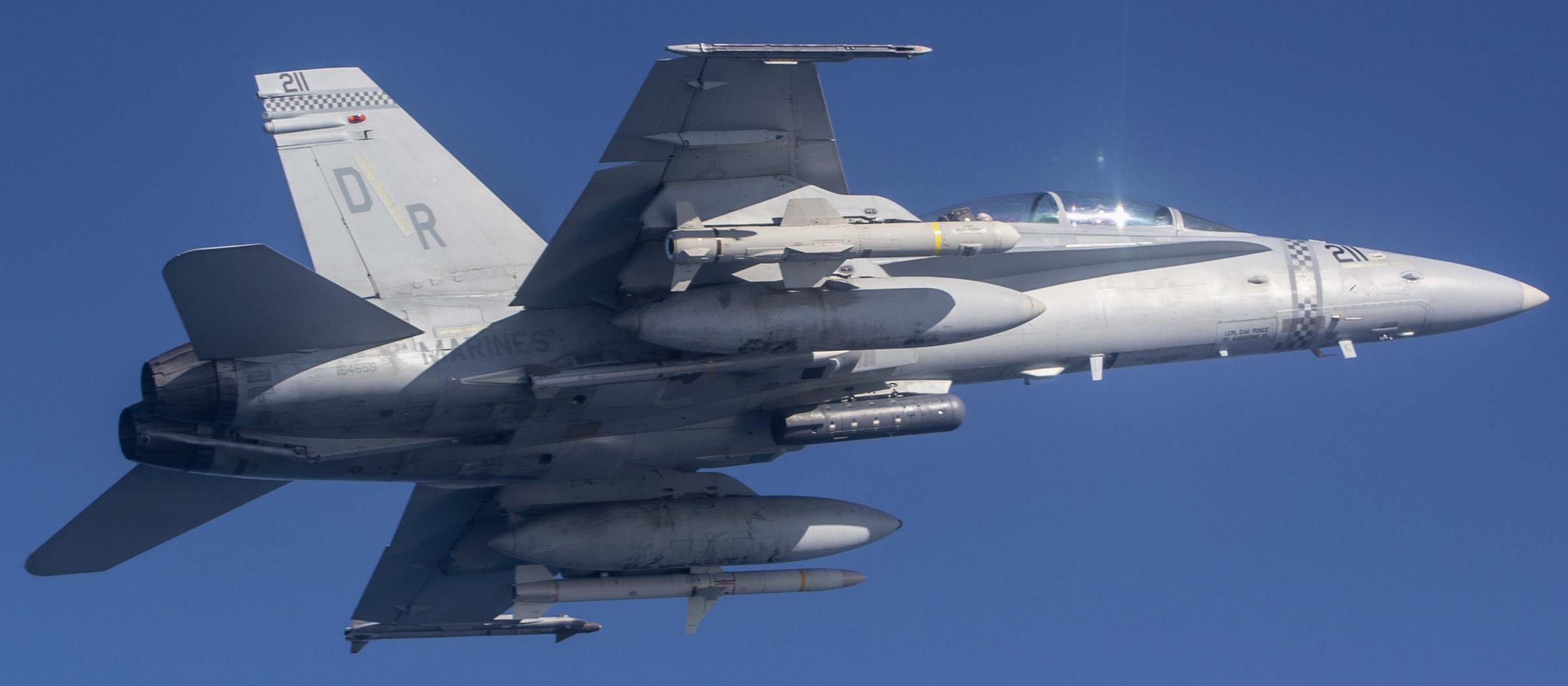 F/A-18D Hornet (VMFA-312), forward deployed to MCAS Iwakuni, Japan armed with (one each) AGM-84D Harpoon, AIM-120D AMRAAM, AIM-9X Sidewinder and AGM-88E Advanced Antiradiation Guided Missile (AARGM) 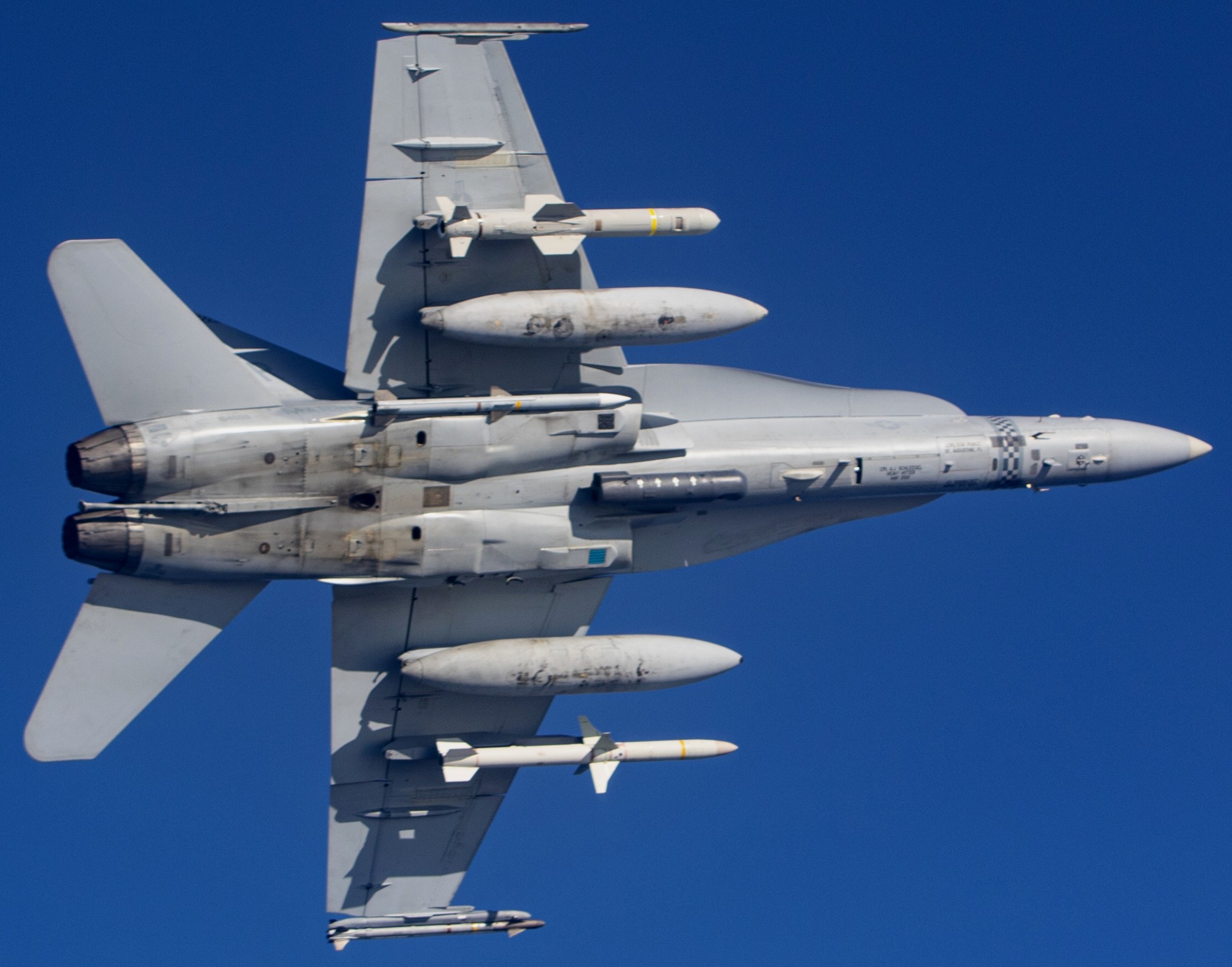 F/A-18D Hornet (VMFA-312), forward deployed to MCAS Iwakuni, Japan armed with (one each) AGM-84D Harpoon, AIM-120D AMRAAM, AIM-9X Sidewinder and AGM-88E Advanced Antiradiation Guided Missile (AARGM)  F/A-18C+D Hornets (VMFA-312), fully armed over the Pacific Ocean - October 2022 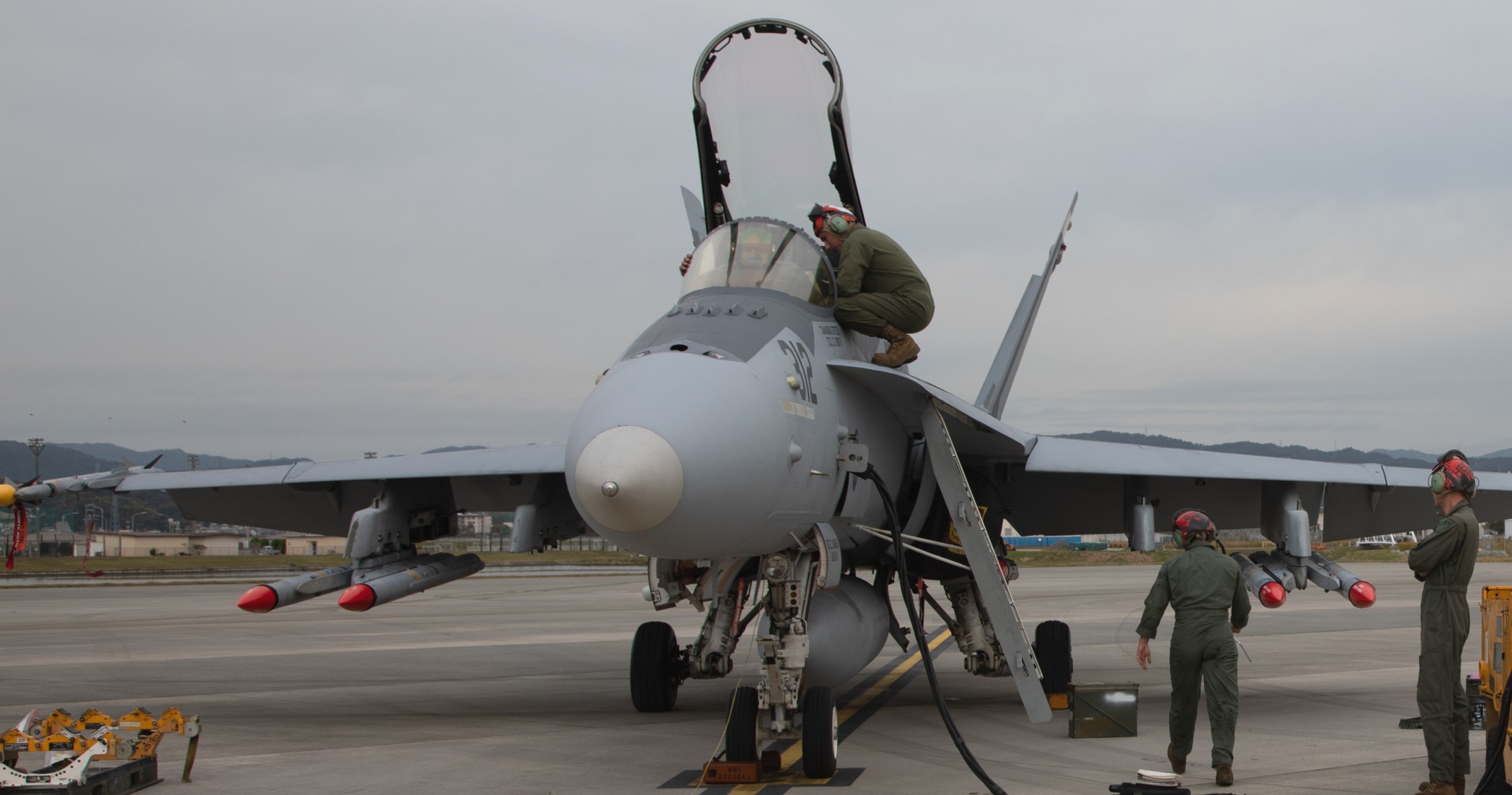 F/A-18C Hornet (VMFA-312) - ordnance loading exercise at MCAS Iwakuni, Japan - October 2022 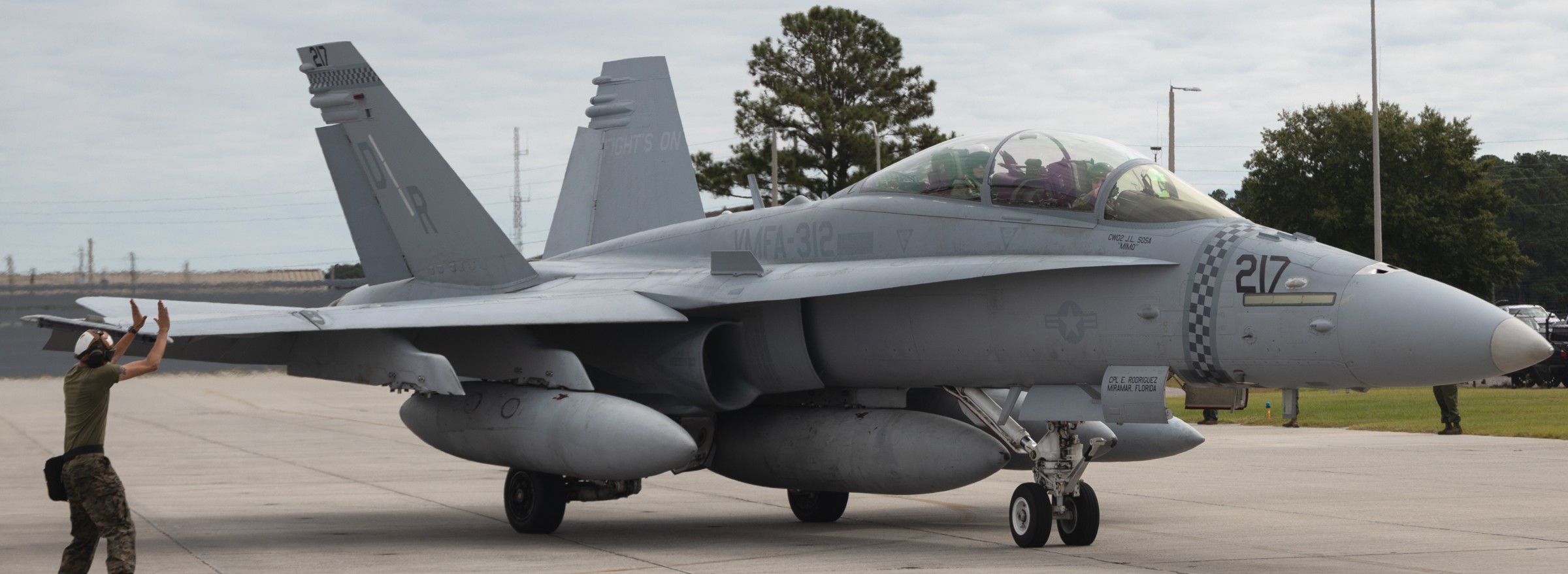 F/A-18D Hornet (VMFA-312) departing MCAS Beaufort, South Carolina for a deployment at MCAS Iwakuni, Japan - October 2, 2022  F/A-18C Hornet (VMFA-312) departing MCAS Beaufort, South Carolina for a deployment at MCAS Iwakuni, Japan - October 2, 2022 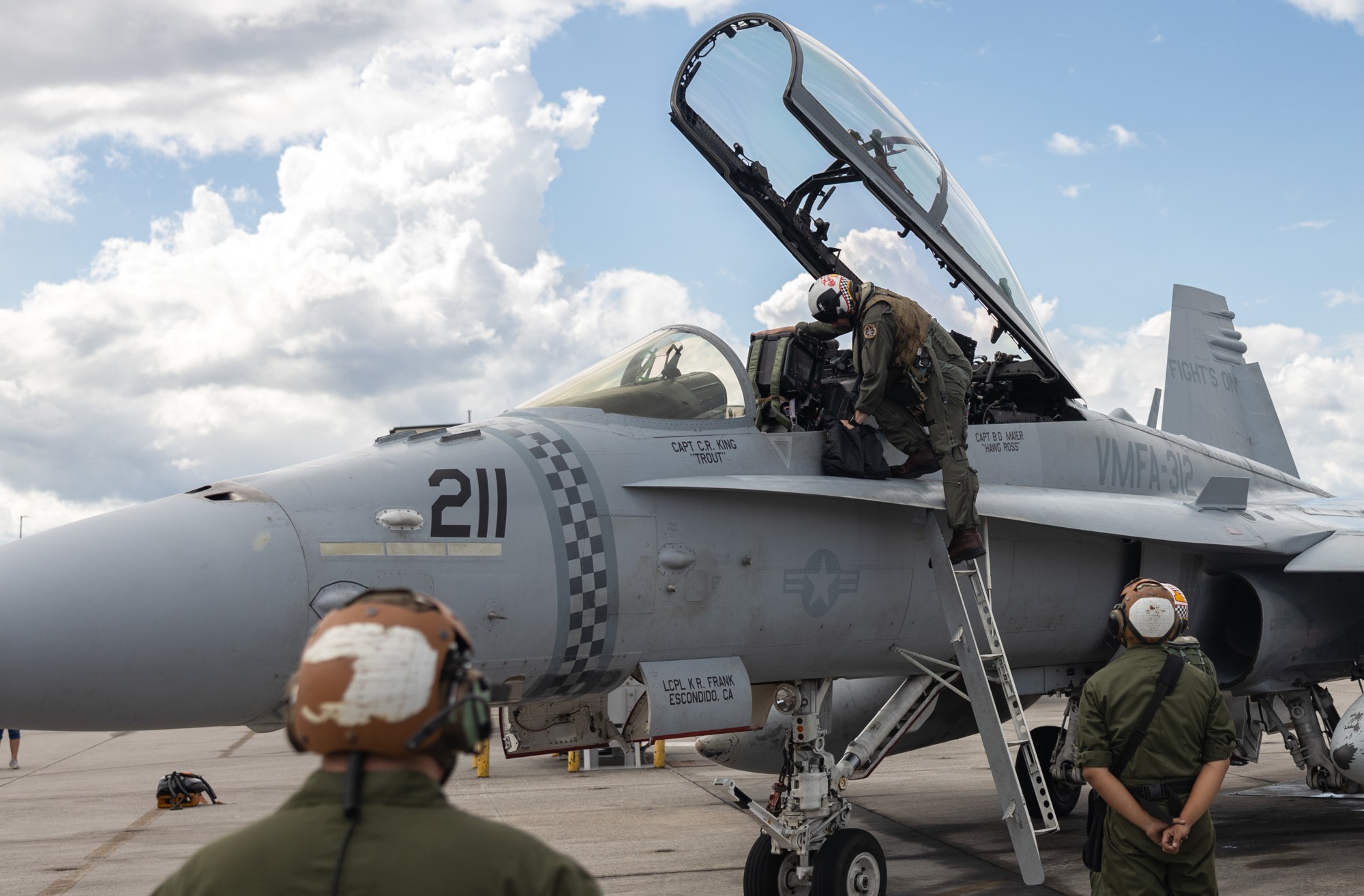 F/A-18D Hornet (VMFA-312) at MCAS Beaufort, South Carolina - September 2022 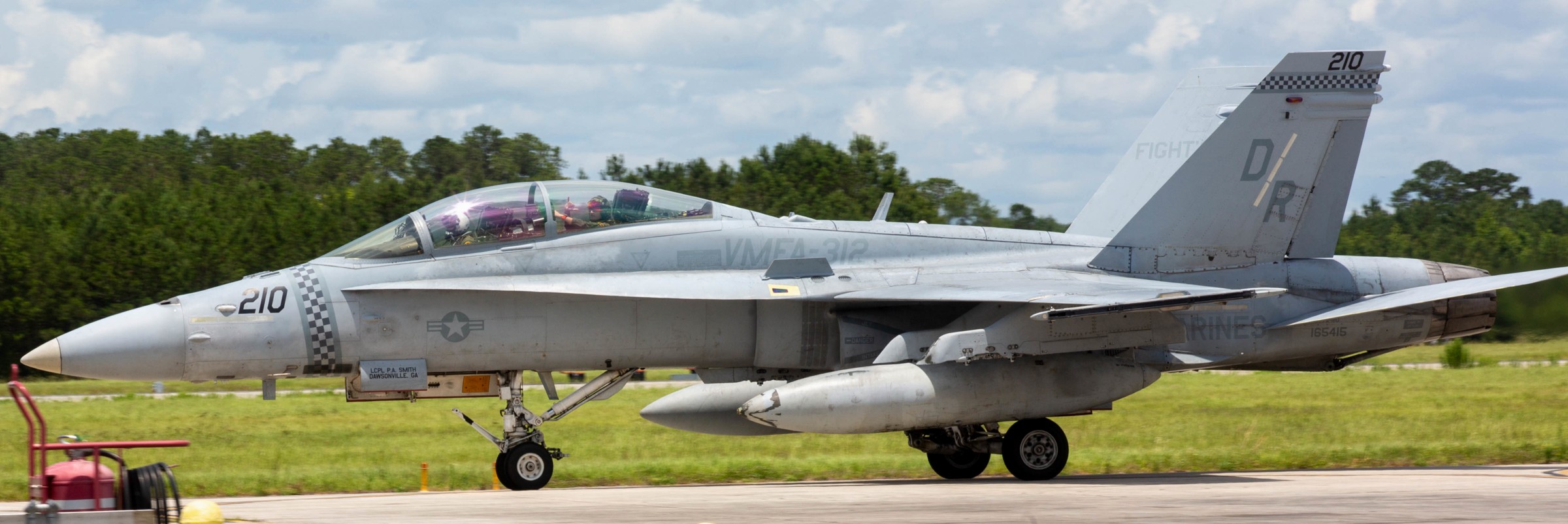 F/A-18D Hornet (VMFA-312) at MCAS Beaufort, South Carolina - June 2022  F/A-18D Hornet (VMFA-312) at MCAS Beaufort, South Carolina - June 2022  F/A-18C Hornet (VMFA-312) during NATO Enhanced Air Policing over Poland - May 2022  F/A-18C Hornet (VMFA-312) during NATO Enhanced Air Policing over Poland - May 2022 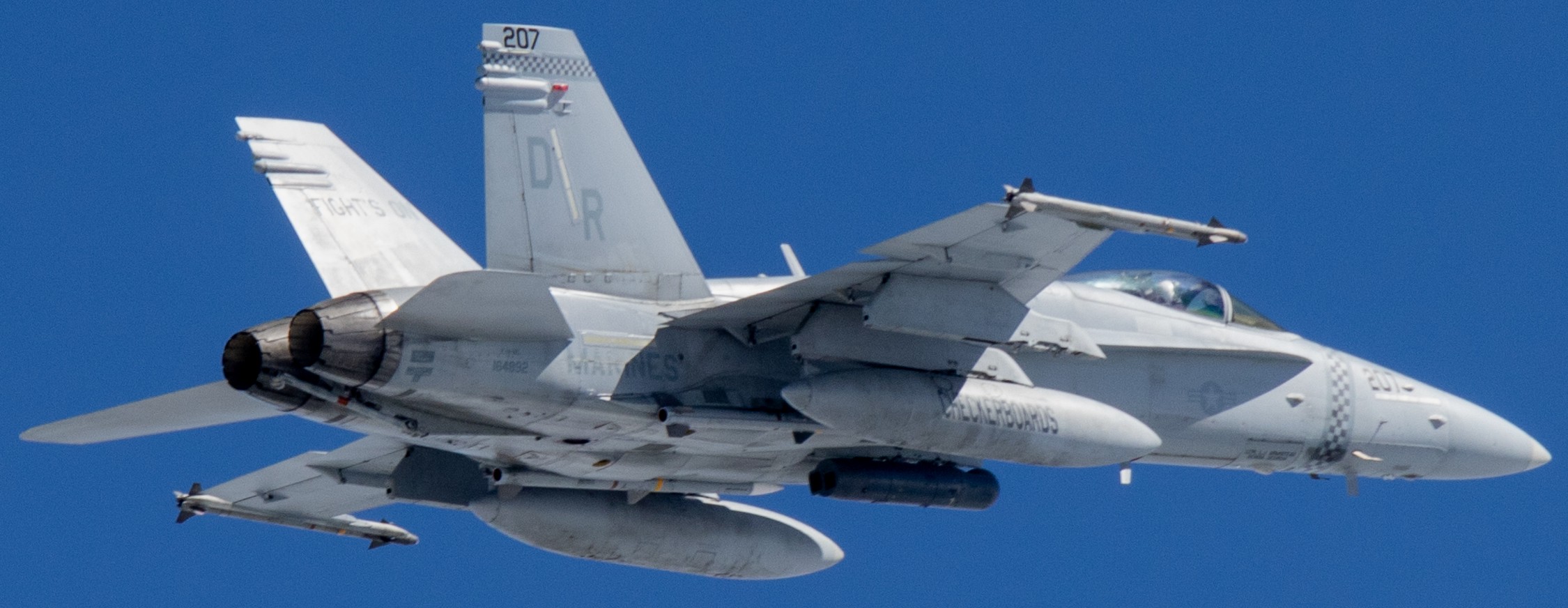 F/A-18C Hornet (VMFA-312) during NATO Enhanced Air Policing over Poland - May 2022  F/A-18D Hornet (VMFA-312) at Lask Air Base, Poland - April 2022 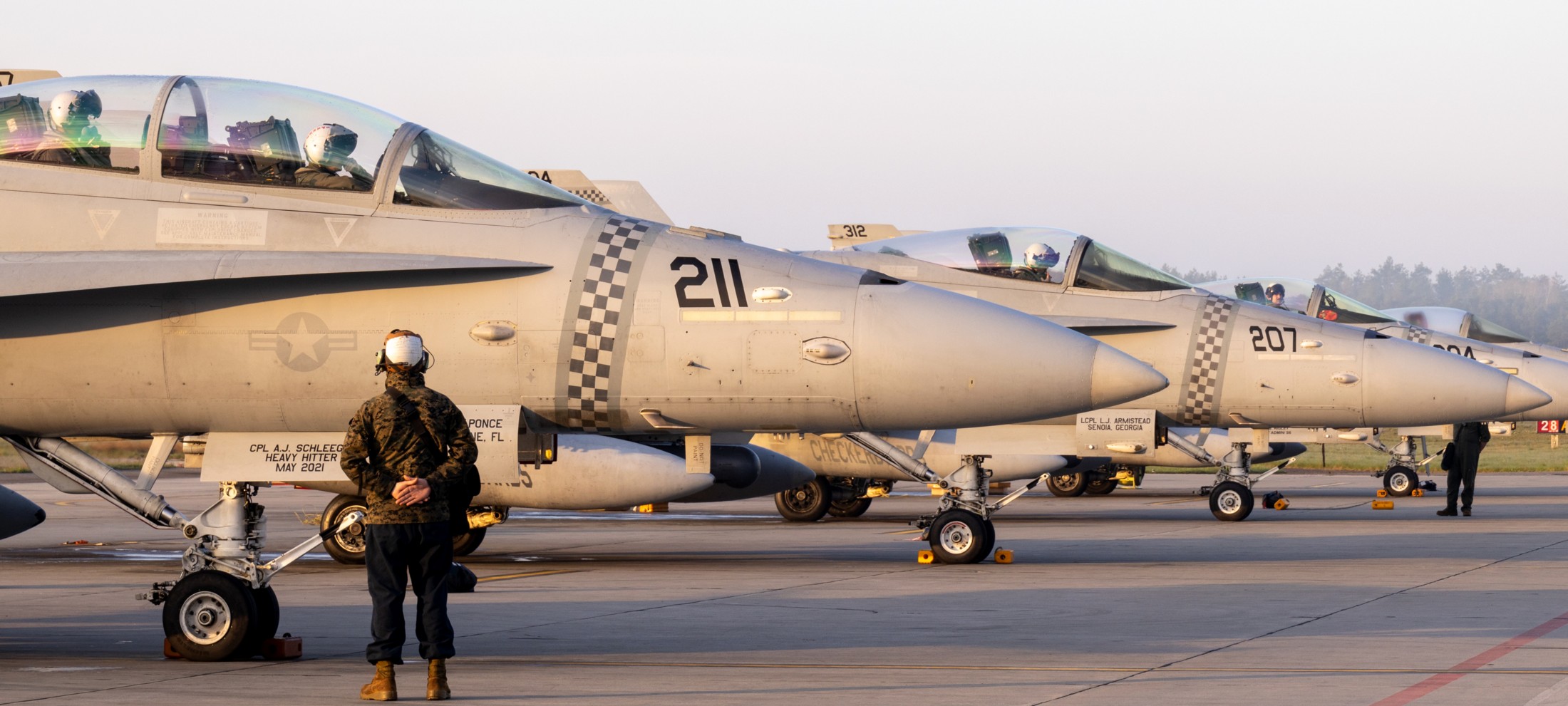 F/A-18C+D Hornet (VMFA-312) at Lask Air Base, Poland - April 2022 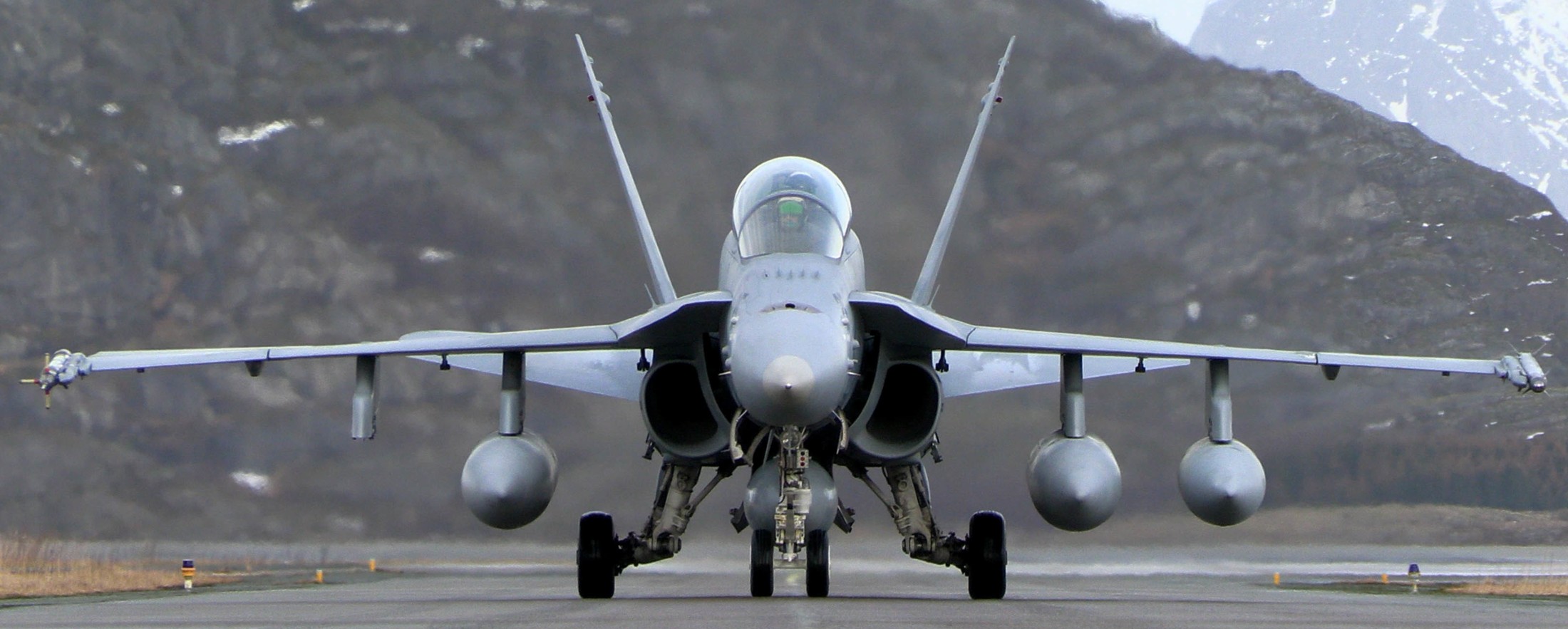 F/A-18D Hornet (VMFA-312) during NATO Exercise Cold Response 22 at Bodo Air Station, Norway - February 2022 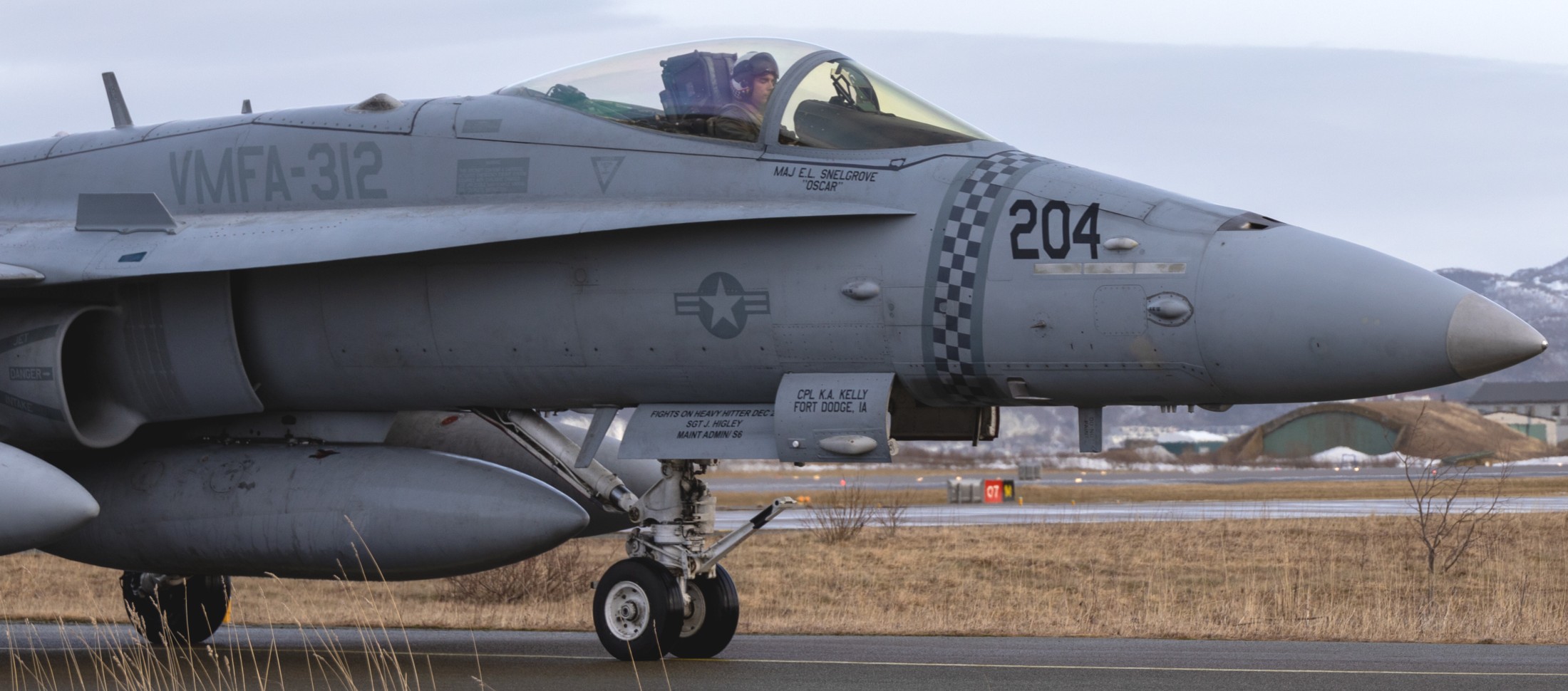 F/A-18C Hornet (VMFA-312) during NATO Exercise Cold Response 22 at Bodo Air Station, Norway - February 2022 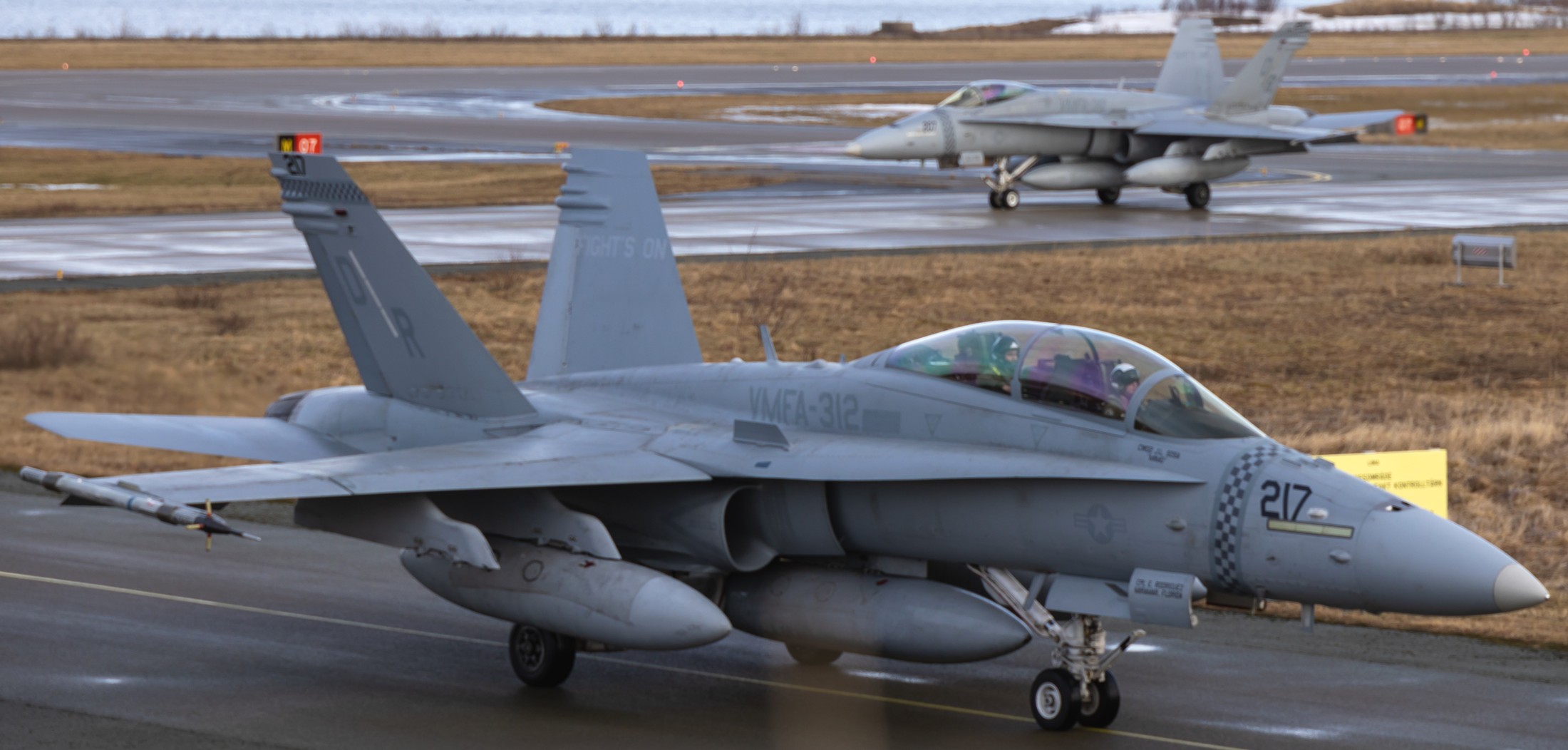 F/A-18D Hornet (VMFA-312) during NATO Exercise Cold Response 22 at Bodo Air Station, Norway - February 2022  F/A-18D Hornet (VMFA-312) during Exercise Cope North at Andersen AFB, Guam - February 2021  F/A-18D Hornet (VMFA-312) during Exercise Cope North at Andersen AFB, Guam - February 2021  F/A-18D Hornet (VMFA-312) during Exercise Cope North at Andersen AFB, Guam - February 2021  F/A-18D Hornet (VMFA-312) during Exercise Cope North at Andersen AFB, Guam - February 2021  F/A-18D Hornet (VMFA-312) during Exercise Cope North at Andersen AFB, Guam - February 2021  a laser-guided bomb was loaded onto an F/A-18D Hornet (VMFA-312) during Exercise Cope North at Andersen AFB, Guam - February 2021 > continue > VMFA-312 image page 2 < |
||||||
|
History: Marine Fighter Squadron 312 (VMF-312) was commissioned on 1 June 1943 at Page Field, Parris Island, South Carolina. Commanded by Major Richard M. Day, the squadron began flight operations with 10 North American SNJ-4 Texans and one F4U-1D’s and one SNJ-4. The squadron began combat training due to the urgency of the war effort. At this time, the Checkerboards emblem began to appear on both the cowling and rudder of the aircraft. Sporting six .50 caliber machine guns, the design continues to adorn the identifier of VMFA-312. Departing Parris Island on 2 January 1944, the squadron prepared to begin combat operations in the Pacific theater. Embarked upon the USS HORNET (CV-12), the squadron was initially assigned to defend the Hawaiian Sea Frontier Command. Assigned to Marine Aircraft Group 11 on 25 June 1944, the squadron was transported to Espiritu Santo, New Hebrides, where they received 24 Goodyear FG-1 Corsairs. With newly installed 3.5 and 5 inch rocket launchers, the squadron prepared for its first combat action from the recently captured Kadena airstrip. VMF-312’s first tasted blood on 12 April 1945, when four squadron aircraft intercepted 20 Japanese Zero’s and achieved eight kills without a loss. VMF-312 continued to operate from Kadena Air Base until the cessation of hostilities. By war’s end, the squadron had accounted for 60 and one half-air combat kills in the Pacific Theater. Returning to the United States in February 1946, the squadron began operations at Marine Corps Air Station El Toro as part of Marine Aircraft Group 33, where the squadron completed a transition to the Grumman F7F-3 Tigercats, a single seat day fighter variant of the two seat F7F night fighter. Although the F7F night fighter continued in service for several years, the day fighter version proved unsuitable, and VMF-312 transitioned back to Corsairs, this time the F4U-4, and upgraded to a higher performance model. Following several years of peacetime operations in support of Marine Training Operations, the squadron transferred to Marine Aircraft Group 12, MCAS El Toro in July 1950 and was alerted for deployment and service in the Korean Conflict. The first VMF-312 aircraft flew in Korea on 19 September 1950. Flying out of Wonson Air Base, the Checkerboards flew missions in support of the 1st Marine Division near the Chosin Reservoir. Redeployed in March 1951 aboard the light carrier USS BATAAN (CVL-29), the Checkerboards were assigned escort and blockade missions. Leaving the ship in June 1951, the squadron amassed 4,945 accident-free hours of carrier operations while logging 1,920 carrier landings. After a short period of ground based close air support operations, the squadron returned to sea, first with USS BAIROKU (CVE-11), then with USS BATAAN (CVL-29), and later with USS SICILY (CVE-118). While aboard USS BATAAN, the Checkerboards became the first piston engine squadron to shoot down a jet aircraft, when Captain Jesse Gregory Folmar shot down a MIG-15 jet fighter with 20mm cannon fire. On June 8 1953, the Checkerboards were relieved by VMF-332, and returned to the United States in anticipation of transitioning to the Grumman F9F Panther Jet Fighter at Marine Corps Air Station, Miami, Florida. Within a year, the Checkerboards found themselves transitioning to FJ-2 Fury fighters and later in 1965, to the FJ-3 Fury, an improved version. Carrier qualifications preceded the squadron’s reassignment to the newly opened MCAS Beaufort, South Carolina and MAG-32. During the Cuban rebellion, the squadron deployed to Guantanamo Bay, Cuba where normal operations were conducted until the squadron received their new F8U-1 Corsairs. Following the transition, the squadron carrier qualified and relieved VMF-251 at Atsugi, Japan on 1 January 1961. Joining Carrier Air Group 2 onboard USS MIDWAY (CVA-41), the Southeast Asia Theater began to intensify. Reassigned to MCAS El Toro, the squadron designation was changed to Marine All Weather Fighter Squadron, VMF (AW)-312. Normal training operations continued until assignment to the Southeast Asian combat area. Arriving in Da Nang Air Base in December 1965, the squadron flew helicopter escort, close air support, and TPQ-10 bombing missions in the I and II Corps areas. When assigned to Beaufort in January 1966, the Checkerboards had flown 718 combat missions. Concurrent with the reassignment to Beaufort was the transition to yet another aircraft, the McDonnell F-4B Phantom II, and re-designation as Marine Fighter Attack Squadron (VMFA-312). Crewed with a pilot and Radar Intercept Officer, and capable of speeds of up to mach 2, the Phantom served as a formidable combat weapon of the Checkerboards for over 20 years. During the Vietnam conflict, the Checkerboards performed the vital mission of training combat aircrews prior to their deployment to Southeast Asia. In 1973, the squadron received the newer F-4J aircraft, with its much improved radar and avionics, as well as improved aerodynamic design. In 1979, the Checkerboards became the first Second Marine Aircraft Wing Fighter Squadron to deploy to WESTPAC under the Unit Deployment six-month rotation program. Since joining the UDP cycle, VMFA-312 has made five six-month deployments to the Western Pacific as well as participated in numerous training deployments around the United States. Upon completion of the first six-month UDP rotation, the Checkerboards became the first squadron to receive the F-4S variant of the Phantom, which incorporated leading edge slats as well as advanced radar. In July 1987, VMFA-312 retired its F-4 aircraft and transitioned to the F/A-18A Hornet. The Checkerboards returned to WESTPAC in the summer of 1990. The deployment was extended to nine months as Operations DESERT SHIELD and DESERT STORM interrupted the UDP cycle. In April 1991, VMFA-312 returned to Beaufort and in August transitioned to the F/A-18C Night Attack Hornet. The summer of 1992 saw VMFA-312 attached to CVW-8 aboard USS THEODORE ROOSEVELT (CVN-71). After an extensive nine-month work-up, the Checkerboards were once again underway in March 1993. During this six-month carrier deployment, VMFA-312 participated in Operations PROVIDE PROMISE and DENY FLIGHT over war- torn Yugoslavia. They also flew missions over Iraq in support of Operation SOUTHERN WATCH while operating from the Red Sea. While at sea, VMFA-312 was awarded the 1993 Marine Corps Aviation Association’s Robert M. Hanson Award as Fighter Squadron of the Year, the first time the squadron had received the award in its fifty year history. In 1994, VMFA-312 won the Robert M. Hanson Award for the second consecutive year. After returning to Beaufort, VMFA-312 participated in CAX during January 1994. In June 1994, the Checkerboards began another rigorous work-up cycle for carrier operations. They deployed to Tucson, Arizona for air-to-air training and then to NAS Fallon, Nevada in August 1994 for integrated air wing strike training. IN November 1994, the Checkerboards deployed aboard USS THEODORE ROOSEVELT (CVN-71) for COMPTUEX and again in January 1995 for FLEETEX training exercises. In March 1995, the squadron deployed once again with Carrier Air Wing 8 aboard USS THEODORE ROOSEVELT (CVN-71) for its second consecutive Mediterranean deployment. During the cruise, VMFA-312 participated in Operations SOUTHERN WATCH from the Red Sea and Arabian Gulf, then Operations SHARP GUARD and DENY FLIGHT from the Adriatic Sea. In late August and September 1995, the Checkerboards conducted their first direct combat sorties since Vietnam in support of the United Nations resolutions in Operation DELIBERATE FORCE. NATO’s decision to conduct immediate air strikes against Bosnian-Serb ammunition bunkers, communication and control facilities, and logistical storage buildings heavily tasked both the air wing and the Checkerboards. The squadron employed laser guided bombs, HARM, and SLAM throughout the course of both daytime operations, and its preferred nighttime, lights out attacks. During this period the squadron expended 3 AGM-84’s (SLAM), 13 AGM 88’s (HARM), 13 GBU-10’s (2000 lb LGB), 2 GBU-12’s (500 lb LGB), and 14 GBU-16’s (1000 lb LGB). In all, 51,902 pounds of ordnance was delivered in Operation DELIBERATE FORGE. At the conclusion of this short, but intense campaign, the Checkerboards proved again that they could deliver swift and lethal attacks on ground targets in combat, and emerge without losses. The Squadron returned to Beaufort on 21 September 1995. The Marines quickly began getting ready for their third Mediterranean cruise, completing the turnaround and work-up cycle in only 13 months. Included in their training was a February 1996 air-to-ground detachment to Yuma, detachments to WTI and TOPGUN, and in March 1996 the first carrier qualification detachment aboard USS THEODORE ROOSEVELT (CVN-71). The squadron returned to the ship in mid April 1996 for its first deployment in the air wing work-up cycle. Throughout the remainder of 1996, VMFA-312 became familiar with the new air wing, CVW-3. The Checkerboards began another six-month Mediterranean cruise at the end of November 1996. The deployment offered many unique training opportunities, while operating everywhere from Spain to the Arabian Gulf. CVW-3 and VMFA-312 participated in Operation DELIBERATE GUARD over Bosnia-Herzegovina in January 1997. In September 1997, VMFA-312 was again presented with the Robert M. Hanson Award as the Marine Corps’ top fighter squadron. After being named the top fighter squadron for the third time in five years, the Checkerboards would begin CQ work-ups and detachment in preparation for the upcoming cruise with Carrier Air Wing Three aboard USS ENTERPRISE (CVN-65) on 6 November 1998. The operational tempo increased three weeks after sail and the Checkerboards along with CVW-3 began missions in support of Operations SOUTHERN WATCH, on 27 November 1998. The mission would change as the order came down to commence Operation DESERT FOX, 16 December 1998. The air campaign lasted four nights and would end with the following: (1) 100% sortie completion rate, (2) 44 combat night sorties, (3) 120.2 combat hours, (4) 74% of assigned targets destroyed, (5) 27 HARM fired and 53 LGB’s dropped, and (6) over 95,500 lbs of ordnance loaded. In the four night operations, the most impressive “Checkerboard” statistic was zero injuries or casualties. During this particular time frame, VMFA-312 became the first U.S. Marine Corps Aviation unit to employ the JSOW (Joint Stand-off Weapon) in combat. After the last OSW mission on the 13 April 1999, USS ENTERPRISE (CVN-65) set sail for home, arriving 3 May 1999. During the period from 27 November 1998 to 13 April 1999, the Checkerboards flew a total of 286 combat sorties and 676.7 combat hours in support of Operation’s SOUTHERN WATCH, DESERT FOX and DELIBERATE FORGE. In the summer of 1999, the Checkerboards returned to MCAS Beaufort to receive their fourth Robert M. Hanson award of the decade. In April of 2000, VMFA-312 began cruise workups with Carrier Air Wing Three; however, this time the ship was the USS HARRY S. TRUMAN (CVN-75) sailing on her maiden deployment. An air-to-air Key West detachment and Air Wing Fallon deployment reinforced the Checkerboards at-sea periods in preparation for cruise. On November 27, VMFA-312 embarked on the USS HARRY S. TRUMAN for her historic first deployment. Carrier Air Wing Three entered the North Arabian Gulf and began Operation Southern Watch missions on January 3, 2001. Nearly two weeks later, the Checkerboards were proud to christen the USS HARRY S. TRUMAN with her first combat engagement. On January 20th, a VMFA-312 jet destroyed an anti-aircraft artillery site, which was threatening coalition aircraft in Southern Iraq. On February 16th, five VMFA-312 aircraft participated in a large force strike against numerous targets in the vicinity of Baghdad. With the OSW missions ending 23 April 2001, the long and arduous “Persian Gulf” cruise came to a close and the “Fabulous Checkerboards” returned to MCAS Beaufort on 23 May, after completing her fifth consecutive mishap free cruise. In August of 2001, MAG-31 conducted a “full” pilot swap between “312 Checkerboards” pilots and “533 Hawk” pilots, which meant the pilots would have to switch “tactical” roles. In October of 2001, MAG-31 would conduct a “full” aircraft swap, sending the 312 Checkerboards F/A-18C aircraft to the 122 Crusaders for their F/A-18A aircraft. The Checkerboards began the first half of 2002 preparing to deploy to MCB Twenty Nine Palms in support of CAX 03-02 while sending one pilot to Top Gun class 3-02. On 13 January, 10 jets departed MCAS Beaufort to complete their CAX mission. While deployed, VMFA-312 trained with, and flew missions in support of 6th Marines. While deployed the Checkerboards dropped / fired 13,000 lbs. Of inert and live ordnance and flew 319 sorties and 465.4 hours during the period from 13 January to 10 February. The months of January and February proved busy but successful months for the Checkerboards. The squadron completed CAX 03-02 while gaining six new pilot qualifications and one Top Gun graduate. May 2002 began with squadron preparations for TRANSLANT in anticipation of Dynamic Mix 02. In addition to the prerequisite air-to-ground sorties and aerial re-fueling qualifications, the Checkerboards also prepared one pilot to attend Top Gun class 4-02. On the 16th, the squadron participated in the Georgia Air National Guard Bombing Derby. A total of twenty Air Force, Navy, and Marine squadrons participated and the Checkerboards finished first of all Navy/Marine squadrons and third overall. 18 May marked the anticipated Checkerboard fly-off from MCAS Beaufort, landing eight hours later in Zaragoza, Spain. The squadron deployed six F/A-18A’s and two F/A-18D’s (augmented from VMFA (AW)-533), in support of Dynamic Mix 02, a multi-national NATO exercise. Once the exercise began, Checkerboard pilots flew sorties in support of NATO large force exercises. During June the Checkerboards supported the LIVEX portion of Dynamic Mix while still deployed to Zaragoza, Spain. Missions included close air support and armed reconnaissance. Upon returning to MCAS Beaufort, the squadron began normal flight operation on the 12th. While deployed to Spain, the Checkerboards flew 161 sorties for 340.0 hours in support of squadron training and Dynamic Mix 02. During July, at the completion of an air-to-air phase, the squadron experienced a traumatic conclusion to a relatively routine month of flying. On 26 July, in a 2v2 sortie, Captain Scott “Clan” McLeod was forced to eject over the woods of central Arkansas. A malfunction with his aircraft left him no option but to eject as he plummeted towards the ground at a perilous speed. He ejected safely and was rescued in under two hours with the help of a local C-130 aircraft out of Little Rock. In January 2003, the squadron continued to welcome the upgraded F/A-18 A+ aircraft to the flight line. This software change improved its navigational, radar and weaponry suite thereby creating the most technically fierce of the F/A-18 fleet. The formal “work-up” cycle for carrier deployment did not begin until February. This allowed the squadron to continue its unit level training during January and march forward with its individual flight qualification goals. In February, the squadron detached to NAS Fallon, NV for three weeks of air-to-ground SFARP (Strike Fighter Air Readiness Phase) training. This detachment marked the beginning of the squadron’s carrier integration process. The next six months would prepare the Checkerboards and Carrier Air-Wing One for their upcoming deployment. The squadron’s effort throughout the work-up phase was successful and demonstrated the importance of having a Marine Fighter Attack squadron as a part of CVW-1. The Checkerboards deployed aboard the USS Enterprise in August 2003. They arrived in the Persian Gulf in October and began support of Operation Enduring and Iraqi Freedom. VMFA-312 demonstrated its tactical proficiency in November when it was the first squadron in the air-wing to release ordnance in support of OIF. The Checkerboards remained in their AOR until the end of January before transiting towards home. The squadron enjoyed several port calls during its deployment including: Dubai, UAE; Bahrain; Naples, Italy; and Cartegna, Spain. The USS Enterprise made its first homecoming February twenty-eighth in Mayport, FL. The Enterprise would make its final stop the following day in its hometown of Norfolk, VA. Now stateside, the Checkerboards enjoyed a much deserved leave and liberty period during March. Following the leave and liberty period the squadron embarked on a 3-week detachment to MCAS Yuma, AZ during the months of July and August for Air-to-Surface training. The squadron supported 2nd Battalion, 24th Marines by providing them Close Air Support training prior to their departure to support Operation Iraqi Freedom. In the summer of 2004, GySgt Jersey J. Bray received the MCAA Willie D. Sproule Maintenance Marine of the Year award, and the Checkerboards received their fifth Robert M. Hanson award in their 60-year history. As 2005 approached, the Checkerboards continued their streak of professionalism and excellence as the squadron of the year. The new focus was ongoing unit level training and preparation for their deployment to Japan in support of the Unit Deployment Program (UDP). In May 2005, the squadron deployed to MCAS Yuma, AZ in order to conduct unit level air-to-ground training. The squadron dropped over 300,000 pounds of ordnance in less than a month and returned home the Beaufort safely. Upon their return, the squadron continued its aggressive flight hour program while gaining training and qualifications for its pilots. In July 2005, the squadron departed Beaufort for MCAS Iwakuni, Japan in support of the Unit Deployment Program. While in Japan, the squadron participated in Joint Air Sea Exercise (JASEX). The Squadron also was the first Marine Squadron in several years to conduct Dissimilar Air Combat Training (DACT) with the Japanese Self-Defense Forces (JASDF). In October, the Squadron prepared for another first by becoming the only Marine Fighter Attack Squadron to deploy to Osan Air Force Base, Korea since February of 2002. This deployment laid the groundwork for follow-on Marine squadrons. The Squadron returned to Iwakuni in early November and quickly took the lead in the execution of the Cope North Exercise that was a Joint Operation with the Air Force, Navy, Marine Corps, and the JASDF and deployed multiple Marines, pilots, and aircraft to Kadena AFB in support of an ACT work-up. After a successful UDP, which involved multiple DFT’s, the Checkerboards returned to Beaufort in December 2005. January of 2006 found the Checkerboards preparing to return from their UDP deployment aboard MCAS Iwakuni, Japan. After a smooth Trans Pacific return to MCAS Beaufort, SC the squadron maintained an air-to-air mindset while periods of well deserved leave were granted for the Marines. In March, the Checkerboards participated in exercise ‘Carolina K-BAR’, an air-to-ground exercise focusing on close air support (CAS), urban CAS, and convoy escort. May was a busy month for the squadron. Shortly after the squadron conducted a change of command ceremony, during which Lieutenant Colonel Douglas “Gunga” Denn turned over command to Lieutenant Colonel William “Slap” Maxwell. The Sergeant Major post and relief quickly followed, with SgtMaj Thompson taking over for SgtMaj Jones. The squadron then left for Yuma, AZ for an air-to-ground training deployment. The Squadron flew 261.7 hours over 195 training sorties while expending more than 338,000 pounds of ordnance in Yuma. Upon their return to Beaufort in June, the squadron participated in a live missile exercise during which two AIM-9 Sidewinders, one AIM-7 Sparrow, and one AIM –120 AMRAAM were successfully fired. The first half of the 2006 ended with the squadron preparing to begin pre-deployment workups with Carrier Air Group Three during the fall of 2006. Upon completion of workups the Checkerboards will deploy aboard the USS George Washington in late summer, 2007. Then, July of 2006 began as a month of refocus for the Checkerboards. After cancelling their pre-deployment workups with Carrier Air Wing Three, the squadron enhanced its pilot training while transitioning from the air-to-ground mindset to the air-to-air mindset. The Checkerboards participated in ‘Coastal K-Bar’, the Large Force Exercise held by Marine Aircraft Group 31. As the second half of the year progressed, VMFA-312 faced it head on. Pilot training continued while maintenance worked hard to provide aircraft with minimal jets on hand due to phased maintenance inspection requirements. Then on September 10th, the squadron supplied the Weapons and Tactics Instructor Course (WTI) in Yuma, Arizona with 3 aircraft and 18 Marines. The focal point for October was the ongoing air-to-air training and flight hour program while beginning Air Combat Tactics Instructor workups. As this progressed, logistics was preparing for the upcoming Key West detachment in support of the workups with support from adversary squadron VFC-111. In Beaufort, the remainder of the squadron completed the process of moving to new spaces and a new hangar. As the 2007 approached, the Checkerboards looked forward to transitioning to the air-to-ground phase while preparing the squadron for a deployment for training (DFT) to Yuma, Arizona. Upon completion, the squadron continued its pilot training, qualifications, and workups until the fall deployment to MCAS Iwakuni, Japan in support of the Unit Deployment Program (UDP). 2007 began as a year of continuing focus towards pilot training, qualifications, and safety for VMFA-312. After celebrating the New Year, the squadron prepared for their Air-to-Ground deployment for training (DFT) to MCAS Yuma, Arizona. The motivation was high as the squadron participated in multiple A/G exercises and sorties throughout the month of January to 18 February. During the first week the squadron flew multiple sorties in support of Mojave Viper, participating in exercises ranging from Close Air Support to Armed Reconnaissance. Throughout the following weeks the squadron continued its A/G training with precision while training Major Bruce “Flesh” Gordon to become one of the few single-seat F/A-18 FAC-A(I) in the fleet. Squadron training was further enhanced by being the first F/A-18A+ squadron to employ the Litening Pod on station 4. The detachment culminated in the squadron flying 490.9 hours over 334 sorties while dropping 642,000 pounds of ordnance and firing over 13,000 rounds of 20mm. Upon returning to MCAS Beaufort in February, the squadron participated in the MAG-31 sponsored Air-To-Ground Strafe and Bombing Derby at Townsend Range, Georgia. The competition culminated with the Checkerboards earning the honor of “Best Bomb” among Marine Air Group 31. The focal point for April was the ongoing air-to-air training and flight hour program while beginning Air Combat Tactics Instructor (ACTI) workups. Pilot training continued while maintenance worked hard to provide aircraft with minimal jets on hand due to preparation for the annual MALS and CNAF inspections. The June dissimilar aircraft (DACT) detachment began remarkably. The squadron participated in multiple air-to-air sorties with the 58th and 60th Fighter Squadrons ranging from basic fighter maneuvers (BFM) to large force exercises (LFE). In addition, the squadron provided adversarial roles to its Air Force brethren and continued to train its new pilots in the air-to-air environment. The detachment concluded in mid-June 2007 with all Marines and aircraft making it safely back to MCAS Beaufort. Upon return back to Beaufort, the squadron participated in air-to-air focused training as well as providing CAS and escort for the Army in MAG-31’s Convoy LFE. On September 5, 2007, the Checkerboards departed for MCAS Iwakuni with 177 Marines and 12 aircraft for deployment in support of the UDP. While in Japan, VMFA-312 supported JTAC training in South Korea as well as unit level training with MAG-12. On October 12, the Checkerboards deployed to the Philippines in support of the Philippine Air Force (PAF), MAG-36, and the 31st MEU, while participating in Exercise Talon Vision 2008, an annual bi-lateral exercise to promote cooperative military efforts in DACT, CAS, FAC(A), and armed reconnaissance. While in the Philippines, the squadron flew 281 sorties and 422.9 hours. On November 29, the Checkerboards moved to Kadena Air Base in Okinawa to support Exercise Wolmi Do Fury in conjunction with the 18th Fighter Wing. After the completion of Exercise Wolmi Do Fury, VMFA-312 conducted air-to-air and air-to-ground training, as well as a PME trip on January 16th to Iwo Jima. Additionally, the squadron joined VFA-97 in a missile shoot based from Kadena AB, firing 2 AIM-120, 4 AIM-7, and 4 AIM-9 missiles. While in Kadena, the Checkerboards expended 637,706 pounds of ordnance and 25,959 rounds of 20MM. To finish out their UDP deployment, the squadron participated in DACT at Kunsan and Osan Air Bases in Korea, focusing on air-to-air training. On March 10, 2008, the Checkerboards re-deployed back to Beaufort. In April 2008, VMFA-312 started to transition their aircraft from the F/A-18A+ to the F/A-18C model, while focusing on squadron training. The Checkerboards participated in Operation Southern Fury, flying CAS, convoy escort, air interdiction and defensive counter air missions. On May 15th, VMFA-312 departed for NAF El Centro to participate in the Mojave Viper operation to support 1st Battalion in preparation for their upcoming deployment. Upon return to Beaufort, the Checkerboards began their transition to a carrier-based squadron by participating with Carrier Air Wing Three (CVW-3) in an air-to-air missile shoot at NAS Oceana, VA. On August 8, the squadron supported the Make-A-Wish Foundation and created an honorary member in 13 year old Kyle Drott, allowing him personal tours of the aircraft and simulators. Following that experience, VMFA-312 started the carrier work-up cycle their first carrier qualification detachment in over four years, aboard the USS Eisenhower with 103 Marines and 6 aircraft. In early January, the Checkerboards sent a small detachment to Langley AFB, VA in order to participate in DACT and certify two new ACTI pilots. Immediately following that detachment, the squadron deployed to NAS Key West, FL for the first of two Strike Fighter Advanced Readiness Program detachments, where VMFA-312 and CVW-3 were evaluated on their air-to-air proficiency. Upon return to Beaufort, VMFA-312 prepared for another carrier qualification period aboard the USS Harry S. Truman (CVN-75), their new home. In March 2009, the Checkerboards left again, bound for NAS Fallon, NV in order to participate in the air-to-ground SFARP detachment, focusing heavily on weapons employment and systems management. After only a month at home, the squadron deployed aboard CVN-75 for the Tailored Ships Training Assessment (TSTA) detachment to participate in their first tactical ship deployment of the work-up cycle. Returning to Beaufort at the end of May, the Checkerboards maintained air-to-air proficiency as well as carrier proficiency in preparation for Composite Training Unit Exercise (COMPTUEX) aboard CVN-75 in June. Once again, the squadron deployed to NAS Fallon in August for AIRWING Fallon to work with CVW-3 in finalizing the air-to-ground portion of the carrier work-up cycle. After spending only a month at home, VMFA-312 deployed aboard CVN-75 for the final phase of work-ups, Joint Task Force Exercise (JTFX), flying joint training missions with other members of CVW-3 as well as foreign allies. Returning to Beaufort, the Checkerboards executed a remarkable air-to-air missile shoot, firing 16 live missiles and 7 training missiles. To finish out 2009, VMFA-312 redeployed to NAS Fallon for sustainment training to maintain proficiency and sharpen their tactical skills that will be required for their upcoming 7 month deployment at sea as a member of CVW-3. source: USMC - - - - - another history: World War II: Marine Fighter Squadron 312 (VMF-312) was commissioned on June 1, 1943, at Page Field, Parris Island, South Carolina. Originally it was part of MAG-31, 1st MAW. As first aircraft the squadron received 10 SNJ-4 Texans and one F4U-1A Corsair. As their unit crest the squadron members choose a satan-like bulldog wearing a flying helmet and carrying -at that time- six .50 caliber machineguns (the armament of the Corsair) drawn by Technical Sergeant James R. Wroble. In honor of their commanding officer, Major Richard M. Day, the men nicknamed their squadron "Day's Knights". Also at this time, the Checkerboards emblem began to appear on both the cowling and rudder of the aircraft. After being transferred in August 1943 to MAG-32, 3rd MAW, the squadron relocated to San Diego, California, and departed Parris Island on January 2, 1944, and headed for Miramar. They departed MCAS Miramar on February 28, 1944 and headed for Marine Corps Air Station Ewa on Hawai. VMF-312 trained at Ewa for 3 months and then headed out for Espiritu Santo, New Hebrides to become part of MAG-11, 2nd MAW. Assigned to Marine Aircraft Group 11 on June 25, 1944, the squadron was transported to Espiritu Santo, New Hebrides, where they received 24 new F4U-1D Corsairs. VMF-312's first combat action came on April 12, 1945 during the Battle of Okinawa as part of Marine Aircraft Group 33 (MAG-33), when four squadron aircraft intercepted 20 Japanese Zeros and achieved eight kills without a loss. VMF-312 continued to operate from Kadena Air Base on Okinawa until the cessation of hostilities. By war's end, the squadron had accounted for 59.5 air combat kills in the Pacific Theater. Between September 1945 and February 1946 VMF-312 participated in the occupation force stationed on Okinawa. 1946-1950: Returning to the United States in February 1946, the squadron began operations at Marine Corps Air Station El Toro still as part of MAG-33, where the squadron completed a transition to F7F-3 Tigercats, a single seat day fighter variant of the two seat Tigercat night fighter. Although the night fighters continued in service for several years, the day fighter version proved unsuitable, and VMF-312 transitioned back to Corsairs, this time F4U-4s, a higher performance model. The Korean War, 1950-1955: The squadron transferred to Marine Aircraft Group 12, MCAS El Toro in July 1950 and was alerted for deployment and service in the Korean War. The first VMF-312 aircraft flew in Korea on September 19, 1950. Flying out of Wonson Air Base, the Checkerboards flew missions in support of the 1st Marine Division during the Battle of Chosin Reservoir. Redeployed in March 1951 aboard the light carrier USS Bataan (CVL-29), the Checkerboards were assigned escort and blockade missions. Leaving the ship in June 1951, the squadron amassed 4,945 accident-free hours of carrier operations while logging 1,920 carrier landings. After a short period of ground-based close air support operations, the squadron returned to sea, first with Bairoko, then with Bataan, and later with Sicily. While aboard Bataan, the Checkerboards became the first piston engine squadron to shoot down a jet aircraft, when Captain Jesse Folmar shot down a MiG-15 jet fighter with 20 mm cannon fire. On June 8, 1953, the Checkerboards were relieved by VMF-332, and returned to the United States in anticipation of transitioning to F9F Panthers at Marine Corps Air Station Miami, Florida. The 1960s through the 1990s: The Panthers were replaced with FJ-2 Furies (the naval version of the F-86 Sabre) and later FJ-3 Furies, while they in their turn were being replaced in mid-1959 by F8U-1 Crusaders. Concurrent with the reassignment in February 1966 to MCAS Beaufort was the transition to yet another aircraft, the F-4B Phantom II, and redesignation as Marine Fighter Attack Squadron (VMFA-312). Crewed with a pilot and Radar Intercept Officer, and capable of speeds of up to mach 2, the Phantom served as a formidable combat weapon with the Checkerboards for over 20 years. During the Vietnam War, the Checkerboards performed the vital mission of training combat aircrews prior to their deployment to Southeast Asia. In 1973, the squadron received the newer F-4J aircraft, with its much improved radar and avionics, as well as improved aerodynamic design. In 1979, the Checkerboards became the first 2nd Marine Aircraft Wing fighter squadron to deploy to the Western Pacific under the Unit Deployment Program (UDP). Since joining the UDP cycle, VMFA-312 has made five six-month deployments to the Western Pacific as well as participated in numerous training deployments around the United States. Upon completion of the first six-month UDP rotation, the Checkerboards became the first squadron to receive the F-4S variant of the Phantom, which incorporated leading edge slats as well as advanced radar. In July 1987, VMFA-312 retired its F-4 aircraft and transitioned to the F/A-18A Hornet. In 1993, VMFA-312 participated in Operation Provide Promise and Operation Deny Flight over Yugoslavia. They also flew missions over Iraq in support of Operation Southern Watch while operating from the Red Sea. In March 1995, the squadron deployed once again with Carrier Air Wing 8 aboard Theodore Roosevelt for its second consecutive Mediterranean deployment. During the cruise, VMFA-312 participated in Operations Southern Watch from the Red Sea and Persian Gulf, then Operation Sharp Guard and Operation Deny Flight from the Adriatic Sea. In late August and September 1995, the Checkerboards conducted their first direct combat sorties since Vietnam in support of the United Nations resolutions in Operation Deliberate Force. NATO's decision to conduct immediate air strikes against Bosnian-Serb ammunition bunkers, communication and control facilities, and logistical storage buildings heavily tasked both the air wing and the Checkerboards. The Checkerboards along with CVW-3 began missions in support of Operation Southern Watch, on November 27, 1998. The mission would change as the order came down to commence Operation Desert Fox, December 16, 1998. The air campaign lasted four nights and would end with the following: (1) 100% sortie completion rate, (2) 44 combat night sorties, (3) 120.2 combat hours, (4) 74% of assigned targets destroyed, (5) 27 HARM fired, 53 LGB's dropped, the first combat deployment of the AGM-154 JSOW and (6) over 95,500 lb of ordnance loaded. In the four nights of operations, the "Checkerboards" had zero injuries or casualties. Carrier Air Wing Three entered the North Persian Gulf and began Operation Southern Watch missions on January 3, 2001. Nearly two weeks later, the Checkerboards were proud to christen Harry S. Truman with her first combat engagement. On January 20, a VMFA-312 jet destroyed an anti-aircraft artillery site, which was threatening coalition aircraft in Southern Iraq. On February 16, five VMFA-312 aircraft participated in a large force strike against numerous targets in the vicinity of Baghdad. Global War on Terror: The Checkerboards deployed aboard Enterprise in August 2003. They arrived in the Persian Gulf in October and began support of Operation Iraqi Freedom (OIF). In November, VMFA-312 became the first squadron in the carrier air-wing to release ordnance in support of OIF. The Checkerboards remained in their area of operations until the end of January before transiting towards home. source: wikipedia |
||||||
| patches & more | ||||||
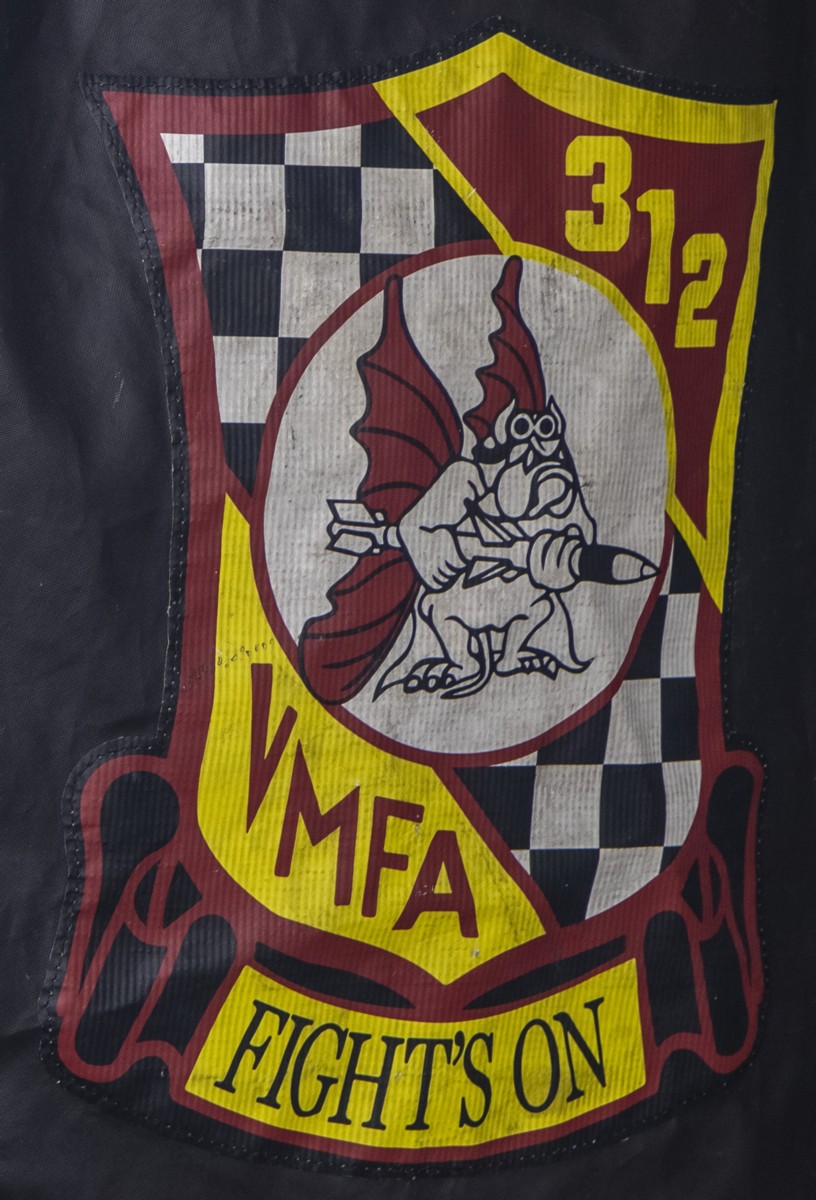  |
||||||
| | seaforces.org | US Marine Corps Air units start page | |

